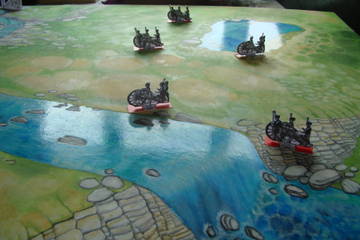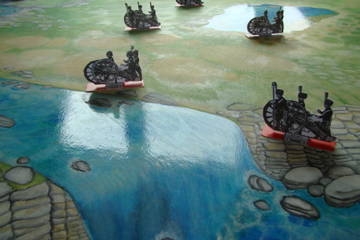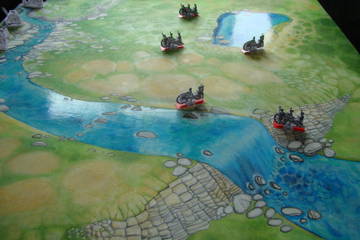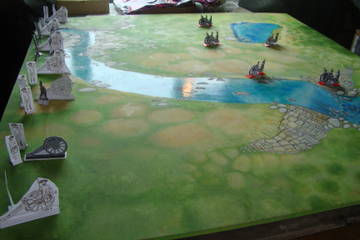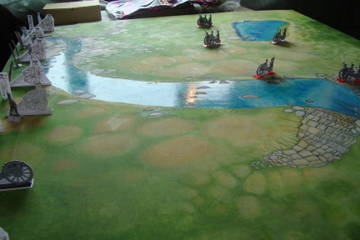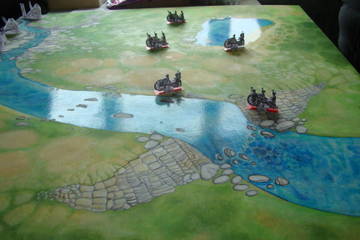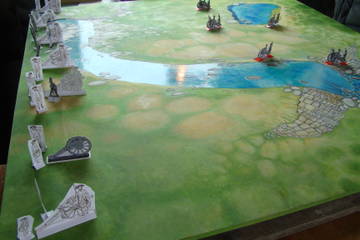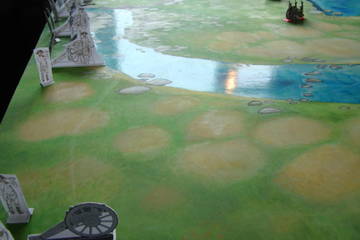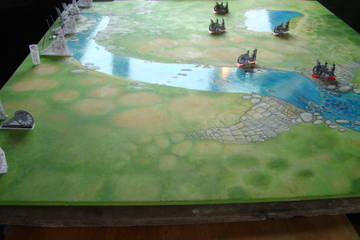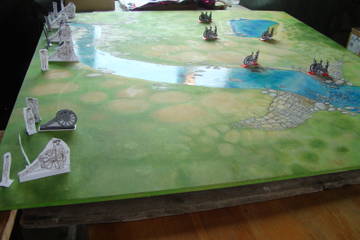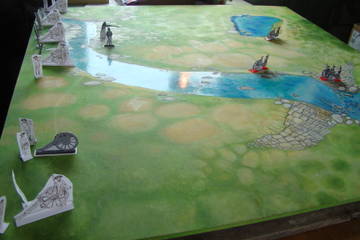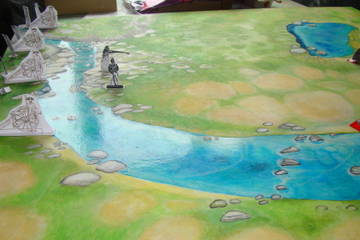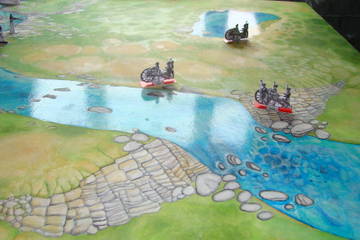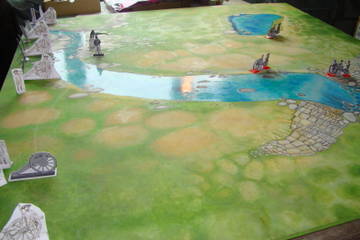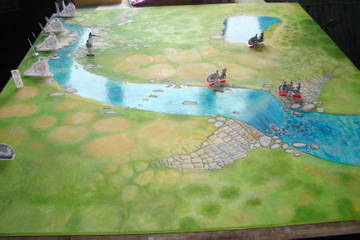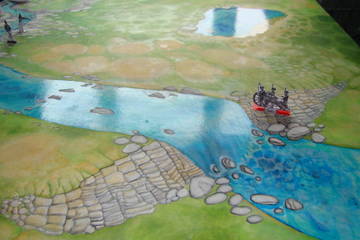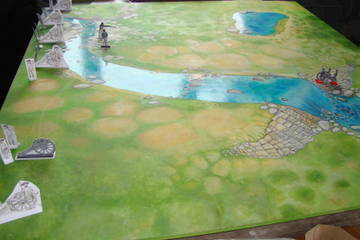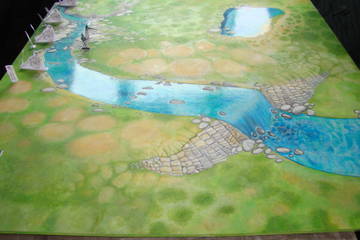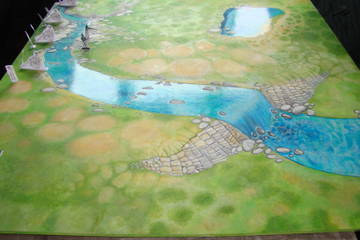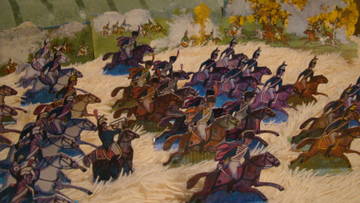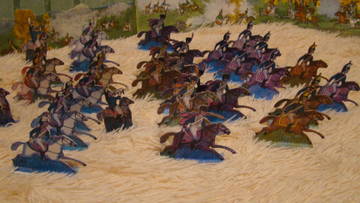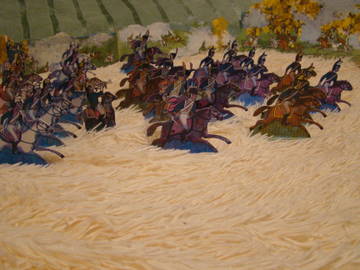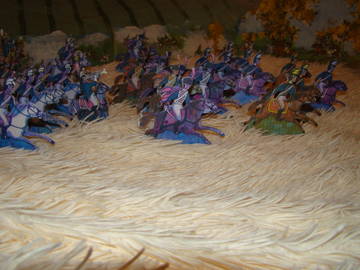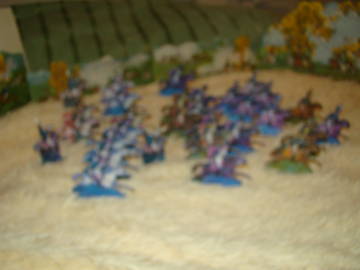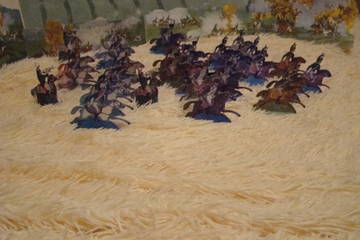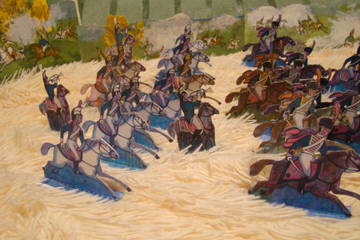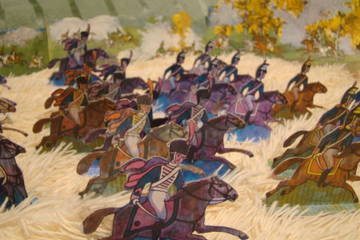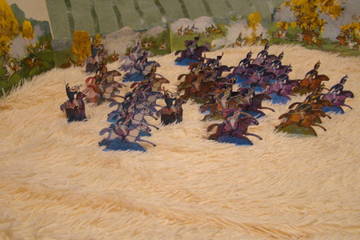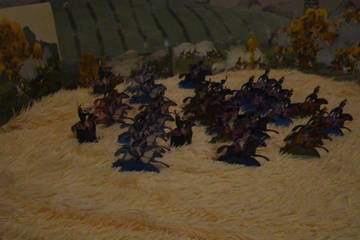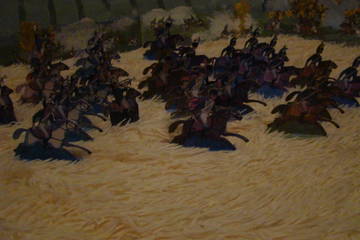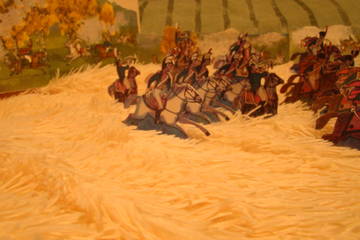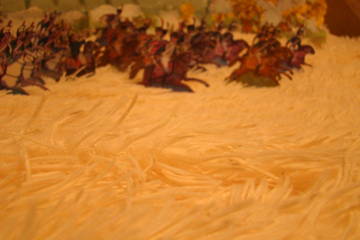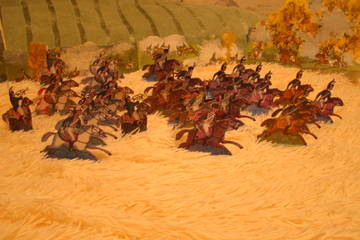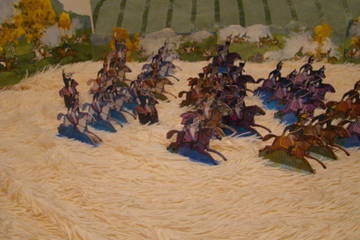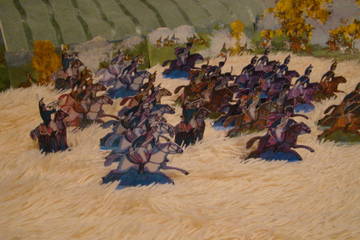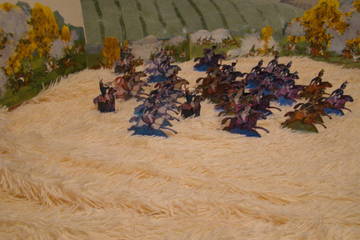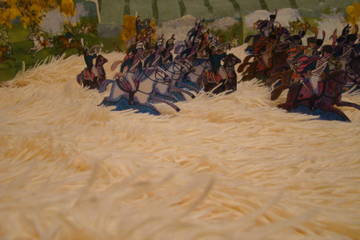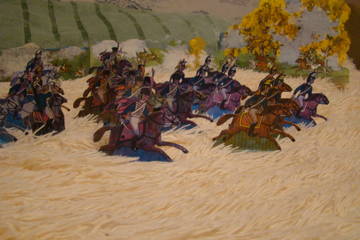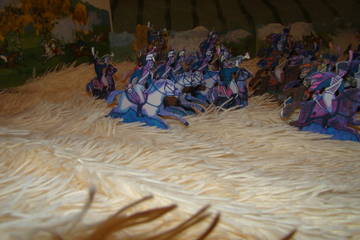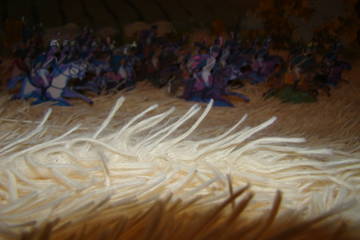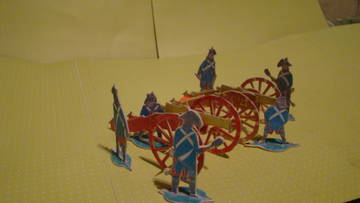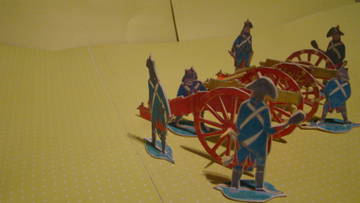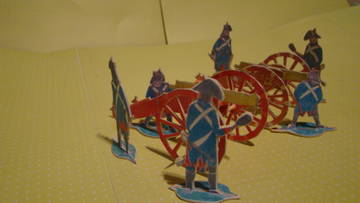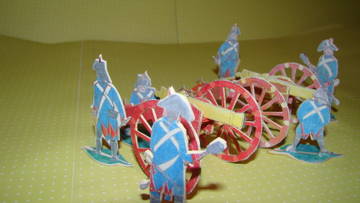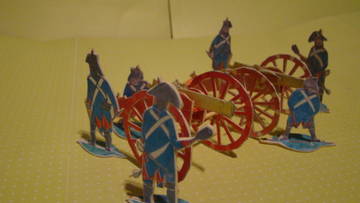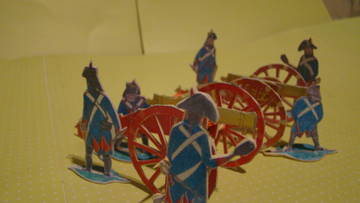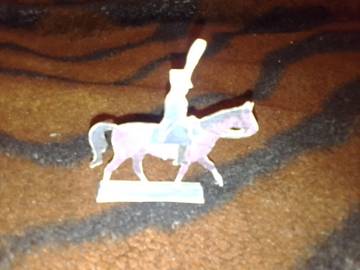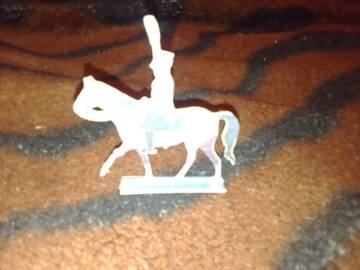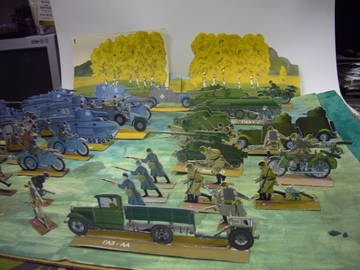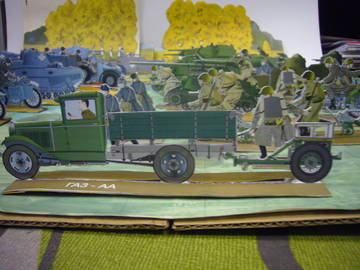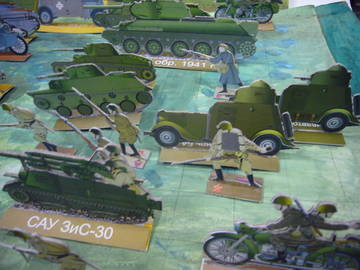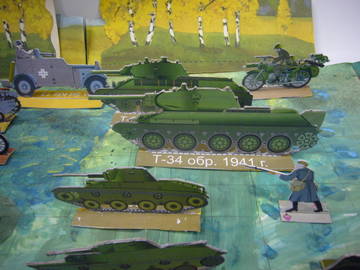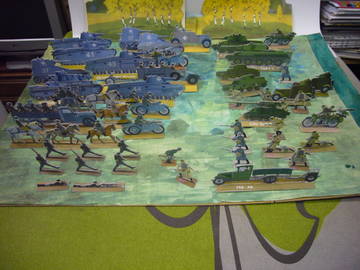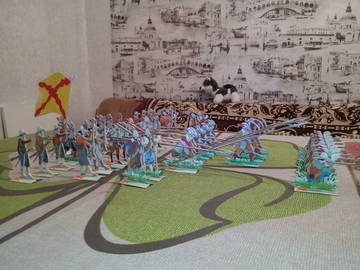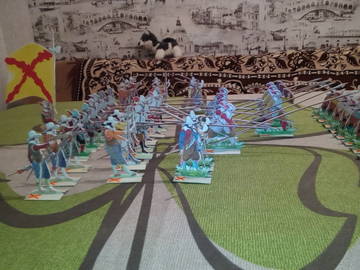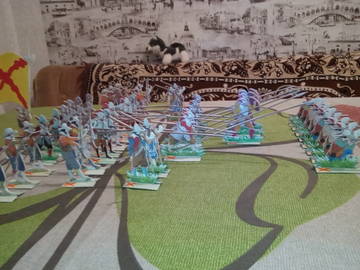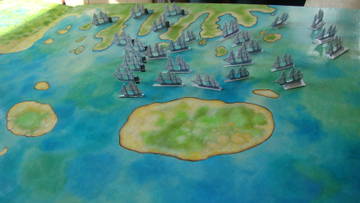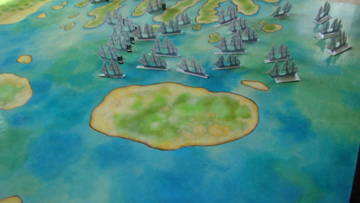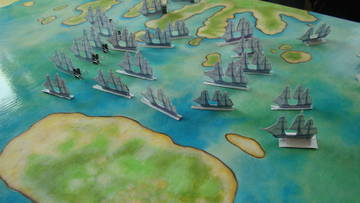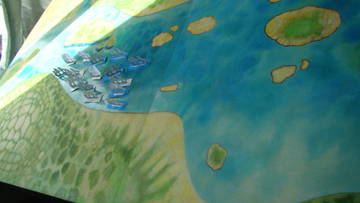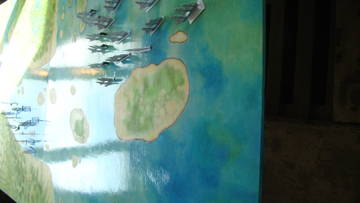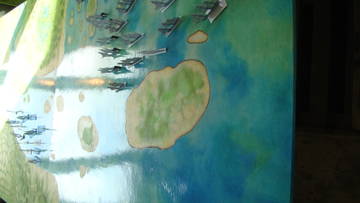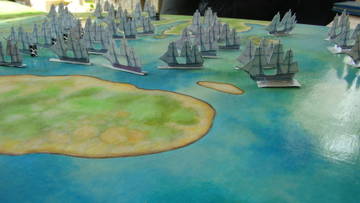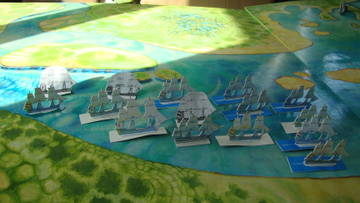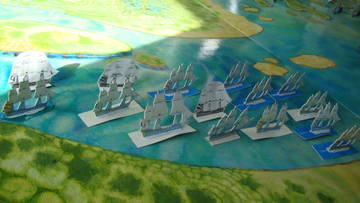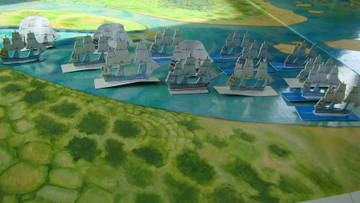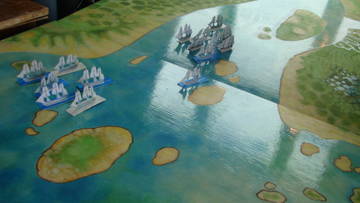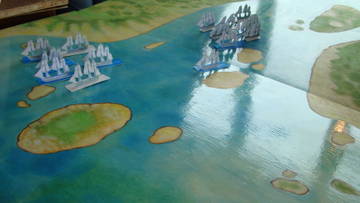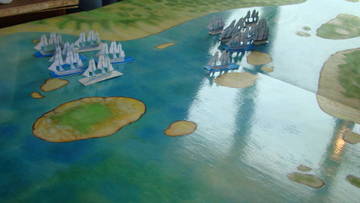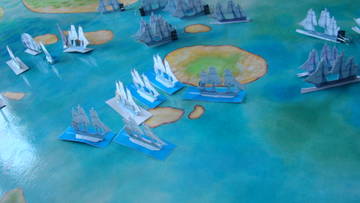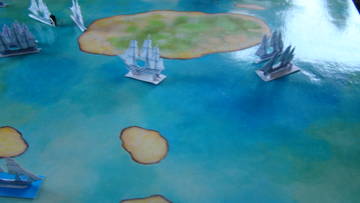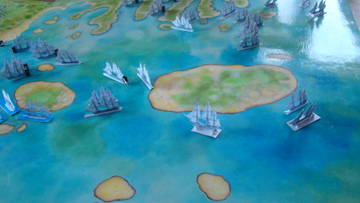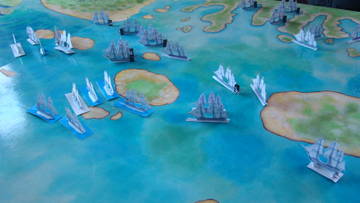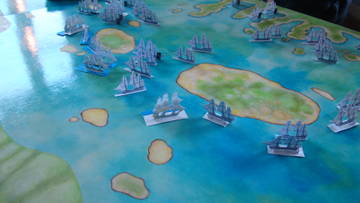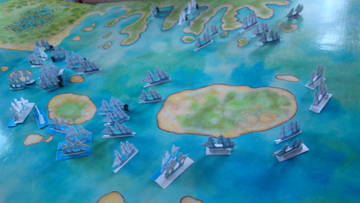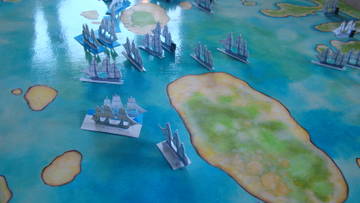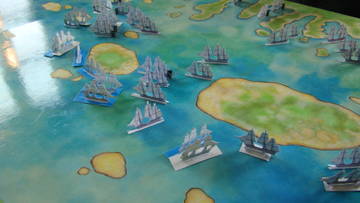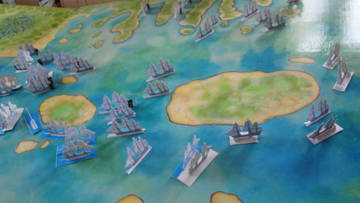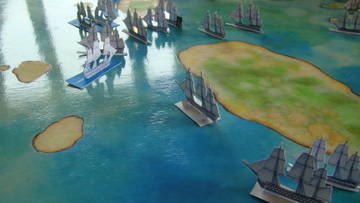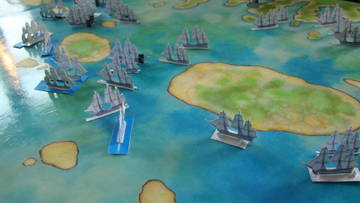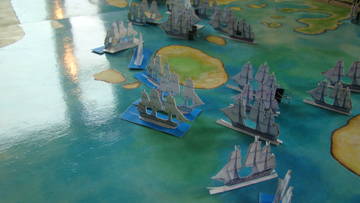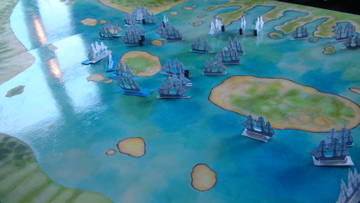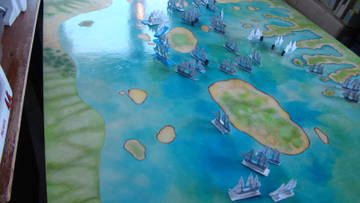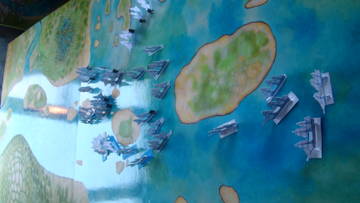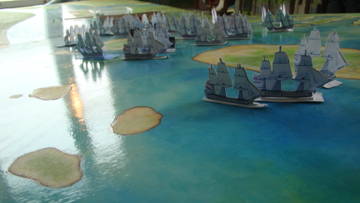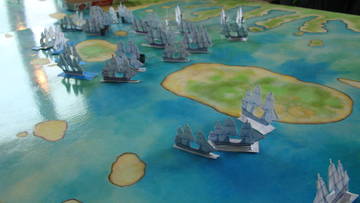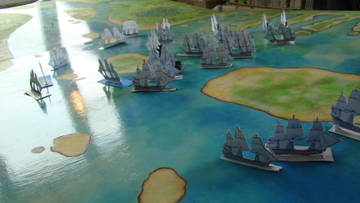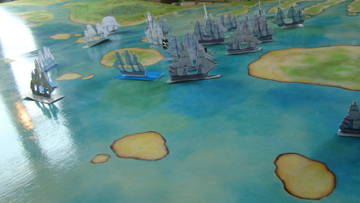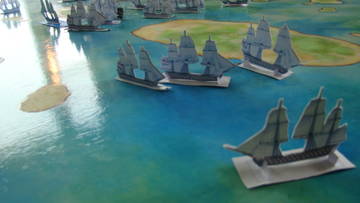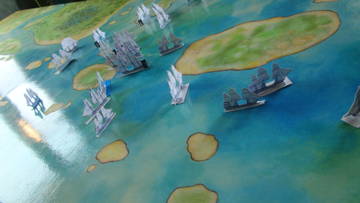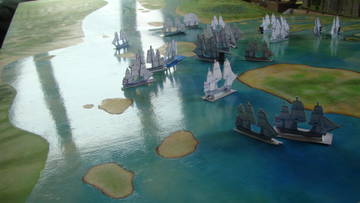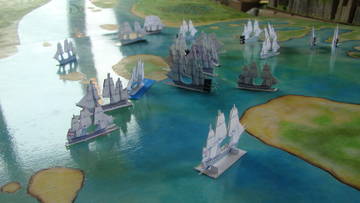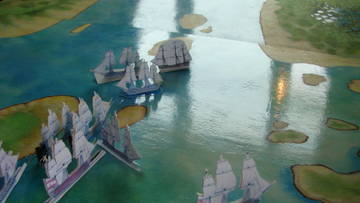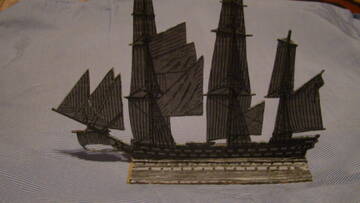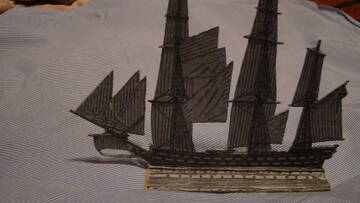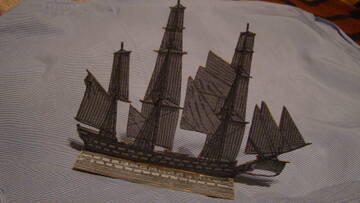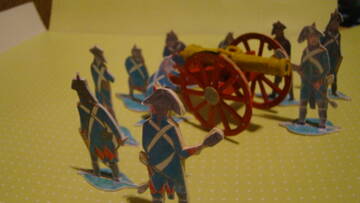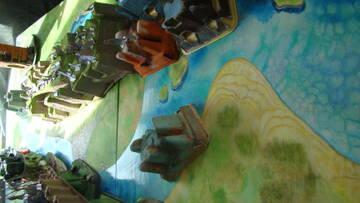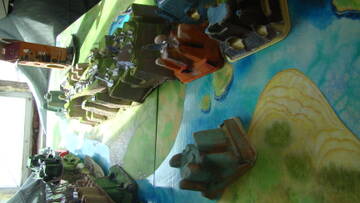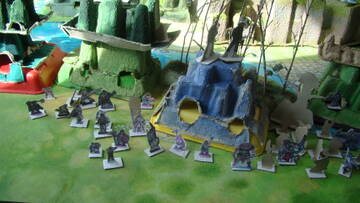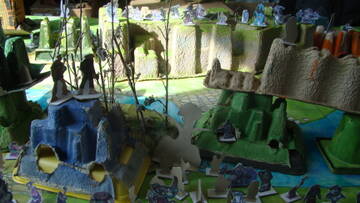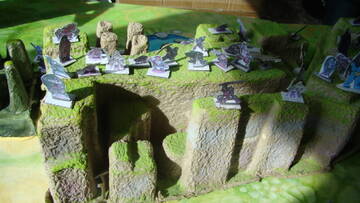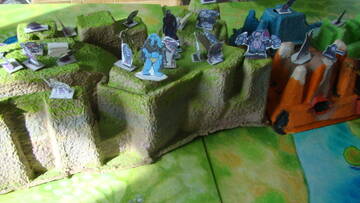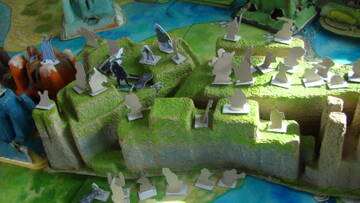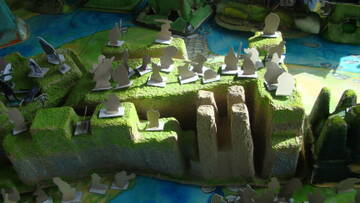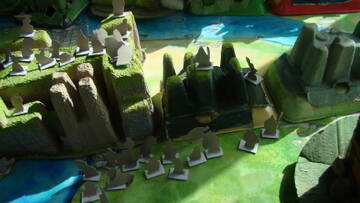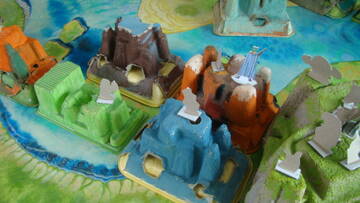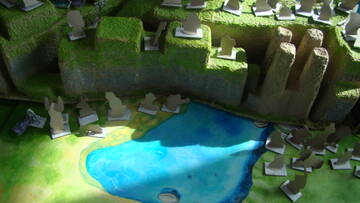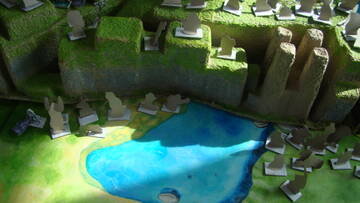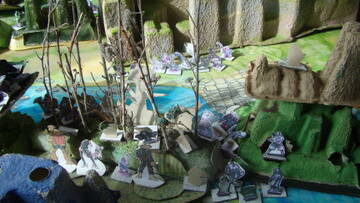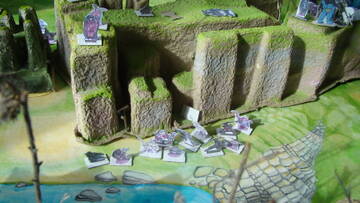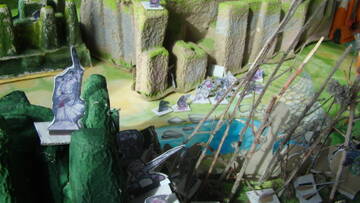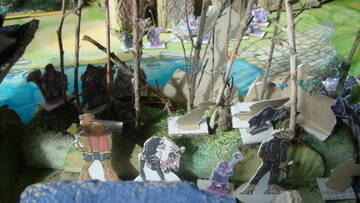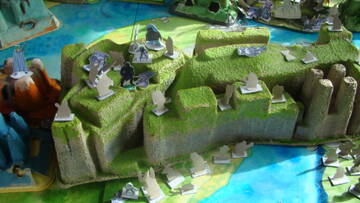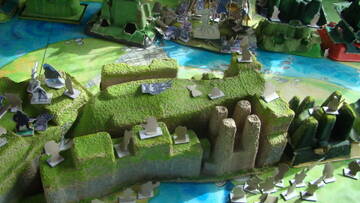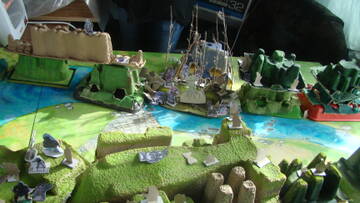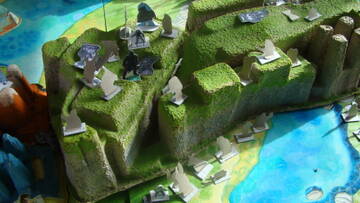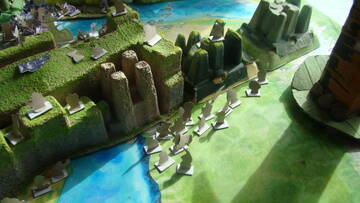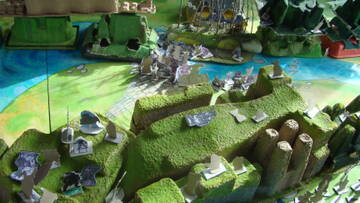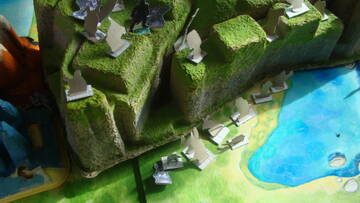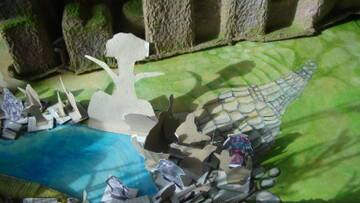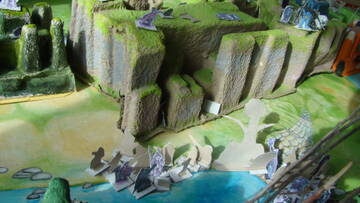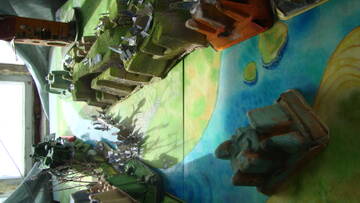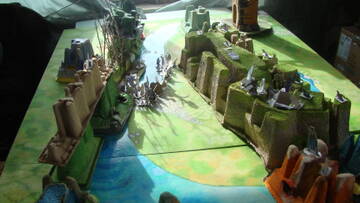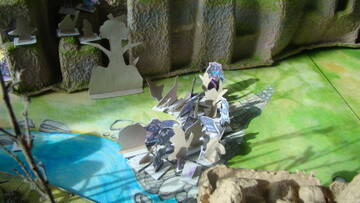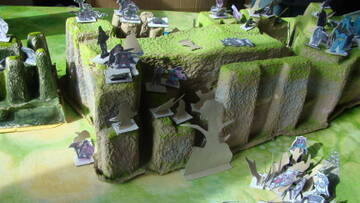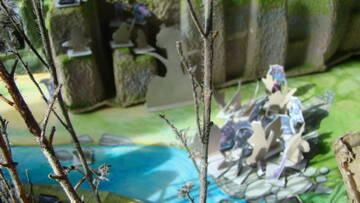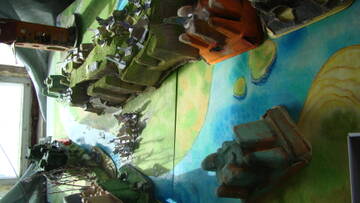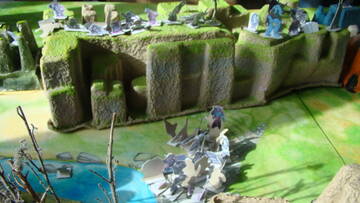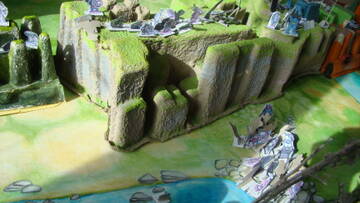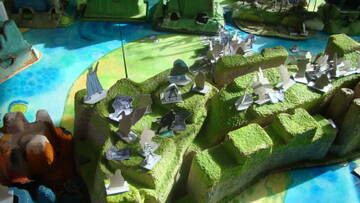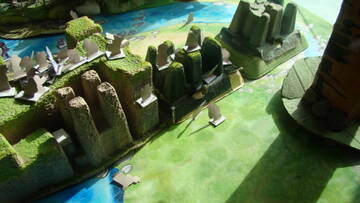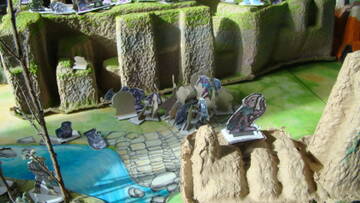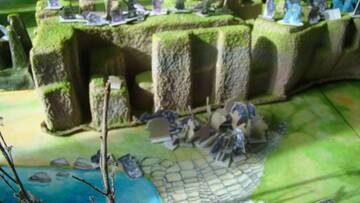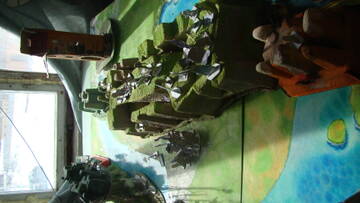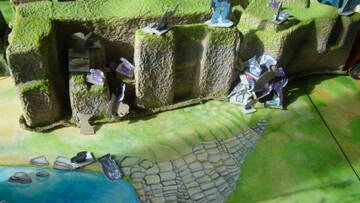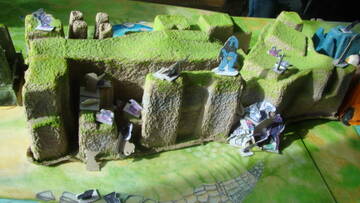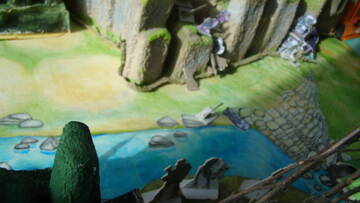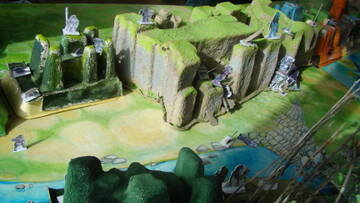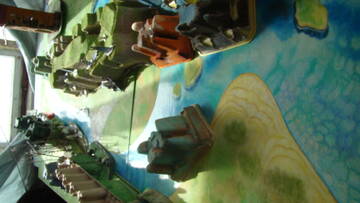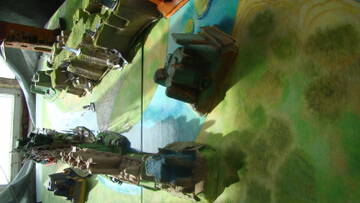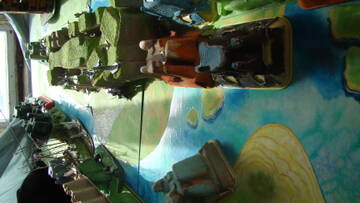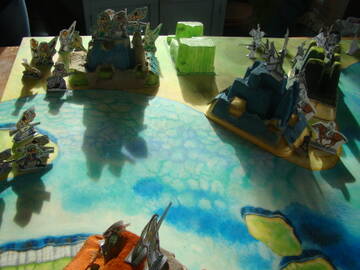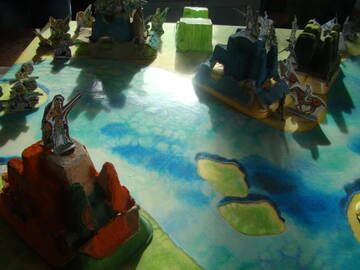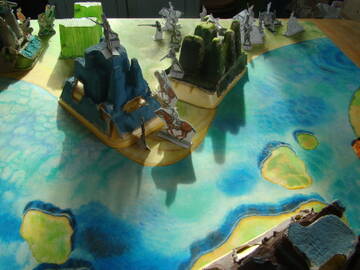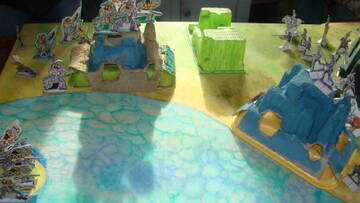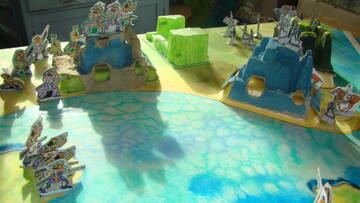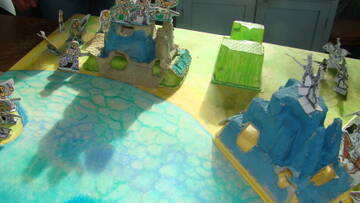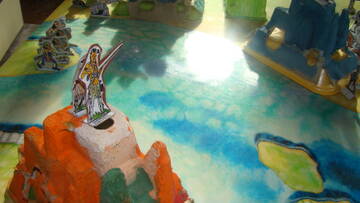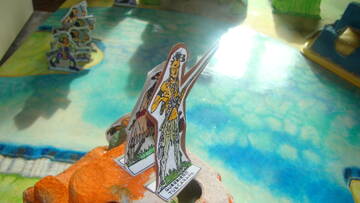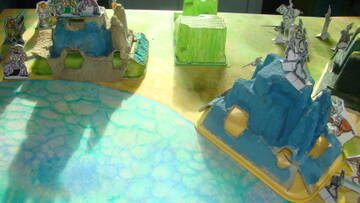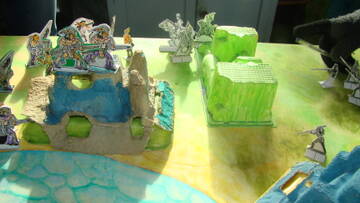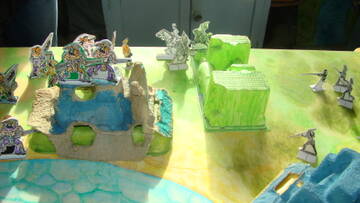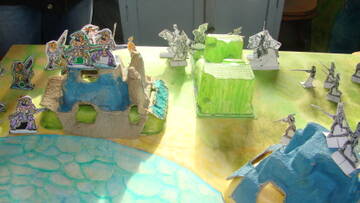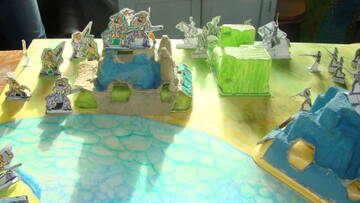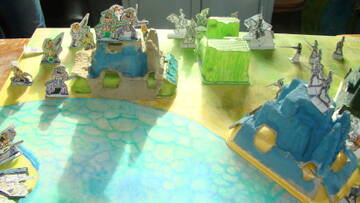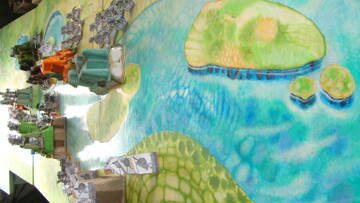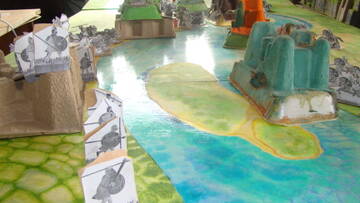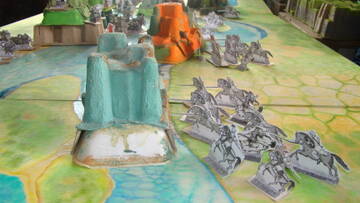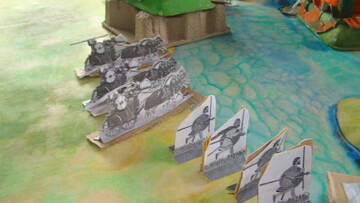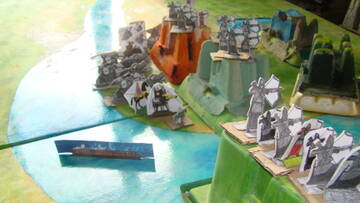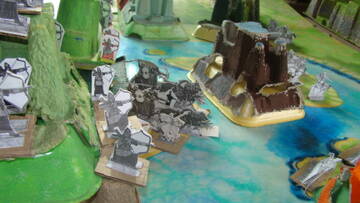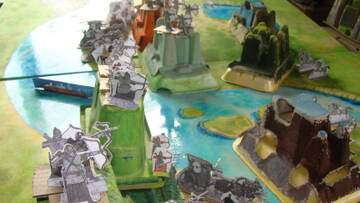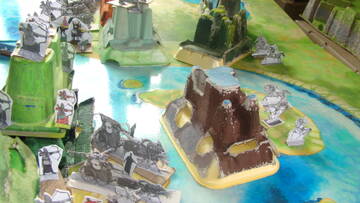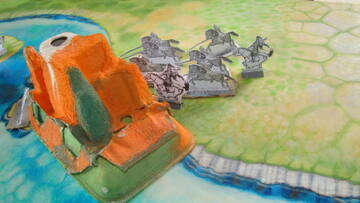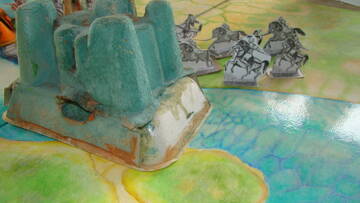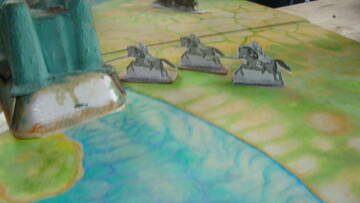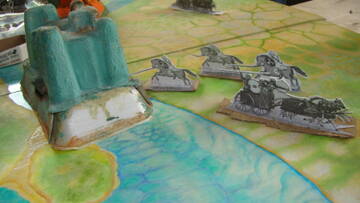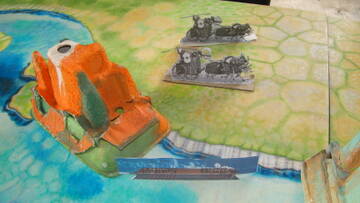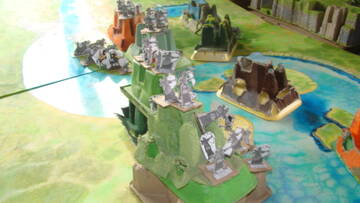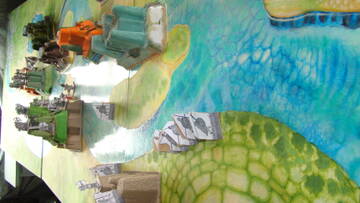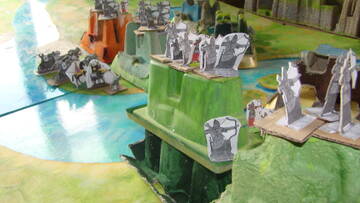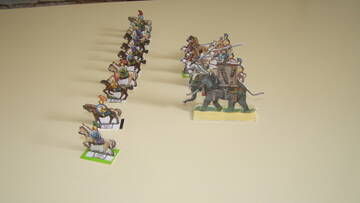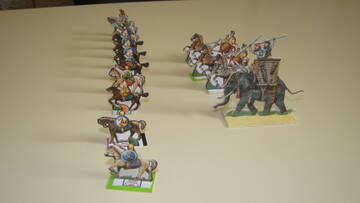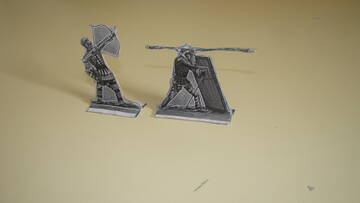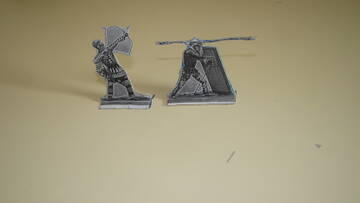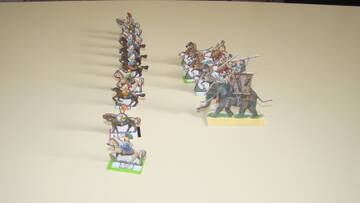Войска Alexander'а
Сообщений 331 страница 354 из 354
Поделиться33323.02.22 21:10:35
оенные поражения в Северной войне (1700-1716 гг.) Личная уния Саксония-Польша, каждая выделена зеленым и белым. До 1763 года одной из важнейших политических целей правителей Саксонии было создание прямого сухопутного сообщения между Саксонией и Польшей, сначала за счет Австрии, а затем Пруссии. В постоянном движении между двумя враждующими государствами Саксония потерпела поражение со своими политическими амбициями. Около 1700 года Саксония считалась более мощной государственной структурой в европейском масштабе из-за своей закрытой территории. В самой империи имперские князья стремились к политическому суверенитету от установленного господства династии Габсбургов . В частности, принцы Бранденбургский, Баварский и Ганноверский (Англия) поэтому стремились приобрести королевскую корону, расположенную за пределами империи, чтобы избежать угрозы потери ранга и власти. Помимо Бранденбурга, курфюрст которого короновал себя в Пруссии в 1701 году , и Ганновера, это удалось сделать только Августу фон Саксону. В июне 1697 г. на избирательном поле в Воле, вопреки всем первоначальным ожиданиям, был избран королем Польши. С тех пор Саксония, которая теперь была частью личного союза Саксония-Польша, была вовлечена в различные политические и военные конфликты, которые саксонская армия, в частности, не могла выдержать в долгосрочной перспективе, и значительно превысила полномочия Саксонии. электорат. Фридрих Август I чувствовал себя новоизбранным королем Польши от шведского короля Карла XII. под угрозой. Слишком мало полков было доступно для защиты Польши, а турецкая война немецкого императора в Венгрии означала, что 12000 его лучших солдат удерживались в южной Европе до 1699 года. Он начал набор новых войск и создание новых полков. Многие из этих полков дислоцировались на севере Польши, чтобы как можно быстрее отразить возможное нападение шведов. Отступление саксов после битвы на Даугаве в 1701 году Курфюрст не хотел ждать нападения шведского короля. Весной 1700 года он напал на шведскую Ливонию . Когда его избрали королем Польши, он пообещал связать бывшую польскую провинцию с короной. У него уже был 41 эскадрон кавалерии и 24 батальона пехоты в полевых условиях, а также он пытался подчинить себе польские полки. Польская армия подчинялась не королю, а рейхстагу, и король был вынужден просить военной поддержки в борьбе со шведами. Быстро завоевав Ливонию, Август II надеялся получить верховное командование этой армией, чтобы привести ее к войне против Швеции. Кампания в Ливонии положила начало Северной войне . Первоначально под командованием фельдмаршала Якоба Генриха фон Флемминга крепость Дюнамюнде и Кобершанце были взяты саксонской армией. Рижская крепость дважды в 1700 году подвергалась осаде из- за отсутствия артиллерии и боеприпасов . Высадка шведских войск под командованием короля Карла XII. вынудил саксонскую армию отступить на территорию Польши после того, как саксы снова потерпели поражение в битве на Даугаве . Август Сильный, изображенный на дрезденской процессии князей Из-за неэффективности и неудачного руководства его войсками в этой кампании король Польши был вынужден увеличить и перестроить свою армию. Существующие линейные пехотные полки в течение 1701 г. должны были быть увеличены с 10 до 24. С этого момента в каждом полку должно было быть 13 рот. Кроме того, отныне каждый полк получил по гренадерской роте . Численность каждой роты увеличена с 72 до 120 человек. Король также снабдил все пехотные полки новыми кремневыми ружьями, чтобы увеличить огневую мощь линейной пехоты. Весной 1702 года, после срочной перестройки, армия из 27000 человек снова была готова сражаться с королем Швеции. Это вторглось в Польшу и угрожало столице Варшаве. Карл XII. хотел свергнуть саксонского короля с польского престола и заменить его Станиславом I. Лещинским, который был верен Швеции . Но, несмотря на уже сделанные улучшения, саксонская армия потерпела еще одно поражение в битве при Клисове , которая считалась решающей битвой для польской короны. Хотя саксонская армия была близка к победе, она была отдана легко. Саксонско-польская армия имела 2000 убитых и раненых. Кроме того, 1700 человек попали в плен в Швеции. После этого саксы потеряли контроль над Польшей в пользу победоносных шведов, которые впоследствии снова и снова побеждали саксов до 1706 года и смогли заключить победоносный мир с Альтранштедтским миром в 1706 году . Участие саксонских войск в войне за испанское наследство с 1702 по 1704 год и с 1705 по 1712 год также имело отрицательные последствия в это время . В результате негативного опыта войны со шведской армией, которая в то время считалась лучшей в Европе, были произведены перестройка и нововведения. В 1704 и 1705 годах правила учений были пересмотрены генералами фон Шуленбергом и фон Флеммингом и выпущены специально для пехоты и кавалерии. В последующие годы эти правила постоянно совершенствовались и в 1729 году были завершены введением новых правил, которые теоретически и практически применялись в полках так называемого учебного лагеря. В 1706 году был основан Тайный кабинет под руководством Оберхофмаршала Пфлугка. В состав кабинета вошли министерские посты по внутренним и внешним сношениям, а также по военным делам. Этим шагом было резко ограничено влияние саксонских поместий на военные и политические решения. Министры назначались непосредственно избирателем. Этот кабинет фактически только служил дальнейшему развитию абсолютизма, который Август Сильный хотел насаждать в Саксонии. Граф Флемминг был назначен первым министром по военным делам. С помощью этого учреждения саксонский курфюрст мог увеличить свою армию по своему усмотрению и обеспечить ее финансовыми средствами, не обращаясь к саксонскому государственному парламенту с просьбой об этом. Этот кабинет стал основой для массового расширения саксонской армии как во время Северной войны, так и после нее. Во время Северной войны у полков в основном не было той общей численности, которую требовал курфюрст и с которой он рассчитывал в боях. Август II оставил за собой право решать все акции сам. Он вел учетные карточки на всех командиров с точным описанием лидерства и образа жизни. Пенсии офицеров также фиксировались избирателем лично. Согласно саксонской традиции, Август II усилил свою постоянную армию в Северной войне наземными ополченцами. Они в основном отвечали за защиту национальных границ. Ополченцы состояли из саксонских граждан , которых дважды в год призывали на боевую службу и боевую подготовку. Эти ополчения были важным резервом в перестройке 1709 и 1716 годов. Они были распущены в 1717 году и преобразованы в четыре окружных полка общей численностью 2000 человек. Реорганизация и усиление армии в мирное время (1717–1733). Полковой состав саксонской армии с 20 июня 1717 г. Отделение предоставления услуг Полки Полковые имена Сторожить два Шевалье-Гард, Гард дю Корп Кирасиры четыре Королевский принц, принц Александр, Пфлугк, воины драгуна шесть Баудиссин, Унру, Бильке, Биркхольц, Клингенберг Гусары а нет собственного имени пехота девять Первая гвардия, Вторая гвардия, Королевский принц, Вайссенфельс, Димар, Фицнер, Пфлугк, Дроски, Маршалл артиллерия Домашняя артиллерия, полевая артиллерия, артиллерийский дивизион Спецназ рота понтонеров , рота горняков После того, как участие саксов в Великой Северной войне подошло к концу, последовал период более 15 лет мира, который август использовал для создания хорошо обученной и современной армии в ходе дальновидной военной реформы. Армия должна быть доведена до 30 000 человек, чтобы она могла лучше, чем раньше, реализовывать свои внешнеполитические цели. В январе 1717 года командиры полков также стали начальниками полков. Это должно сблизить старших офицеров с их солдатами. Кроме того, новобранцы были набраны почти исключительно из Саксонии, и по приказу саксонского курфюрста нельзя было больше использовать насилие при их вербовке. В этом отношении саксонская армия отличалась от армий большинства других германских государств. В начале 18 века прусская армия состояла в основном из иностранных наемников, которые собирались вместе или подвергались насильственному давлению. Расформированные полки Отделение предоставления услуг Полки Полковые имена Кирасиры четыре Лейбдрагонер, Байройт, Браузе, Сенпол драгуна а Майерс (далее - Польская гвардия) пехота пять Королева, Leibregiment, Вольферсдорф, граф Мориц Саксонский, Зейдлиц Свободный корпус Maiersche Freikorps, Heiduckenkompanie Лагерь близ Цайтхайна, картина Иоганна Александра Тиле 1730 г. 28 августа 1726 г. было принято постановление об инвалидах и учрежден корпус инвалидов. Он состоял из двух батальонов по четыре роты в каждом. Каждая рота имела номинальную численность 166 человек. Инвалиды были разделены на две группы: инвалиды и инвалиды. Этим солдатам оставалось только выполнять караульные и оккупационные обязанности. Они использовались на саксонских крепостях Кенигштайн , Зонненштайн , Виттенберг , Плейсенбург , Мейсен , Цайц , Вальдхайм , Айслебен и Вермсдорф . В корпусе было четыре офицера, генерал-лейтенант , генерал-майор и два полковника . После того, как реформы были в основном завершены, в 1730 году курфюрст устроил большой полевой лагерь. Это вошло в саксонскую военную историю под названием Zeithainer Lager . Здесь монарх представил свою армию князьям Европы. В то время саксонская армия насчитывала 40 кавалерийских эскадронов и 76 батальонов пехоты. Всего это составило 26 462 человека. Нынешний военный король Фридрих Вильгельм I в Пруссии с признательностью отметил уровень боеспособности саксонской армии: «Три полка Кронпринц хорошие, Вайссенфельд хорошие, очень хорошие. Пфлугк очень несчастный, плохой. Хорошо отдавать приказы. Я видел команды от кавалерии, которые считаю очень правильными ". Саксонская армия в лагере Цайтхайн 1730 г. Избирательная саксонская армия была представлена следующим образом: полк Подразделение Трудовые ресурсы Конная гвардия Кавалер гвардии эскадрилья 153 Grand Mousquetairs эскадрилья 165 Guard du Corps шесть эскадрилий (12 рот) 867 Карабинеры-гвардейцы шесть эскадрилий (12 рот) 881 Полевая кавалерия Кирасиры четыре полка (по три эскадрильи) каждая 579 драгуна четыре полка (по три эскадрильи) каждая 587 Гренадеры на лошадях две эскадрильи (четыре роты) 317 Всего кавалерия 40 эскадрилий (76 рот) 7047 пехота Кадетский корпус компания 158 Швейцарская гвардия компания 120 Гренадерская гвардия один батальон (12 рот) 1507 Янычары один батальон (четыре роты) 674 Полевые полки (11) два батальона (восемь рот) каждый 1434 Бесплатные компании три компании По 160 артиллерия один батальон (четыре роты) 658 Инженерный корпус 44 год Всего пехоты * 26 батальонов (111 рот) 19 415 Артиллерия входит в общее количество пехоты. В 1732 году Саксония была разделена на четыре генерала, и войска впервые были размещены в гарнизонах. Это снова имело значительные преимущества с точки зрения дисциплины, обучения и руководства полками. До этой реформы подавляющее большинство новобранцев размещалось в частных домах. Часто они были плохо оборудованы и переполнены. С этого момента избиратель также обеспечивал содержание полков, чтобы больше не было жульничества в численности и численности полков. В ходе этого одиннадцать пехотных полков были увеличены с восьми до двенадцати рот. С доставкой солдат и офицеров из двух рот было сформировано трое. Бюджет компании сократился со 176 до 120 человек. Ниже приводится список всех полков саксонской армии в 1732 году, а также их гарнизонные города и места размещения, насколько их еще можно отследить: Гарнизон саксонских полков около 1732 г. полк гарнизон Дальнейшие местоположения компаний пехота 1-й гвардеец Наумбург Цайтц , Лейпциг, Борна , Делич , Цербиг 2-й гвардеец Губен Luckau , Vetschen , Гольсен , Фюрстенберг , Triebel , Lübbenau , Форст , Spremberg Лейб-гренадерская гвардия Дрезден Мейсен, Rosswein , Mittweida , Rochlitz , Франкенберг , Geithain , Leisnig IR Sachsen-Weisenfels Langensalza Зангерхаузен , Таннштадт, Томасбрюк ИК Саксония-Гота Баутцен Каменц , Гроссенхайн ИК от Wilcke Торгау Бельциг , Ниемегк , Кирххайн , Зонневальде , Йессен , Зана , Либенверда ИК ты Кайла Гримма Эйленбург , Вурцен , Биттерфельд , Бад-Дюбен , Бельгерн ИК от Haxthausen Цвикау Нойштадт-ан-дер-Орла , Вайда , Плауэн-Пауса , Йоханнгеоргенштадт , Айбеншток , Шайбенберг ИК из Марке Фрайберг Хемниц , Шнеберг , Йохштадт , Шлеттау , Аннаберг-Бухгольц ИК наследный принц Grossenhain Никакой дополнительной информации ИК от Löwendahl Lommatzsch Никакой дополнительной информации ИК Саксония-Веймар Бельгийцы Никакой дополнительной информации Недействительные компании Виттенберг, Плейсенбург, Кенигштайн, Штольпен , Зонненштайн кавалерия Гвардейские кавалерийские полки Carde du Corps Дрезден Dippoldiswalde , Wilsdruff , Пирна, Radeburg , Radeberg , Нойштадт , Kötzschenbroda , Lohmen Карабин гвардии Время Pegau, Freyburg, Гройч , Шкойдицы , Lauchstädt , Тойхерн , Profen , Langendorf , Гросгёршен , Schönburg , Ихтерицы Кирасиры наследный принц Ошац Риза , Ломматч, Носсен , Пениг, Дёбельн Принц Фридрих Цвикау Штольберг , Шварценберг , Вердау , Криммичау , Ленгефельд , Лангенбернсдорф воинов Наумбург Артерн , Вие , Россбах , Ауэрштедт , Донндорф , Ристедт из Поленца Dahlen Штрела , Шильдау , Муцшен , Требсен , Райхенбах, Тальвиц огня Pretzsch Герцберг , Аннабург , Преттин , Мюльберг из Нассау Баутцен Кенигсбрюк , Райхенбах Граф Промниц Сорау Кристианштадт , Трибель , Мускау , Хойерсверда Гренадеры на лошадях Фрайберг Эдеран , Мариенберг , Сайда , Хайнихен , Жшопау , Фрауэнштейн Драгунские полки от Голдакера Cölleda Гебезее , Кельбра , Гросготтерн , Негельштедт , Канневурф из Катте Райхенбах Ауэрбах , Эльсниц , Аума , Триптис из Арнштедта Шмидеберг Кемберг , Грефенхайнихен , Доммитч Шевалье де Сакс Luebben Швайниц , Шлибен , Доберлуг , Калау Либерозе , Пфёртен Кроме того, были возвращены все войска иностранных правителей, которым платили саксонскую заработную плату. Основанный его отцом кадетский корпус в 1723 году был переименован в Рыцарскую академию . Академии было выделено собственное здание в Дрездене. В 1732 году кадетский корпус переехал в дом на Риттерштрассе в Дрездене, который был построен Ваккербартом за свой счет и первоначально в нем жили лейб-гвардейцы графа Рутовского. С 1730 по 1733 год устав армии был снова пересмотрен. Комиссия, состоящая из высокопоставленных саксонских офицеров, приняла правила по экономике, вооружению, униформе и отпуску людей. Создав свою армию, Август Сильный попытался избежать дальнейшей войны. Из своего печального опыта во время Великой Северной войны он знал, что проигранная битва может стать концом его кропотливо построенной новой армии. У него не было ни финансовых средств, ни жителей, чтобы восстановить саксонскую армию. В последние годы своего правления Август Сильный создал еще два кирасирских полка, а также два полка Чевольже и четыре пехотных полка. Когда Август II умер в Варшаве 1 февраля 1733 года, он оставил саксонскую армию, которая насчитывала более 26000 человек и соответствовала очень высоким стандартам как в обучении солдат, так и в их снаряжении. Саксонская армия могла противостоять любой другой европейской армии того времени. - https://deru.abcdef.wiki/wiki/Schsische_Armee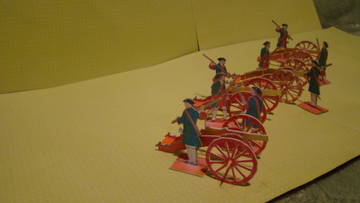
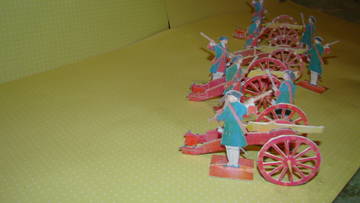
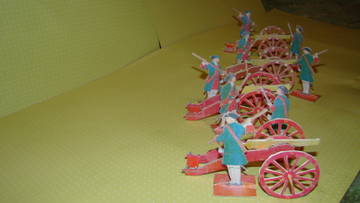
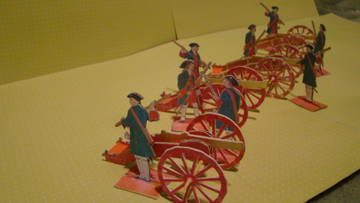
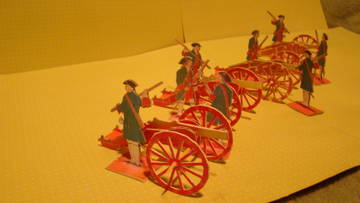
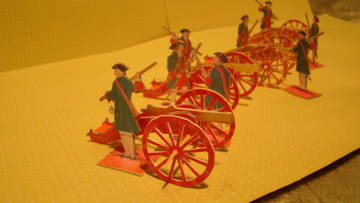
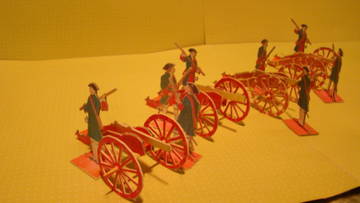
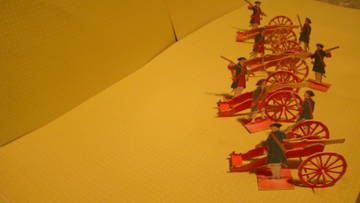
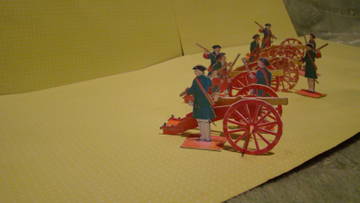

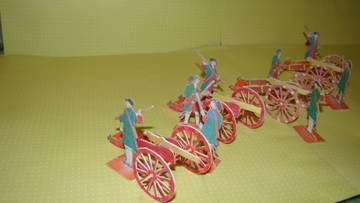
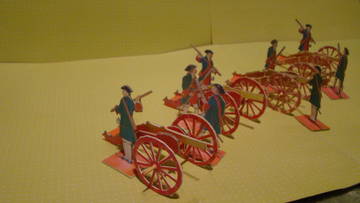
Поделиться33423.02.22 21:18:54
The word "artillery" originated in the Middle Ages from the Old French atellier meaning "to arrange", and attillement meaning "equipment". Artillery continued to gain prominence and in the 18th century Jean-Baptiste de Gribeauval, a French artillery engineer introduced the standardization of cannon design. The standardized interchangeable parts of these guns made their production and repair much easier. Artillery became the most lethal form of land-based armament; in the Napoleonic Wars and World War I the majority of combat deaths were caused by artillery.
Officer of artillery Artillery officer had greater responsibility than did an officer of cavalry or infantry. An infantry officer had to care for about 150 men. A cavalry officer had to watch over 100 men, but he was also responsible for 100 horses. By comparison, an artillery officer in a battery had responsibility for about 100-200 men, 200-300 horses, 6-8 guns, numerous limbers, caissons, a traveling forge, a battery wagon and supply wagons.
According to some military experts "The French artillery has always ranked very high. Almost all improvements made in gunnery, during the last three or four centuries, have originated with the French. The theoretical branch of artillery has also been constantly a favorite science with the French; their mathematical turn of mind favors this; and the precision of language, the scientific method, the soundness of views, which characterize their artilleristic literature, show how much this branch of science is adapted to the national genius." ("The Armies of Europe" in Putnam's Monthly, No. XXXII, published in 1855)
The Napoleonic artillery was a product of the change in French military theory that followed humiliations of the Seven Years War. (The French army was repeatedly defeated by the Prussians under King Frederick the Great). The French artillery in that time was according to the "system" of de Vallerie. The cannons were strongly built, very powerful, but very ornate and far too heavy to handle in the field.
The old system was gradually replaced by so-called Gribeauval System. The new guns were designed for more rapid movements, on and off the roads. Gribeauval stressed mobility, hitting power and accuracy. His important innovation was the elevating screw used to adjust the range of the cannon by raising or lowering its breech. Another innovation was the prolong. It was a heavy rope 30 feet long and used to connect the gun and its limber when it was necessary to fire while retiring or to unlimber the gun while crossing some difficult obstacle.
Captain of Foot Artillery
in 1812-1813. Musee de l'Armee,
France Napoleon expected excellence and competence from his gunners and he got it. In Boulogne Camps the gunners were extensively trained. "There was also much target practice; artillerymen were sometimes able to use British warships as moving targets. Davout added practice in night fighting and firing. (Elting - "Swords Around a Throne" p 534)
Young Napoleon Bonaparte The French artillery became superior to every artillery of Europe. The artillery enjoyed an unprecedented popularity among young men in France seeking career in the army.
The infantrymen and cavalrymen complained that the gunners gave themselves airs because their First Consul and then Emperor himself had been a gunner.
When Napoleon became the First Consul he established a large artillery staff under his own control. Officers from this staff supervised the production of ammunition, cannons and howitzers, operation of the artillery schools and the armament of fortresses. They served in the field armies, army corps and fortresses.
Napoleon's artillery was divided into several sections:
Foot Artillery (artillerie à pied) - eight regiments in 1805
Horse Artillery (artillerie à cheval) - six regiments in 1805
Pontoon Bridge Troops - two battalions in 1805.
They were assigned by companies to each army corps,
Cavalry Reserve, and its field train's headquarters.
When their heavy pontoon wagons were held up by
bad roads, they could improvise bridges out of any
available boats, rafts built from demolished buildings
or empty wine barrels.
Artificers (ouvriers) - nineteen companies in 1812
(the 19th was made of Spanish dererters and POWs)
The artificiers were specialists in the construction and
repair of gun carriages and other military vehicles.
They served with the field batteries and in artillery
arsenals.
Armorers (armuriers) - six companies in 1813
(the 5th consisted of Dutchmen). They repaired weapons
of all types. The armorers served with the field batteries
and in artillery arsenals.
According to Kevin Kiley "The tactical employment of French artillery could be considered reckless. Guns were considered to be the 'standards' of the artillery company. Their loss was as serious as losing an eagle. However, to gain a decisive advantage, guns were risked by corps and company artillery commanders, and by Napoleon himself.
Guns would be 'fought to the last extremity', especially on defense. Artillerymen would engage enemy assault columns 'head on.' French commanders would seldom engage in counterbattery fire, or an 'artillery duel' if you will.
French artillery Their targets were the enemy troop formations, especially the infantry. If the enemy's artillery was doing particular damage to friendly infantry and cavalry, or it was appreciably hurting their own artillery, French commanders would mass their artillery against the enemy artillery, knocking it out either gun by gun, or battery by battery. This was done effectively to the Russian batteries across the Alle River at Friedland in 1807 in support if Senarmont's attack. Guns accompanied infantry attacks, horse artillery would go in with the cavalry, unlimber close to the enemy and open a brisk, accurate fire on the opposing formations. The best example of this was in the mud and mess at Dresden in 1813. The ground being too wet and muddy for cavalry to charge effectively, Napoleon doubled up his horse teams. The threat of French horse artillery induced Austrian squares to surrender." ( Kiley - Ultimo Ratio Regum. Organization, Tactics, and Employment of Artillery in the Grande Armee, 1800-1815)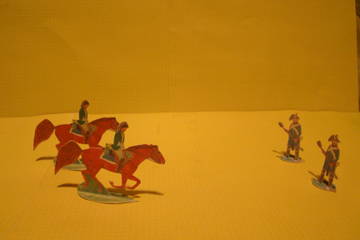
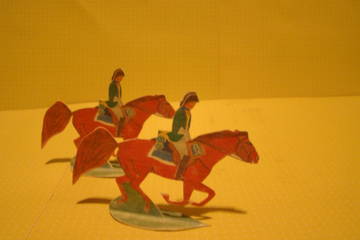

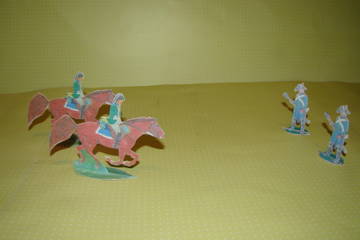


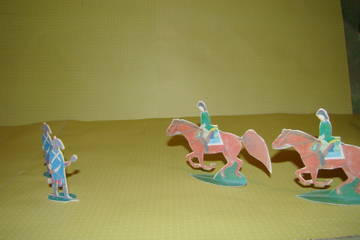

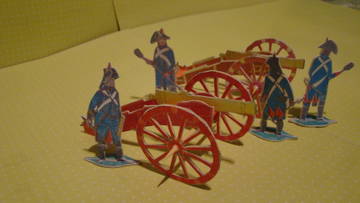

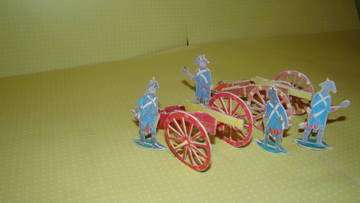
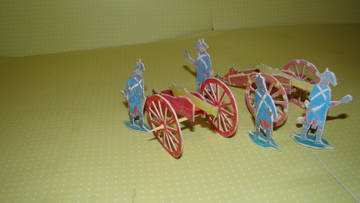
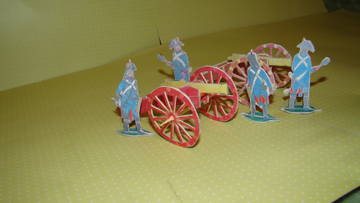
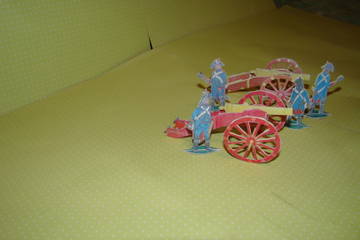
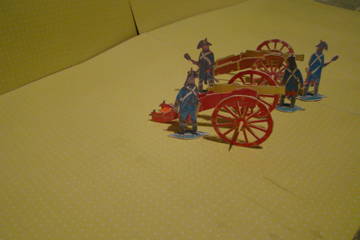
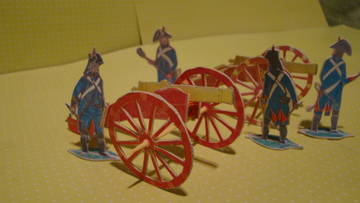
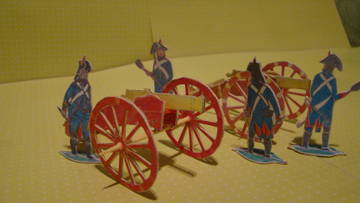
Поделиться33524.02.22 22:41:49
French Artillery, 1789-1800
By Yves Martin
1) Organization prior to the Revolution: 1789-1790
It is quite ironic that the man, whose name became synonymous with French artillery predominance for the next 25 years of conflict, would die just prior to the events, which set in motion the French revolution.
Jean-Baptiste de Gribeauval, the general who so aptly reformed French artillery died on 5th May 1789. He left a branch of service well prepared for its duties and at the top of technological achievement.
The Royal Corps of Artillery was organized as follows:
7 permanent regiments:
La Fère, Metz, Besançon, Grenoble, Strasbourg, Auxonne, Toul, des Colonies.
The Corps consisted of:
98 companies of gunners
28 companies of bombardiers
14 companies of sappers
7 companies of miners
9 companies of workers
In total: 11085 men, 784 guns, and 224 howitzers/mortars
In addition, there were seven reserve regiments:
The "provincial" artillery regiments were associated geographically and organically to each standing regiment. This could add a further 9940 men. On 30th September 1789, these seven reserve regiments were disbanded, as were all provincial troops.
Seven regimental schools could provide 6 cadets per year, per school.
Technically, the Corps of Artillery was still part of the infantry branch of service. Under the title of Royal-Artillerie, it ranked 64th in the list of infantry units. It was only in September 1790 that the artillery became fully independent. Even then some confusion lasted almost throughout the entire period. Once the "amalgame" was put in effect, it resulted in all the former infantry regiments effectively disappearing - thus the artillery took the first rank in the army!
On 2nd December 1790, a decree stated the organization as follows:
7 regiments, 6 companies of miners, 10 companies of workers in total 9556 men. Additionally there were 8 companies of "invalid-gunners", an unspecified number of coastal artillery companies and the colonies artillery regiment.
Each regiment was organized into 2 battalions of 10 companies. Each battalion was subdivided into 2 divisions of 5 companies.
Each company "au pied de paix" (in times of peace) would include:
2 captains
2 lieutenants
55 NCO's and men.
The staff of the regiment was:
1 colonel
4 lieutenants-colonels
1 quartermaster-treasurer (quartier-maitre tresorier)
2 adjudants-majors
1 chaplain (aumônier)
1 surgeon-major (chirurgien major)
4 adjudants
1 drum-major (Tambour-major)
1 drummer corporal (caporal tambour)
8 musicians
3 master workers: cobbler, tailor and armorer
All miner companies were located in Verdun, each being of 4 officers and 63 men. The companies of workers were organized along the lines of the artillery companies.
The sapper companies have been amalgamated into the seven regiments. Bombardiers and sappers now had the rank of gunner.
Another important point to note is that the artillery corps was to be supervised by 9 "inspecteurs généraux" (4 lieutenants-généraux, 5 maréchaux de camp), but none had the rank of first inspector. This officialized the disappearance of this rank whose last owner was Gribeauval himself.
In total, in time of peace, artillery had a theoretical strength of 8663 men and by pushing the company strength up to 100, it could field up to 15,600 men in times of war. Also, in theory this force could man 846 guns.
2) The Organization in 1791
The regulation of 1st April 1791 presents another stage in the evolution of the artillery - very much in line with other revolutionary period decisions.
Overall, the Royal Corps of Artillery comprised of:
8 artillery regiments
6 miner companies
10 worker companies
115 officers in charge of fortresses and various duties.
a) Artillery regiments
The name and the geographical "linkage" of regiments were dropped:
La Fère became 1st artillery regiment
Metz, 2nd
Besançon, 3rd
Grenoble, 4th
Strasbourg, 5th
Auxonne, 6th
Toul, 7th
des Colonies, 8th
Each regiment was to have 2 battalions and a headquarters. Each battalion would consist of 10 companies comprising: gunners, bombardiers and sappers all having the rank of gunner.
Each company was organized into two sections, themselves into two escouades (squads). The 10 companies of each battalion in turn were organized into two divisions of 5 companies each. The theoretical strength of a regiment was therefore 90 officers and 1,117 men.
b) Miner companies:
Each had 2 sections of 4 squads each. For each company: 68 men.
c) Worker companies
Each had 4 squads (2 per section). Each company: 59 men.
On 20 September 1791, the strength of an artillery company was raised to 79 men and the regiment totaled 1,607 men. This change was prompted by alarmist speeches made at the national assembly throughout the Spring and Summer of 1791.
3) The Organization in 1792
The year 1792 is the year major instrumental and innovative changes were made - some lasting much beyond the Napoleonic period.
a) Decree of 18 March 1792 - Law of 18 March 1792.
This law created gunner companies to serve along with National Guard units. These were actually the forerunners of the so-called "regimental" artillery.
Two guns could be attached to each national guard battalion. A company of 36 national guard gunners was organized to serve these. Any other existing gunner company then operating with or within the national guard was thus "reformed". The national guard gunner companies were under the orders of the battalion commander and were not an independent body outside of the national guard. Towns which raised national guard units were expected to provide weapons, uniforms, and ammunition for these troops.
c) Decree of 17th April 1792 - Law of 29th April 1792
This even more fundamental innovation is linked to the creation of horse artillery. Following an inspection tour on the eastern border, Minister Narbonne insisted on the importance of "flying artillery" for the Prussians and Austrians - the decree/law was the immediate consequence of this inspection.
Two companies were initially created in Metz by General Mathieu Dumas under the command of Captains Chanteclair and Barrois. The 1st was dispatched to the army of Luckner and the second to the army of La Fayette. The guns were 4 pounders and 20 pound howitzers. The men were poor riders but "had the devil in their body" as a contemporary observer wrote.
Given this initial dash, all other generals began asking for similar units; thus 9 companies of horse gunners were created. These were linked to the existing foot artillery regiments. Two companies were raised for each of the first two regiments and one for the 5 others. Each company had 76 men. In order to ensure that this change was made immediate, 645 men were transferred from foot to horse service within the artillery corps - these men being in turn replaced for foot artillery service.
d) Decree of 25th may 1792 - Law of 30th may 1792
In reality, the artillery was lacking about 3000 men to be at its theoretical strength It was proposed to levy 12 men per battalion in the infantry in order to complete the corps. This was based on the assumption that many veterans of the royal army had been effectively trained in gunnery either for sea service or in America.
4) The Organization in 1793
The horse artillery gradually gained in strength and its existence confirmed via several decrees.
On 21/2/93 a decree brought the total of horse artillery companies up to 20 companies.
On 11/5/93 this went up to 22.
On 3/6/93, it was raised to 30 companies.
In addition several decrees continued to provide for replacements and transfers to ensure that the corps was up to strength.
On 21 February 1793, the project of creating regimental artillery was formalized. For each "demi-brigade", 1 company of foot artillery was attached, equipped with six 4 pounders. At the same time, the "amalgame" was set in motion bringing together into the demi-brigades, the battalions of the former Royal Army and the battalions of volunteers. In total this created 198 demi-brigades of line infantry and thus 198 artillery companies serving 1,228 four-pounder guns. In actuality this theoretical strength never probably was never reached, and the necessary equipment never pulled together for service. On 25th January 1798, this practice was to discontinued (with one notable exception for the Armee d'Orient - see below).
On 23 October 1793, the six companies of miners were transferred to the corps of engineers.
5) The Organization in 1794
On 2 July 1794, the horse artillery, previously attached to the foot artillery regiments was organized into full-fledged regiments: 9 light artillery regiments, each with 10 companies of 84 men.
6) The Organization in 1795
The law of 7 May 1795 was the first comprehensive reorganization since the start of the wars.
The artillery branch of service was composed of: Generals, troops, directions, schools and other establishments.
a) There were 20 generals in charge of both troops and equipment. Eight held the rank of general de division. Probably to be charged within each army of the command of the artillery for that army. Twelve were généraux de brigade, 8 of which being in the command of the artillery schools.
b) The troops:
8 foot artillery regiments
8 horse artillery regiments
12 companies of workers
1 corps of "pontonniers" (bridgelayers)
The regiment of artillery and the companies of workers linked to the colonies were merged into the standard army artillery (instead of being part of navy/colonies).
Each foot artillery regiment was organised as follows:
Staff: 17 men (12 officers, 5 men)
20 companies of 88 men and 5 officers for a total of 122 officers and 1,760 men
Each horse artillery regiment was composed of:
Staff: 6
6 companies of 4 officers and 72 men.
6 officers "a la suite" (following) for a total of 34 officers, 432 men.
Worker companies
4 officers and 83 men.
The "Corps des Pontonniers" was created with the aim of building and maintaining the bridges on the Rhine (so strategically crucial for the Republic):
It was headed up by a "chef de bataillon" and had 8 companies, each of 12 officers and 72 men.
In addition this law allocated the inspection and the direction of services to 226 officers established in the arsenals and fortresses: 8 generaux de division, 12 generaux de brigade, 29 chefs de brigade, 33 chefs de bataillon and 144 captains.
In total, the artillery branch of service had reached a theoretical total of 41,410 men of all ranks.
On 26th October 1795, 7 demi-brigades d'Artillerie de Marine were created, effectively putting the navy artillery to use as infantry regiments, something to be seen again later in 1813.
7) The Organization in 1798
In January 1798, the artillery attached to the demi-brigades was disbanded...except for the units leaving with Bonaparte for Egypt. Thus the Armee d'Orient was to keep throughout the campaign an organization which had long been made obsolete in Europe.
8) The Organization in 1799
A law dated 9 September 1799 laid out in great detail the final organization of the Artillery of the Revolutionary wars.
Artillery was composed of:
A specific staff: 226 officers
8 foot regiments: 15,104 men
8 horse regiments: 3,728 men
12 worker companies: 1,044 men
32 brigades of ouvriers artistes (specialist workers): 1,920 men
2 battalions of bridge layers (pontonniers): 1,198 men
The specialised school of Chalons: 136 men
8 schools linked to each regiment: 3,944 men
Employees: 561 men
In all: 27,861 men
a) Staff
8 generaux de division, 5 of which with the armies in the field
12 generaux de brigade, 10 of which with the armies in the field
29 chefs de brigade
33 chefs de bataillon
144 captains
b) Foot artillery
Each regiment: 20 companies and a total strength of 1,888 men
Staff:
1 chef de brigade
6 chefs de bataillon
1 quartermaster (quartier-maitre)
2 adjudants-majors
1 officier de sante (doctor)
4 adjudants sous-officiers
1 drum-major (tambour-major)
1 caporal tambour
8 musicians
1 tailor
1 cobbler
1 armourer
Company
2 captains (one 1st class, one 2nd class)
1 lieutenant en premier
2 lieutenants en second
1 sergent-major
1 fourrier
1 tambour
5 sergeants
5 corporals
35 gunners, 1st class
40 gunners, 2nd class
In total: 93 men
14 foot artillery companies were with the Armee d'Orient.
c) Horse Artillery
6 companies and a total strength of 466
Staff:
1 chef de brigade
1 chef d'escadron
1 quartier-maitre
1 adjudant-major
1 adjudant sous-officier
1 brigadier trompette
1 artiste veterinaire (veterinary)
1 sellier (saddle-maker)
1 bottier (bootmaker)
1 tailor
Total: 10 men
Company
1 captain (either 1st or 2nd class)
1 1st class lieutenant
2 2nd class lieutenants
1 chef
1 fourrier
4 marechaux des logis
4 brigadiers
2 trompettes
30 1st class gunners
30 2nd class gunners
Total: 76 men
4 horse artillery companies were with the Armee d'Orient.
d) Workers
Each company: 4 officers and 83 men including 30 apprentices and 40 workers
One company was with the Armee d'Orient
e) Ouvriers Artistes
1,920 men divided into 32 brigades of 60 men each.
f) Pontonniers (bridgelayers)
There were two battalions. This actually doubled the number of men dedicated to this type of work within the armies.
Each battalion: 599 men. Staff: 7 men.
The battalion had 8 companies, each company:
1 Captain (1st or 2nd class)
1 Lieutenant (1st or 2nd class)
1 sergeant-major
2 sergeants
1 caporal fourrier
4 corporals
7 workers
1 drummer
56 pontonniers
Total 74 men
g) Schools
The school in Chalons had 3 commandants considered part of the specific staff (etat-major particulier). It also had 6 professors, 50 students, 1 sergeant and 80 gunners.
The other 8 artillery schools each had 2 professors, one "repetiteur" (junior teacher), 1 sergeant-major, and 489 second class gunners.
h) Other units etc.
There were 561 "employees" which covered mostly administrative chores: arsenal controllers, veteran masterworkers etc.
There were 13 companies of veteran gunners. In total 676 men - each company having 52 men, including 4 officers and 39 gunners.
There were 130 companies of Coastal Volunteer Gunners: 9,100 men - each company having 70 men including 3 officers and 55 gunners.
Some final corrections to this organisation were made through a supplementary law on 20th September 1799:
Each of the 160 companies of foot artillery saw its strength increased by
1 lieutenant en second
1 sergeant
1 corporal
15 gunners (7 being 1st class).
9) Organization in 1800
As the revolution came to an end, a final decision was made which was to have a lasting impact during the Empire: the creation of the train of artillery through a decree dated 3rd January 1800.
Up to then, the artillery train had been organized through private companies (a similar system prevailed in most of the rest of Europe). Bonaparte was one of the many generals who complained about this, as the actual service rendered by these private companies was of low standard.
The new organization called for battalions organized in 5 companies.
One being elite dedicated to the support of the horse artillery
One in charge of the ammunition/carts etc. (Parc)
One in charge of fortresses
One in charge of the foot artillery
One served as "depot"
The elite company had 80 men (including NCOs) under the command of a marechal des logis chef, 2 marechaux des logis, and 4 brigadiers. The other companies had only 60 men.
Each battalion was under the command of one captain, one
Bibliography
"Artilleurs Francais 1720-1830" Carnet de La Sabretache; Numèro Special 1977.
General Susane. Histoire de l'Artillerie Française; Paris Reprint C.Terana 1992 (edition of 1874)
"L'Organisation Militaire Française 1789-1799" Parts 1 & 2; Carnet de La Sabretache; 4/1989 & 1/1990.
Notice Historique sur l'Organisation de l'Armée depuis la Révolution jusqu'a Nos Jours, Paris Imprimerie Nationale;1902.
I'd like to point out that the first source mentioned is a remarkable book published at the beginning of this century which lists ALL the laws, decrees etc. which resulted into changes in organisation of the French army ALONG WITH a full comment explaining why such changes were made. It's almost like having a good portion of the SHAT archives condensed in one book!
Поделиться33726.02.22 20:27:38
The naval campaigns, operations and battles of the Napoleonic Wars were events during the period of World-wide warfare between 1802 and 1814 that were undertaken by European powers in support of their land-based strategies. All events included in this article represent fleet actions that involved major naval commands larger than 3–4 ships of the line, and usually commanded by a flag officer.
The period commenced with the breakdown of the Peace of Amiens on the 16 May 1803. Three days later Cornwallis began the Blockade of Brest.[1] On 10 May 1804 William Pitt was instrumental in creating the Third Coalition.
Contents
1 The Mediterranean
1.1 1803–1804
1.2 1805 Allied operations
1.3 1806–1807 Russian operations in the Adriatic
1.4 British 1807 operations
1.5 1808–1814
2 The West Indies
2.1 1803–1804
2.2 1805–1807
3 The East Indies
3.1 1803–1811
4 The Atlantic
4.1 1803–1806
4.2 Peninsular War 1808–13
4.3 Anglo-American War of 1812–15
5 The North Sea
5.1 1807 destruction of the Danish navy
5.2 1809
6 The Baltic Sea
6.1 Russo-Swedish War of 1808–09
6.2 Anglo-Swedish War (1810–1812)
7 Citations and notes
8 References
The Mediterranean
1803–1804
Royal Navy blockade of the French ports (1803)
Royal Navy blockade of the Spanish ports (1803)
1805 Allied operations
Anglo-Russian invasion of Naples
1806–1807 Russian operations in the Adriatic
Adriatic islands campaign of 1806
British 1807 operations
Dardanelles Operation
Battle of the Dardanelles (1807)
Alexandria expedition of 1807
1808–1814
Adriatic campaign of 1807–1814
British Capri invasion
British invasion of Naples (1809)
British invasion of Sicily (1810)
Ligurian campaign of 1814
The West Indies
1803–1804
Expedition to Surinam
1805–1807
West Indies islands campaign
The East Indies
1803–1811
Linois's expedition to the Indian Ocean
Java campaign of 1806–1807
Mauritius campaign of 1809–1811
Invasion of Java (1811)
The Atlantic
1803–1806
Royal Navy blockade of the French ports (1803)
Royal Navy blockade of the Spanish ports (1803)
Action of 5 October 1804
1805 The Trafalgar campaign
1805 campaign of the sea lanes (1805–1810)
Basque Roads operation
French commerce raiding campaign of 1805
Buenos Aires operation of 1806
Escape of the Portuguese fleet
Peninsular War 1808–13
British landing in Portugal (1808)
Evacuation of the La Romana Division
Capture of the Rosily Squadron
1809 Corunna and Vigo evacuation
British landing in Portugal (1809)
Royal Navy Peninsular War supply operation
Anglo-American War of 1812–15
List of naval battles of the War of 1812
1813–1814 High Seas operations
1813–1814 Great Lakes operations
The North Sea
1807 destruction of the Danish navy
Gunboat War
1809
Walcheren Campaign
The Baltic Sea
Royal Navy supply of Prussian fortresses
Russo-Swedish War of 1808–09
The Russo-Swedish 1809 Campaign
Anglo-Swedish War (1810–1812)
Anglo-Swedish War (1810–1812)
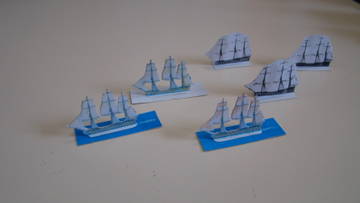

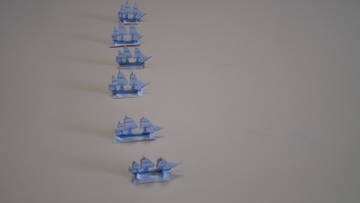

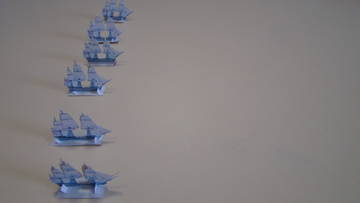
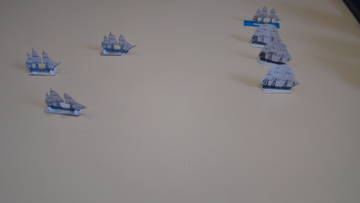
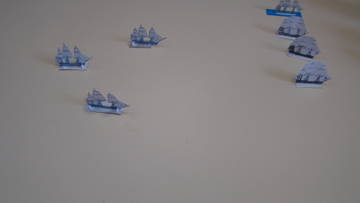
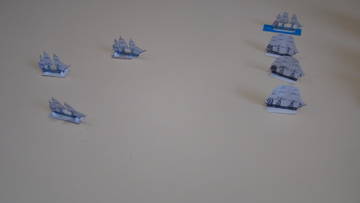
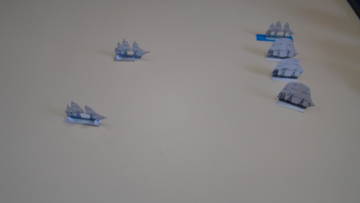
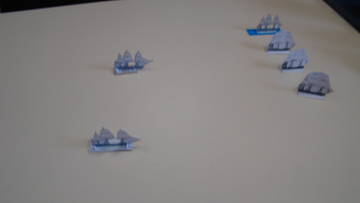
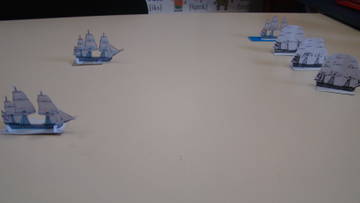
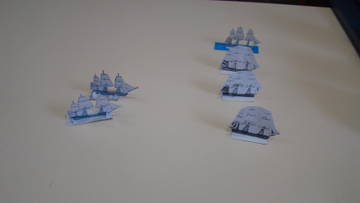
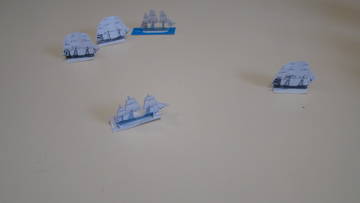
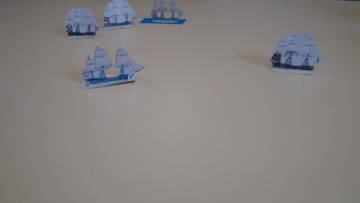
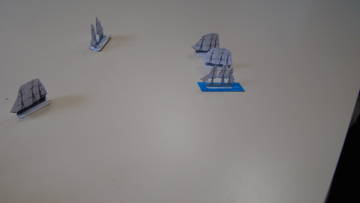
Поделиться34707.03.22 17:49:28
The Battle of Trafalgar (21 October 1805) was a naval engagement between the British Royal Navy and the combined fleets of the French and Spanish Navies during the War of the Third Coalition (August–December 1805) of the Napoleonic Wars (1803–1815).[4]
As part of Napoleon's plans to invade England, the French and Spanish fleets combined to take control of the English Channel and provide the Grande Armée safe passage. The allied fleet, under the command of French Admiral Villeneuve, sailed from the port of Cádiz in the south of Spain on 18 October 1805. They encountered the British fleet under Admiral Lord Nelson, recently assembled to meet this threat, in the Atlantic Ocean along the southwest coast of Spain, off Cape Trafalgar.
Nelson was outnumbered, with 27 British ships of the line to 33 allied ships including the largest warship in either fleet, the Spanish Santisima Trinidad. To address this imbalance, Nelson sailed his fleet directly at the allied battle line's flank, hoping to break it into pieces. Villeneuve had worried that Nelson might attempt this tactic but, for various reasons, had made no plans in case this occurred. The plan worked almost perfectly; Nelson's columns split the Franco-Spanish fleet in three, isolating the rear half from Villeneuve's flag aboard Bucentaure. The allied vanguard sailed off while it attempted to turn around, giving the British temporary superiority over the remainder of their fleet. The ensuing fierce battle resulted in 22 allied ships being lost, while the British lost none.
The tactic exposed the leading ships in the British lines to intense fire from multiple ships as they approached the Franco-Spanish lines. Nelson's own HMS Victory led the front column and was almost knocked out of action. Nelson was shot by a French musketeer and died shortly before the battle ended. Villeneuve was captured along with his flagship Bucentaure. He attended Nelson's funeral while a captive on parole in Britain. The senior Spanish fleet officer, Admiral Federico Gravina, escaped with the remnant of the Franco-Iberian fleet (a third of what it had been in number of ships); he died of wounds sustained during the battle five months later.
The victory confirmed the naval supremacy Britain had established during the course of the eighteenth century, and was achieved in part through Nelson's departure from prevailing naval tactical orthodoxy.[5]
Contents
1 Background
1.1 Pursuit of Villeneuve
1.2 Cádiz
1.3 Supply situation
2 Fleets
2.1 British
2.2 Franco-Spanish
3 Battle
3.1 Nelson's plan
3.2 Departure
3.3 Combat
3.3.1 Cosmao and MacDonnell sortie
3.3.2 The British cast off the prizes
3.3.3 Casualties
3.3.4 Aftermath
4 Results
5 Consequences
6 100th anniversary
7 200th anniversary
8 In popular culture
8.1 Novels
8.2 In other media
9 See also
10 Notes
11 References
11.1 Sources cited
12 Further reading
13 External links
Background
Main article: Trafalgar Campaign
In 1805, the First French Empire, under Napoleon Bonaparte, was the dominant military land power on the European continent, while the British Royal Navy controlled the seas.[6] During the course of the war, the British imposed a naval blockade on France, which affected trade and kept the French from fully mobilising their naval resources.[7] Despite several successful evasions of the blockade by the French navy, it failed to inflict a major defeat upon the British, who were able to attack French interests at home and abroad with relative ease.[8]
When the Third Coalition declared war on France, after the short-lived Peace of Amiens, Napoleon renewed his determination to invade Britain. To do so, he needed to ensure that the Royal Navy would be unable to disrupt the invasion flotilla, which would require control of the English Channel.[9]
The main French fleets were at Brest in Brittany and at Toulon on the Mediterranean coast. Other ports on the French Atlantic coast harboured smaller squadrons. France and Spain were allied, so the Spanish fleet based in Cádiz and Ferrol was also available.[10]
The British possessed an experienced and well-trained corps of naval officers.[a] By contrast, some of the best officers in the French navy had either been executed or had left the service during the early part of the French Revolution.[11]
Vice-Admiral Pierre-Charles Villeneuve had taken command of the French Mediterranean fleet following the death of Latouche Treville. There had been more competent officers, but they had either been employed elsewhere or had fallen from Napoleon's favour.[12] Villeneuve had shown a distinct lack of enthusiasm for facing Nelson and the Royal Navy after the French defeat at the Battle of the Nile in 1798.[13]
Napoleon's naval plan in 1805 was for the French and Spanish fleets in the Mediterranean and Cádiz to break through the blockade and join forces in the Caribbean. They would then return, assist the fleet in Brest to emerge from the blockade, and together clear the English Channel of Royal Navy ships, ensuring a safe passage for the invasion barges.[14]
The Admirals of the Campaign
Vice Admiral Horatio, Lord Nelson, by Lemuel Francis Abbott
Vice Admiral Cuthbert Collingwood
Pierre-Charles Villeneuve, the French Admiral
Federico Gravina, the Spanish Admiral
Pursuit of Villeneuve
Nelson's Search in the Mediterranean
Early in 1805, Vice Admiral Lord Nelson commanded the British fleet blockading Toulon. Unlike William Cornwallis, who maintained a close blockade off Brest with the Channel Fleet, Nelson adopted a loose blockade in the hope of luring the French out for a major battle, saying; ‘to be able to get at the enemy you must let them come out to you, if you cannot get at them.[15]</ref>[14] However, Villeneuve's fleet successfully evaded Nelson's when the British were blown off station by storms. Nelson commenced a search of the Mediterranean, supposing that the French intended to make for Egypt, but Villeneuve instead took his fleet through the Strait of Gibraltar, rendezvoused with the Spanish fleet in Cádiz, and sailed as planned for the Caribbean. Once Nelson realised that the French were crossing the Atlantic Ocean, he set off in pursuit.[b]
The Chase to the West Indies
He missed them by just days in the West Indies as a result of false information.[16]
Cádiz
Having lured the British to the West Indies Villeneuve returned from the Caribbean to Europe, intending to break the blockade at Brest.[13] Nelson, still in fear for Egypt, made to return to the Mediterranean. Luckily the fast sailing corvette taking word of his plans back to the admiralty spotted the French heading further north. On receiving this intelligence Lord Barham was alive to the enemy strategy and immediately ordered Admiral William Cornwallis to combine his squadron with that of Vice Admiral Sir Robert Calder off Ferrol and to stretch out thirty to forty leagues in to the Atlantic to block the French from entering the Channel.[17]
Calder intercepted the French resulting in an inconclusive engagement during the Battle of Cape Finisterrein which two of the Spanish ships were captured. Villeneuve abandoned his plan and sailed back to Ferrol in northern Spain.[18] There he received orders from Napoleon to return to Brest according to the main plan.[19]
Napoleon's invasion plans for Britain depended on having a sufficiently large number of ships of the line before Boulogne in France. This would require Villeneuve's force of 33 ships to join Vice-Admiral Ganteaume's force of 21 ships at Brest, along with a squadron of five ships under Captain Allemand, which would have given him a combined force of 59 ships of the line.
When Villeneuve set sail from Ferrol on 10 August, he was under orders from Napoleon to sail northward toward Brest. Instead, he worried that the British were observing his manoeuvres, so on 11 August, he sailed southward towards Cádiz on the southwestern coast of Spain.[20] With no sign of Villeneuve's fleet, on 25 August, the three French army corps' invasion force near Boulogne broke camp and marched into Germany, where it was later engaged. This ended the immediate threat of invasion.[21][22]
The same month, Admiral Lord Nelson returned home to Britain after two years of duty at sea.[23] He remained ashore for 25 days and was warmly received by his countrymen.[24] Word reached Britain on 2 September about the combined French and Spanish fleet in Cádiz harbour.[25] Nelson had to wait until 15 September before his ship, HMS Victory, was ready to sail.[26]
On 15 August, Cornwallis decided to detach 20 ships of the line from the fleet guarding the English Channel to sail southward to engage the enemy forces in Spain.[27] This left the Channel short of large vessels, with only 11 ships of the line present.[28] This detached force formed the nucleus of the British fleet at Trafalgar. This fleet, under the command of Vice-Admiral Calder, reached Cádiz on 15 September. Nelson joined the fleet on 28 September to take command.[29]
The British fleet used frigates (faster, but too fragile for the line of battle), to keep a constant watch on the harbour, while the main force remained out of sight, approximately 50 miles (80 km) west of the shore.[30] Nelson's hope was to lure the combined Franco-Spanish force out and engage it in a decisive battle. The force watching the harbour was led by Captain Blackwood, commanding HMS Euryalus.[30] His squadron of seven ships comprised five frigates, a schooner, and a brig.[31]
Supply situation
At this point, Nelson's fleet badly needed provisioning. On 2 October, five ships of the line, HMS Queen, Canopus, Spencer, Zealous, Tigre, and the frigate HMS Endymion were dispatched to Gibraltar under Rear-Admiral Sir Thomas Louis for supplies.[32][citation not found]
Battle of Trafalgar by William Lionel Wyllie, Juno Tower, CFB Halifax, Nova Scotia, Canada
These ships were later diverted for convoy duty in the Mediterranean, although Nelson had expected them to return. Similarly, HMS ''Superb'' under Captain Richard Goodwin Keats had been sent to the dockyard for a re-fit after four years at sea including the chase of Villeneuve and was expected to return to the fleet where Keats was to be Nelson’s second, but the ship was not released in time.[33] Other British ships continued to arrive, and by 15 October the fleet was up to full strength for the battle. Nelson also lost Calder's flagship, the 98-gun Prince of Wales, which he sent home as Calder had been recalled by the Admiralty to face a court-martial for his apparent lack of aggression during the engagement off Cape Finisterre on 22 July.
Meanwhile, Villeneuve's fleet in Cádiz was also suffering from a serious supply shortage that could not be easily rectified by the cash-poor French.[34] The blockade maintained by the British fleet had made it difficult for the Franco-Spanish allies to obtain stores, and their ships were ill-equipped. Villeneuve's ships were also more than two thousand men short of the force needed to sail. These were not the only problems faced by the Franco-Spanish fleet. The main French ships of the line had been kept in harbour for years by the British blockade with only brief sorties. The French crews included few experienced sailors, and, as most of the crew had to be taught the elements of seamanship on the few occasions when they got to sea, gunnery was neglected.[35] The hasty voyage across the Atlantic and back used up vital supplies. Villeneuve's supply situation began to improve in October, but news of Nelson's arrival made Villeneuve reluctant to leave port. His captains had held a vote on the matter and decided to stay in harbour.
On 16 September, Napoleon gave orders for the French and Spanish ships at Cádiz to put to sea at the first favourable opportunity, join with seven Spanish ships of the line then at Cartagena, go to Naples and land the soldiers they carried to reinforce his troops there, then fight decisively if they met a numerically inferior British fleet.[36]
Fleets
Main article: Order of battle at the Battle of Trafalgar
British
British Franco-
Spanish
First rates 3 4
Second rates 4 0
Third rates 20 29
Total ships of the line 27 33
Other ships 6 7
On 21 October, Admiral Nelson had 27 ships of the line under his command. Nelson's flagship, HMS Victory, captained by Thomas Masterman Hardy, was one of three 100-gun first-rates in his fleet. He also had four 98-gun second-rates and 20 third-rates. One of the third rates was an 80-gun vessel, and 16 were 74-gun vessels. The remaining three were 64-gun ships, which were being phased out of the Royal Navy at the time of the battle. Nelson also had four frigates of 38 or 36 guns, a 12-gun schooner and a 10-gun cutter.
Franco-Spanish
Against Nelson, Vice-Admiral Villeneuve, sailing on his flagship Bucentaure, fielded 33 ships of the line, including some of the largest in the world at the time. The Spanish contributed four first-rates to the fleet. Three of these ships, one at 130 guns (Santisima Trinidad) and two at 112 guns (Príncipe de Asturias, Santa Ana), were much larger than anything under Nelson's command. The fourth first-rate carried 100 guns. The fleet had six 80-gun third-rates, (four French and two Spanish), and one Spanish 64-gun third-rate. The remaining 22 third-rates were 74-gun vessels, of which 14 were French and eight Spanish. In total, the Spanish contributed 15 ships of the line and the French 18. The fleet also included five 40-gun frigates and two 18-gun brigs, all French.
Battle
Nelson's plan
The prevailing tactical orthodoxy at the time involved manoeuvring to approach the enemy fleet in a single line of battle and then engaging broadside in parallel lines.[37] In previous times, fleets had usually engaged in a mixed mêlée of chaotic one-on-one battles. One reason for the development of the line of battle system was to facilitate control of the fleet: if all the ships were in line, signalling in battle became possible.[38] The line also allowed either side to disengage by breaking away in formation; if the attacker chose to continue, their line would be broken as well.[37] This often led to inconclusive battles, or allowed the losing side to minimise its losses; but Nelson wanted a conclusive action, giving his well-trained crews a chance to fight ship to ship.[39]
Nelson's solution to the problem was to cut the opposing line in three. Approaching in two columns, sailing perpendicular to the enemy's line, one towards the centre of the opposing line and one towards the trailing end, his ships would surround the middle third, and force them to fight to the end.[40] Nelson hoped specifically to cut the line just in front of the French flagship, Bucentaure; the isolated ships in front of the break would not be able to see the flagship's signals, which he hoped would take them out of combat while they re-formed. This echoed the tactics used by Admiral Duncan at the Battle of Camperdown and Admiral Jervis at the Battle of Cape St. Vincent, both in 1797.[41]
The Battle of Trafalgar painted by Clarkson Stanfield in 1836
The plan had three principal advantages. First, the British fleet would close with the Franco-Spanish as quickly as possible, preventing their escape.[42] Second, it would quickly bring on a mêlée and frantic battle by breaking the Franco-Spanish line and inducing a series of individual ship-to-ship actions, in which the British knew they were likely to prevail. Nelson knew that the superior seamanship, faster gunnery and better morale of his crews were great advantages.[43] Third, it would bring a decisive concentration on the rear of the Franco-Spanish fleet. The ships in the van of the enemy fleet would have to turn back to support the rear, which would take a long time.[40] Additionally, once the Franco-Spanish line had been broken, their ships would be relatively defenceless against powerful broadsides from the British fleet, and it would take them a long time to reposition to return fire.
The main drawback of attacking head-on was that as the leading British ships approached, the Franco-Spanish Combined Fleet would be able to direct raking broadside fire at their bows, to which they would be unable to reply. To lessen the time the fleet was exposed to this danger, Nelson had his ships make all available sail (including stunsails), yet another departure from the norm.[44] He was also well aware that French and Spanish gunners were ill-trained and would have difficulty firing accurately from a moving gun platform. The Combined Fleet was sailing across a heavy swell, causing the ships to roll heavily and exacerbating the problem. Nelson's plan was indeed a gamble, but a carefully calculated one.[45]
During the period of blockade off the coast of Spain in October, Nelson instructed his captains, over two dinners aboard Victory, on his plan for the approaching battle. In an animated conversation with his favourite captain, Richard Goodwin Keats, who was expected to be his second in the forthcoming battle, Nelson explained a refined battle plan whilst the two were walking in the garden of Merton in August 1805.[46]The order of sailing, in which the fleet was arranged when the enemy was first sighted, was to be the order of the ensuing action so that no time would be wasted in forming two lines.[47] The first, led by his second-in-command Vice-Admiral Cuthbert Collingwood, was to sail into the rear of the enemy line, while the other, led by Nelson, was to sail into the centre and vanguard.[42] In preparation for the battle, Nelson ordered the ships of his fleet to be painted in a distinctive yellow and black pattern (later known as the Nelson Chequer) that would make them easy to distinguish from their opponents.[48]
Nelson was careful to point out that something had to be left to chance. Nothing is sure in a sea battle, so he left his captains free from all hampering rules by telling them that "No captain can do very wrong if he places his ship alongside that of the enemy."[41] In short, circumstances would dictate the execution, subject to the guiding rule that the enemy's rear was to be cut off and superior force concentrated on that part of the enemy's line.[35]
Admiral Villeneuve himself expressed his belief that Nelson would use some sort of unorthodox attack, presciently speculating that Nelson would drive right at his line. But his long game of cat and mouse with Nelson had worn him down, and he was suffering from a loss of nerve. Fearing that his inexperienced officers would be unable to maintain formation in more than one group, he chose to keep the single line that became Nelson's target.[49]
Departure
This section needs additional citations for verification. Please help improve this article by adding citations to reliable sources. Unsourced material may be challenged and removed.
Find sources: "Battle of Trafalgar" – news · newspapers · books · scholar · JSTOR (October 2017) (Learn how and when to remove this template message)
The Combined Fleet of French and Spanish warships anchored in Cádiz under the leadership of Admiral Villeneuve was in disarray. On 16 September 1805 Villeneuve received orders from Napoleon to sail the Combined Fleet from Cádiz to Naples. At first, Villeneuve was optimistic about returning to the Mediterranean, but soon had second thoughts. A war council was held aboard his flagship, Bucentaure, on 8 October.[50] While some of the French captains wished to obey Napoleon's orders, the Spanish captains and other French officers, including Villeneuve, thought it best to remain in Cádiz.[51] Villeneuve changed his mind yet again on 18 October 1805, ordering the Combined Fleet to sail immediately even though there were only very light winds.[52]
The sudden change was prompted by a letter Villeneuve had received on 18 October, informing him that Vice-Admiral François Rosily had arrived in Madrid with orders to take command of the Combined Fleet.[53] Stung by the prospect of being disgraced before the fleet, Villeneuve resolved to go to sea before his successor could reach Cádiz.[36] At the same time, he received intelligence that a detachment of six British ships (Admiral Louis' squadron), had docked at Gibraltar, thus weakening the British fleet. This was used as the pretext for sudden change.
The weather, however, suddenly turned calm following a week of gales. This slowed the progress of the fleet leaving the harbour, giving the British plenty of warning. Villeneuve had drawn up plans to form a force of four squadrons, each containing both French and Spanish ships. Following their earlier vote on 8 October to stay put, some captains were reluctant to leave Cádiz, and as a result they failed to follow Villeneuve's orders closely and the fleet straggled out of the harbour in no particular formation.
It took most of 20 October for Villeneuve to get his fleet organised; it eventually set sail in three columns for the Straits of Gibraltar to the southeast. That same evening, Achille spotted a force of 18 British ships of the line in pursuit. The fleet began to prepare for battle and during the night, they were ordered into a single line. The following day, Nelson's fleet of 27 ships of the line and four frigates was spotted in pursuit from the northwest with the wind behind it. Villeneuve again ordered his fleet into three columns, but soon changed his mind and restored a single line. The result was a sprawling, uneven formation.
At 5:40 a.m. on 21 October, the British were about 21 miles (34 km) to the northwest of Cape Trafalgar, with the Franco-Spanish fleet between the British and the Cape. About 6 a.m., Nelson gave the order to prepare for battle.[54] At 8 a.m., the British frigate Euryalus, which had been keeping watch on the Combined Fleet overnight, observed the British fleet still "forming the lines" in which it would attack.[55]
At 8 a.m., Villeneuve ordered the fleet to wear together (turn about) and return to Cádiz. This reversed the order of the allied line, placing the rear division under Rear-Admiral Pierre Dumanoir le Pelley in the vanguard. The wind became contrary at this point, often shifting direction. The very light wind rendered manoeuvring virtually impossible for all but the most expert seamen. The inexperienced crews had difficulty with the changing conditions, and it took nearly an hour and a half for Villeneuve's order to be completed. The French and Spanish fleet now formed an uneven, angular crescent, with the slower ships generally to leeward and closer to the shore.
By 11 a.m. Nelson's entire fleet was visible to Villeneuve, drawn up in two parallel columns. The two fleets would be within range of each other within an hour. Villeneuve was concerned at this point about forming up a line, as his ships were unevenly spaced in an irregular formation drawn out nearly five miles (8 km) long as Nelson's fleet approached.
As the British drew closer, they could see that the enemy was not sailing in a tight order, but in irregular groups. Nelson could not immediately make out the French flagship as the French and Spanish were not flying command pennants.
Nelson was outnumbered and outgunned, the enemy totalling nearly 30,000 men and 2,568 guns to his 17,000 men and 2,148 guns. The Franco-Spanish fleet also had six more ships of the line, and so could more readily combine their fire. There was no way for some of Nelson's ships to avoid being "doubled on" or even "trebled on".
As the two fleets drew closer, anxiety began to build among officers and sailors; one British sailor described the approach thus: "During this momentous preparation, the human mind had ample time for meditation, for it was evident that the fate of England rested on this battle".[56]
Combat
This section needs additional citations for verification. Please help improve this article by adding citations to reliable sources. Unsourced material may be challenged and removed.
Find sources: "Battle of Trafalgar" – news · newspapers · books · scholar · JSTOR (October 2017) (Learn how and when to remove this template message)
Nelson's signal, "England expects that every man will do his duty", flying from Victory on the bicentenary of the Battle of Trafalgar
Nelson's signal.[57]
The battle progressed largely according to Nelson's plan. At 11:45, Nelson sent the flag signal, "England expects that every man will do his duty".[57]
His Lordship came to me on the poop, and after ordering certain signals to be made, about a quarter to noon, he said, "Mr. Pasco, I wish to say to the fleet, ENGLAND CONFIDES THAT EVERY MAN WILL DO HIS DUTY" and he added "You must be quick, for I have one more to make which is for close action." I replied, "If your Lordship will permit me to substitute 'expects' for 'confides' the signal will soon be completed, because the word 'expects' is in the vocabulary, and 'confides' must be spelt," His Lordship replied, in haste, and with seeming satisfaction, "That will do, Pasco, make it directly."[58]
The term "England" was widely used at the time to refer to the United Kingdom; the British fleet included significant contingents from Ireland, Scotland, and Wales. Unlike the photographic depiction above, this signal would have been shown on the mizzen mast only and would have required 12 lifts.
As the battle opened, the French and Spanish were in a ragged curved line headed north. As planned, the British fleet was approaching the Franco-Spanish line in two columns. Leading the northern, windward column in Victory was Nelson, while Collingwood in the 100-gun Royal Sovereign led the second, leeward, column. The two British columns approached from the west at nearly a right angle to the allied line. Nelson led his column into a feint toward the van of the Franco-Spanish fleet and then abruptly turned toward the actual point of attack. Collingwood altered the course of his column slightly so that the two lines converged at this line of attack.
Artist's conception of HMS Sandwich fighting the French flagship Bucentaure (completely dismasted) at Trafalgar. Bucentaure is also fighting HMS Temeraire (on the left) and being fired into by HMS Victory (behind her). In fact, this is a mistake by Auguste Mayer, the painter; HMS Sandwich never fought at Trafalgar.[59]
Just before his column engaged the allied forces, Collingwood said to his officers: "Now, gentlemen, let us do something today which the world may talk of hereafter." Because the winds were very light during the battle, all the ships were moving extremely slowly, and the foremost British ships were under heavy fire from several of the allied ships for almost an hour before their own guns could bear.
At noon, Villeneuve sent the signal "engage the enemy", and Fougueux fired her first trial shot at Royal Sovereign.[60][61][62] Royal Sovereign had all sails out and, having recently had her bottom cleaned, outran the rest of the British fleet. As she approached the allied line, she came under fire from Fougueux, Indomptable, San Justo, and San Leandro, before breaking the line just astern of Admiral Alava's flagship Santa Ana, into which she fired a devastating double-shotted raking broadside. On board Victory, Nelson pointed to Royal Sovereign and said, "See how that noble fellow Collingwood carries his ship into action!" At approximately the same moment, Collingwood remarked to his captain, Edward Rotheram, "What would Nelson give to be here?"[63]
Artist's conception of the situation at noon as Royal Sovereign was breaking into the Franco-Spanish line
The second ship in the British lee column, Belleisle, was engaged by L'Aigle, Achille, Neptune, and Fougueux; she was soon completely dismasted, unable to manoeuvre and largely unable to fight, as her sails blinded her batteries, but kept flying her flag for 45 minutes until the following British ships came to her rescue.
For 40 minutes, Victory was under fire from Héros, Santísima Trinidad, Redoutable, and Neptune; although many shots went astray, others killed and wounded a number of her crew and shot her wheel away, so that she had to be steered from her tiller belowdecks, all before she could respond. At 12:45, Victory cut the enemy line between Villeneuve's flagship Bucentaure and Redoutable; she came close to Bucentaure, firing a devastating raking broadside through Bucentaure's stern which killed and wounded many on her gundecks. Villeneuve thought that boarding would take place, and with the Eagle of his ship in hand, told his men, "I will throw it onto the enemy ship and we will take it back there!" However Victory engaged the 74-gun Redoutable; Bucentaure was left to the next three ships of the British windward column: Temeraire, Conqueror, and HMS Neptune.
Painter Denis Dighton's imagining of Nelson being shot on the quarterdeck of Victory
A general mêlée ensued. Victory locked masts with the French Redoutable, whose crew, including a strong infantry corps (with three captains and four lieutenants), gathered for an attempt to board and seize Victory. A musket bullet fired from the mizzentop of Redoutable struck Nelson in the left shoulder, passed through his spine at the sixth and seventh thoracic vertebrae, and lodged two inches below his right scapula in the muscles of his back. Nelson exclaimed, "They finally succeeded, I am dead." He was carried below decks.
Painter Nicholas Pocock's conception of the situation at 1300h
Victory's gunners were called on deck to fight boarders, and she ceased firing. The gunners were forced back below decks by French grenades. As the French were preparing to board Victory, Temeraire, the second ship in the British windward column, approached from the starboard bow of Redoutable and fired on the exposed French crew with a carronade, causing many casualties.
At 13:55, the French Captain Lucas of Redoutable, with 99 fit men out of 643 and severely wounded himself, surrendered. The French Bucentaure was isolated by Victory and Temeraire, and then engaged by HMS Neptune, HMS Leviathan, and Conqueror; similarly, Santísima Trinidad was isolated and overwhelmed, surrendering after three hours.
Painter Nicholas Pocock's conception of the situation at 1700h
As more and more British ships entered the battle, the ships of the allied centre and rear were gradually overwhelmed. The allied van, after long remaining quiescent, made a futile demonstration and then sailed away.[35] The British took 22 vessels of the Franco-Spanish fleet and lost none. Among the captured French ships were L'Aigle, Algésiras, Berwick, Bucentaure, Fougueux, Intrépide, Redoutable, and Swiftsure. The Spanish ships taken were Argonauta, Bahama, Monarca, Neptuno, San Agustín, San Ildefonso, San Juan Nepomuceno, Santísima Trinidad, and Santa Ana. Of these, Redoutable sank, and Santísima Trinidad and Argonauta were scuttled by the British. Achille exploded, Intrépide and San Augustín burned, and L'Aigle, Berwick, Fougueux, and Monarca were wrecked in a gale following the battle.
As Nelson lay dying, he ordered the fleet to anchor, as a storm was predicted. However, when the storm blew up, many of the severely damaged ships sank or ran aground on the shoals. A few of them were recaptured, some by the French and Spanish prisoners overcoming the small prize crews, others by ships sallying from Cádiz. Surgeon William Beatty heard Nelson murmur, "Thank God I have done my duty"; when he returned, Nelson's voice had faded, and his pulse was very weak.[64] He looked up as Beatty took his pulse, then closed his eyes. Nelson's chaplain, Alexander Scott, who remained by Nelson as he died, recorded his last words as "God and my country."[65] It has been suggested by Nelson historian Craig Cabell that Nelson was actually reciting his own prayer as he fell into his death coma, as the words 'God' and 'my country' are closely linked therein. Nelson died at half-past four, three hours after being hit.[64]
Towards the end of the battle, and with the combined fleet being overwhelmed, the still relatively un-engaged portion of the van under Rear-Admiral Dumanoir Le Pelley tried to come to the assistance of the collapsing centre. After failing to fight his way through, he decided to break off the engagement, and led four French ships, his flagship the 80-gun Formidable, the 74-gun ships Scipion, Duguay Trouin and Mont Blanc away from the fighting. He headed at first for the Straits of Gibraltar, intending to carry out Villeneuve's original orders and make for Toulon.[66] On 22 October he changed his mind, remembering a powerful British squadron under Rear-Admiral Thomas Louis was patrolling the straits, and headed north, hoping to reach one of the French Atlantic ports. With a storm gathering in strength off the Spanish coast, he sailed westwards to clear Cape St. Vincent, prior to heading north-west, swinging eastwards across the Bay of Biscay, and aiming to reach the French port at Rochefort.[66] These four ships remained at large until their encounter with and attempt to chase a British frigate brought them in range of a British squadron under Sir Richard Strachan, which captured them all on 4 November 1805 at the Battle of Cape Ortegal.[66]
Cosmao and MacDonnell sortie
The gale after Trafalgar, depicted by Thomas Buttersworth.
Only eleven ships escaped to Cádiz, and, of those, only five were considered seaworthy. The seriously wounded Admiral Gravina passed command of the remainder of the fleet over to Commodore Julien Cosmao on 23 October. From shore, the allied commanders could see an opportunity for a rescue mission. Cosmao claimed in his report that the rescue plan was entirely his idea, but Vice-Admiral Escano recorded a meeting of Spanish and French commodores at which a planned rescue was discussed and agreed upon. Enrique MacDonell and Cosmao were of equal rank and both raised commodore's pennants before hoisting anchor.[67] Both sets of mariners were determined to make an attempt to recapture some of the prizes.[67] Cosmao ordered the rigging of his ship, the 74-gun Pluton, to be repaired and reinforced her crew (which had been depleted by casualties from the battle), with sailors from the French frigate Hermione. Taking advantage of a favourable northwesterly wind, Pluton, the 80-gun Neptune and Indomptable, the Spanish 100-gun Rayo and 74-gun San Francisco de Asís, together with five French frigates and two brigs, sailed out of the harbour towards the British.[68][69]
The British cast off the prizes
Soon after leaving port, the wind shifted to west-southwest, raising a heavy sea with the result that most of the British prizes broke their tow ropes, and drifting far to leeward, were only partially resecured. The combined squadron came in sight at noon, causing Collingwood to summon his most battle-ready ships to meet the threat. In doing so, he ordered them to cast off towing their prizes. He had formed a defensive line of ten ships by three o'clock in the afternoon and approached the Franco-Spanish squadron, covering the remainder of their prizes which stood out to sea.[69][70] The Franco-Spanish squadron, numerically inferior, chose not to approach within gunshot and then declined to attack.[71] Collingwood also chose not to seek action, and in the confusion of the powerful storm, the French frigates managed to retake two Spanish ships of the line which had been cast off by their British captors, the 112-gun Santa Ana and 80-gun Neptuno, taking them in tow and making for Cádiz.[72] On being taken in tow, the Spanish crews rose up against their British prize crews, putting them to work as prisoners.[62][73][citation needed]
Painting depicting the French frigate Thémis towing the re-taken Spanish first-rate ship of the line Santa Ana into Cádiz. Auguste Mayer, 19th century.
Despite this initial success the Franco-Spanish force, hampered by battle damage, struggled in the heavy seas. Neptuno was eventually wrecked off Rota in the gale, while Santa Ana reached port.[74] The French 80-gun ship Indomptable was wrecked on the 24th or 25th off the town of Rota on the northwest point of the bay of Cádiz.[citation needed] At the time Indomptable had 1,200 men on board, but no more than 100 were saved. San Francisco de Asís was driven ashore in Cádiz Bay, near Fort Santa-Catalina, although her crew was saved. Rayo, an old three-decker with more than 50 years of service, anchored off Sanlúcar, a few leagues to the northwest of Rota. There, she lost her masts, already damaged in the battle.[citation needed] Heartened by the approach of the squadron, the French crew of the former flagship Bucentaure also rose up and retook the ship from the British prize crew but she was wrecked later on 23 October. Aigle escaped from the British ship HMS Defiance, but was wrecked off the Port of Santa María on 23 October; while the French prisoners on Berwick cut the tow cables, but caused her to founder off Sanlúcar on 22 October. The crew of Algésiras rose up and managed to sail into Cádiz.[62]
Observing that some of the leewardmost of the prizes were escaping towards the Spanish coast, Leviathan asked for and was granted permission by Collingwood to try to retrieve the prizes and bring them to anchor. Leviathan chased Monarca, but on 24 October she came across Rayo, dismasted but still flying Spanish colours, at anchor off the shoals of Sanlúcar.[citation needed] At this point the 74-gun HMS Donegal, en route from Gibraltar under Captain Pulteney Malcolm, was seen approaching from the south on the larboard tack with a moderate breeze from northwest-by-north and steered directly for the Spanish three-decker.[75][incomplete short citation] At about ten o'clock, just as Monarca had got within little more than a mile of Rayo, Leviathan fired a warning shot wide of Monarca, to oblige her to drop anchor. The shot fell between Monarca and Rayo. The latter, conceiving that it was probably intended for her, hauled down her colours, and was taken by HMS Donegal, who anchored alongside and took off the prisoners.[citation needed] Leviathan resumed her pursuit of Monarca, eventually catching up and forcing her to surrender. On boarding her, her British captors found that she was in a sinking state, and so removed the British prize crew, and nearly all of her original Spanish crew members. The nearly empty Monarca parted her cable and was wrecked during the night. Despite the efforts of her British prize crew, Rayo was driven onshore on 26 October and wrecked, with the loss of 25 men. The remainder of the prize crew were made prisoners by the Spanish.[76][incomplete short citation]
Casualties
Casualties % by ship.[citation needed] The number is the order in the line.
HMS Africa • British weather column, led by Nelson • British lee column, led by Collingwood • French • Spanish
Aftermath
In the aftermath of the storm, Collingwood wrote:
The condition of our own ships was such that it was very doubtful what would be their fate. Many a time I would have given the whole group of our capture, to ensure our own ... I can only say that in my life I never saw such efforts as were made to save these [prize] ships, and would rather fight another battle than pass through such a week as followed it.
— Vice-Admiral Cuthbert Collingwood to the Admiralty, November 1805.[77]
On balance, the allied counter-attack achieved little. In forcing the British to suspend their repairs to defend themselves, it influenced Collingwood's decision to sink or set fire to the most damaged of his remaining prizes.[72] Cosmao retook two Spanish ships of the line, but it cost him one French and two Spanish vessels to do so. Fearing their loss, the British burnt or sank Santisima Trinidad, Argonauta, San Antonio and Intrepide.[62] Only four of the British prizes, the French Swiftsure and the Spanish Bahama, San Ildefonso and San Juan Nepomuceno survived to be taken to Britain.[72] After the end of the battle and storm only nine ships of the line were left in Cádiz.[68][78]
Spanish military garrisons and civilians set out to rescue survivors from the numerous shipwrecks scattered along the Andalusian coast. British prize crews were captured and given good treatment. On 27 October, Collingwood offered the governor of Cádiz to put his Spanish wounded prisoners ashore and set them free. The governor and Gravina offered in exchange to release their British prisoners, who boarded the British fleet. The French would later join this humanitarian agreement.[79]
The disparity in losses has been attributed by some historians less to Nelson's daring tactics than to the difference in fighting readiness of the two fleets.[80] Nelson's fleet was made up of ships of the line which had spent a considerable amount of sea time during the months of blockades of French ports, whilst the French fleet had generally been at anchor in port. However, Villeneuve's fleet had just spent months at sea crossing the Atlantic twice, which supports the proposition that the main difference between the two fleets' combat effectiveness was the morale of the leaders. The daring tactics employed by Nelson were to ensure a strategically decisive result. The results vindicated his naval judgement.
Results
Report of Spanish losses in the combat of 21 October.
When Rosily arrived in Cádiz, he found only five French ships, rather than the 18 he was expecting. The surviving ships remained bottled up in Cádiz until 1808 when Napoleon invaded Spain. The French ships were then seized by the Spanish forces and put into service against France.
HMS Victory made her way to Gibraltar for repairs, carrying Nelson's body. She put into Rosia Bay, Gibraltar and after emergency repairs were carried out, returned to Britain. Many of the injured crew were taken ashore at Gibraltar and treated in the Naval Hospital. Men who subsequently died from injuries sustained at the battle are buried in or near the Trafalgar Cemetery, at the south end of Main Street, Gibraltar.
One Royal Marine officer was killed on board Victory; Captain Charles Adair. Royal Marine Lieutenant Lewis Buckle Reeve was seriously wounded and lay next to Nelson.[c]
The battle took place the day after the Battle of Ulm, and Napoleon did not hear about it for weeks—the Grande Armée had left Boulogne to fight Britain's allies before they could combine their armies. He had tight control over the Paris media and kept the defeat a closely guarded secret for over a month, at which point newspapers proclaimed it to have been a tremendous victory.[81] In a counter-propaganda move, a fabricated text declaring the battle a "spectacular victory" for the French and Spanish was published in Herald and attributed to Le Moniteur Universel.[82][83]
Vice-Admiral Villeneuve was taken prisoner aboard his flagship and taken back to Britain. After his parole in 1806, he returned to France, where he was found dead in his inn room during a stop on the way to Paris, with six stab wounds in the chest from a dining knife. It was officially recorded that he had committed suicide.
Despite the British victory over the Franco-Spanish navies, Trafalgar had negligible impact on the remainder of the War of the Third Coalition. Less than two months later, Napoleon decisively defeated the Third Coalition at the Battle of Austerlitz, knocking Austria out of the war and forcing the dissolution of the Holy Roman Empire. Although Trafalgar meant France could no longer challenge Britain at sea, Napoleon proceeded to establish the Continental System in an attempt to deny Britain trade with the continent. The Napoleonic Wars continued for another ten years after Trafalgar.[84]
Nelson's body was preserved in a barrel of brandy for the trip home to a hero's funeral.[85][page needed]
Consequences
A broadside from the 1850s recounts the story
Following the battle, the Royal Navy was never again seriously challenged by the French fleet in a large-scale engagement. Napoleon had already abandoned his plans of invasion before the battle and they were never revived. The battle did not mean, however, that the French naval challenge to Britain was over. First, as the French control over the continent expanded, Britain had to take active steps with the Battle of Copenhagen in 1807 and elsewhere in 1808 to prevent the ships of smaller European navies from falling into French hands. This effort was largely successful, but did not end the French threat as Napoleon instituted a large-scale shipbuilding programme that had produced a fleet of 80 ships of the line at the time of his fall from power in 1814, with more under construction. In comparison, Britain had 99 ships of the line in active commission in 1814, and this was close to the maximum that could be supported. Given a few more years, the French could have realised their plans to commission 150 ships of the line and again challenge the Royal Navy, compensating for the inferiority of their crews with sheer numbers.[86] For almost 10 years after Trafalgar, the Royal Navy maintained a close blockade of French bases and anxiously observed the growth of the French fleet. In the end, Napoleon's Empire was destroyed by land before his ambitious naval buildup could be completed.
The Royal Navy proceeded to dominate the sea until the Second World War.[87] Although the victory at Trafalgar was typically given as the reason at the time, modern historical analyses suggest that relative economic strength was an important underlying cause of British naval mastery.
Detail from a modern reproduction of an 1805 poster commemorating the battle
Nelson became – and remains – Britain's greatest naval war hero, and an inspiration to the Royal Navy, yet his unorthodox tactics were seldom emulated by later generations. The first monument to be erected in Britain to commemorate Nelson may be that raised on Glasgow Green in 1806, albeit possibly preceded by a monument at Taynuilt, near Oban in Scotland dated 1805, both also commemorating the many Scots crew and captains at the battle.[88][d] The 144-foot-tall (44 m) Nelson Monument on Glasgow Green was designed by David Hamilton and paid for by public subscription. Around the base are the names of his major victories: Aboukir (1798), Copenhagen (1801) and Trafalgar (1805). The Nelson Monument overlooking Portsmouth was built in 1807–08 with money subscribed by sailors and marines who served at Trafalgar.[89] In 1808, Nelson's Pillar was erected by leading members of the Anglo-Irish aristocracy in Dublin to commemorate Nelson and his achievements (between 10% and 20% of the sailors at Trafalgar had been from Ireland[90][91]), and remained until it was destroyed in a bombing by "Old IRA" members in 1966.[88] Nelson's Monument in Edinburgh was built between 1807 and 1815 in the form of an upturned telescope, and in 1853 a time ball was added which still drops at noon GMT to give a time signal to ships in Leith and the Firth of Forth. In summer this coincides with the one o'clock gun being fired. The Britannia Monument in Great Yarmouth was raised by 1819. Nelson's Column, Montreal began public subscriptions soon after news of the victory at Trafalgar arrived; the column was completed in the autumn of 1809 and still stands in Place Jacques Cartier. A statue of Lord Nelson stood in Bridgetown, Barbados, in what was also once known as Trafalgar Square, from 1813 to 2020.
Nelson on top of Nelson's Column in Trafalgar Square in London
London's Trafalgar Square was named in honour of Nelson's victory; at the centre of the square there is the 45.1 m (148 ft) Nelson's Column, with a 5.5 m (18 ft) statue of Nelson on top. It was finished in 1843.
100th anniversary
In 1905, there were events up and down the country to commemorate the centenary, although none were attended by any member of the Royal Family, apparently to avoid upsetting the French, with whom the United Kingdom had recently entered the Entente cordiale.[92] King Edward VII did support the Nelson Centenary Memorial Fund of the British and Foreign Sailors Society, which sold Trafalgar centenary souvenirs marked with the Royal cypher. A gala was held on 21 October at the Royal Albert Hall in aid of the fund, which included a specially commissioned film by Alfred John West entitled Our Navy.[93] The event ended with God Save the King and La Marseillaise[94] The first performance of Sir Henry Wood's Fantasia on British Sea Songs occurred on the same day at a special Promenade Concert.[95]
200th anniversary
Wikimedia Commons has media related to Trafalgar 200.
In 2005 a series of events around the UK, part of the Sea Britain theme, marked the bicentenary of the Battle of Trafalgar. The 200th anniversary of the battle was also commemorated on six occasions in Portsmouth during June and July, at St Paul's Cathedral (where Nelson is entombed), in Trafalgar Square in London in October (T Square 200), and across the UK.
On 28 June, the Queen was involved in the largest Fleet Review in modern times in the Solent, in which 167 ships from 35 nations took part. The Queen inspected the international fleet from the Antarctic patrol ship HMS Endurance. The fleet included six aircraft carriers (modern capital ships): Charles De Gaulle, Illustrious, Invincible, Ocean, Príncipe de Asturias and Saipan. In the evening a symbolic re-enactment of the battle was staged with fireworks and various small ships playing parts in the battle.
Lieutenant John Lapenotière's historic voyage in HMS Pickle bringing the news of the victory from the fleet to Falmouth and thence by post chaise to the Admiralty in London was commemorated by the inauguration of The Trafalgar Way and further highlighted by the New Trafalgar Dispatch celebrations from July to September in which an actor played the part of Lapenotière and re-enacted parts of the historic journey.
On the actual anniversary day, 21 October, naval manoeuvres were conducted in Trafalgar Bay near Cádiz involving a combined fleet from Britain, Spain, and France. Many descendants of people present at the battle, including members of Nelson's family, were at the ceremony.[96]
Поделиться35012.03.22 16:24:13
Fantasy is a genre of speculative fiction involving magical elements, typically set in a fictional universe and sometimes inspired by mythology and folklore. Its roots are in oral traditions, which then became fantasy literature and drama. From the twentieth century, it has expanded further into various media, including film, television, graphic novels, manga, animated movies and video games.
Fantasy is distinguished from the genres of science fiction and horror by the respective absence of scientific or macabre themes, though these genres overlap. In popular culture, the fantasy genre predominantly features settings of a medieval nature.[citation needed] In its broadest sense, however, fantasy consists of works by many writers, artists, filmmakers, and musicians from ancient myths and legends to many recent and popular works.
Contents
1 Traits
2 History
2.1 Early history
2.2 Modern fantasy
3 Media
4 Classification
4.1 By theme (subgenres)
4.2 By the function of the fantastic in the narrative
5 Subculture
6 Analysis
7 Related genres
8 See also
9 References
10 External links
Traits
Skeleton Fantasy Show (骷髏幻戲圖) by Li Song (1190–1264)
Most fantasy uses magic or other supernatural elements as a main plot element, theme, or setting. Magic, magic practitioners (sorcerers, witches and so on) and magical creatures are common in many of these worlds.
An identifying trait of fantasy is the author's use of narrative elements that do not have to rely on history or nature to be coherent.[1] This differs from realistic fiction in that realistic fiction has to attend to the history and natural laws of reality, where fantasy does not. In writing fantasy the author uses worldbuilding to create characters, situations, and settings that may not be possible in reality.
Many fantasy authors use real-world folklore and mythology as inspiration;[2] and although another defining characteristic of the fantasy genre is the inclusion of supernatural elements, such as magic,[3] this does not have to be the case.
Fantasy has often been compared to science fiction and horror because they are the major categories of speculative fiction. Fantasy is distinguished from science fiction by the plausibility of the narrative elements. A science fiction narrative is unlikely, though seemingly possible through logical scientific or technological extrapolation, where fantasy narratives do not need to be scientifically possible.[1] Authors have to rely on the readers' suspension of disbelief, an acceptance of the unbelievable or impossible for the sake of enjoyment, in order to write effective fantasies. Despite both genres' heavy reliance on the supernatural, fantasy and horror are distinguishable from one another. Horror primarily evokes fear through the protagonists' weaknesses or inability to deal with the antagonists.[4]
History
Another illustration from The Violet Fairy Book (1906)
Main article: History of fantasy
Early history
Main article: Early history of fantasy
Elements of the supernatural and the fantastic were a part of literature from its beginning. Fantasy elements occur throughout the ancient Akkadian Epic of Gilgamesh.[5] The ancient Babylonian creation epic, the Enûma Eliš, in which the god Marduk slays the goddess Tiamat,[6] contains the theme of a cosmic battle between good and evil, which is characteristic of the modern fantasy genre.[6] Genres of romantic and fantasy literature existed in ancient Egypt.[7] The Tales of the Court of King Khufu, which is preserved in the Westcar Papyrus and was probably written in the middle of the second half of the eighteenth century BC, preserves a mixture of stories with elements of historical fiction, fantasy, and satire.[8][9] Egyptian funerary texts preserve mythological tales,[7] the most significant of which are the myths of Osiris and his son Horus.[7]
Myth with fantastic elements intended for adults were a major genre of ancient Greek literature.[10] The comedies of Aristophanes are filled with fantastic elements,[11] particularly his play The Birds,[11] in which an Athenian man builds a city in the clouds with the birds and challenges Zeus's authority.[11] Ovid's Metamorphoses and Apuleius's The Golden Ass are both works that influenced the development of the fantasy genre[11] by taking mythic elements and weaving them into personal accounts.[11] Both works involve complex narratives in which humans beings are transformed into animals or inanimate objects.[11] Platonic teachings and early Christian theology are major influences on the modern fantasy genre.[11] Plato used allegories to convey many of his teachings,[11] and early Christian writers interpreted both the Old and New Testaments as employing parables to relay spiritual truths.[11] This ability to find meaning in a story that is not literally true became the foundation that allowed the modern fantasy genre to develop.[11]
The most well known fiction from the Islamic world is One Thousand and One Nights (Arabian Nights), which is a compilation of many ancient and medieval folk tales. Various characters from this epic have become cultural icons in Western culture, such as Aladdin, Sinbad and Ali Baba.[12] Hindu mythology was an evolution of the earlier Vedic mythology and had many more fantastical stories and characters, particularly in the Indian epics. The Panchatantra (Fables of Bidpai), for example, used various animal fables and magical tales to illustrate the central Indian principles of political science. Chinese traditions have been particularly influential in the vein of fantasy known as Chinoiserie, including such writers as Ernest Bramah and Barry Hughart.[12]
Beowulf is among the best known of the Old English tales in the English speaking world, and has had deep influence on the fantasy genre; several fantasy works have retold the tale, such as John Gardner's Grendel.[13] Norse mythology, as found in the Elder Edda and the Younger Edda, includes such figures as Odin and his fellow Aesir, and dwarves, elves, dragons, and giants.[14] These elements have been directly imported into various fantasy works. The separate folklore of Ireland, Wales, and Scotland has sometimes been used indiscriminately for "Celtic" fantasy, sometimes with great effect; other writers have specified the use of a single source.[15] The Welsh tradition has been particularly influential, due to its connection to King Arthur and its collection in a single work, the epic Mabinogion.[15]
There are many works where the boundary between fantasy and other works is not clear; the question of whether the writers believed in the possibilities of the marvels in A Midsummer Night's Dream or Sir Gawain and the Green Knight makes it difficult to distinguish when fantasy, in its modern sense, first began.[16]
Modern fantasy
Illustration from 1920 edition of George MacDonald's novel The Princess and the Goblin
Although pre-dated by John Ruskin's The King of the Golden River (1841), the history of modern fantasy literature is usually said to begin with George MacDonald, the Scottish author of such novels as The Princess and the Goblin and Phantastes (1858), the latter of which is widely considered to be the first fantasy novel ever written for adults. MacDonald was a major influence on both J. R. R. Tolkien and C. S. Lewis. The other major fantasy author of this era was William Morris, an English poet who wrote several novels in the latter part of the century, including The Well at the World's End.
Despite MacDonald's future influence with At the Back of the North Wind (1871), Morris's popularity with his contemporaries, and H. G. Wells's The Wonderful Visit (1895), it was not until the 20th century that fantasy fiction began to reach a large audience. Lord Dunsany established the genre's popularity in both the novel and the short story form. H. Rider Haggard, Rudyard Kipling, and Edgar Rice Burroughs began to write fantasy at this time. These authors, along with Abraham Merritt, established what was known as the "lost world" subgenre, which was the most popular form of fantasy in the early decades of the 20th century, although several classic children's fantasies, such as Peter Pan and The Wonderful Wizard of Oz, were also published around this time.
Juvenile fantasy was considered more acceptable than fantasy intended for adults, with the effect that writers who wished to write fantasy had to fit their work into forms aimed at children.[17] Nathaniel Hawthorne wrote fantasy in A Wonder-Book for Girls and Boys, intended for children,[18] though works for adults only verged on fantasy. For many years, this and successes such as Alice's Adventures in Wonderland (1865), created the circular effect that all fantasy works, even the later The Lord of the Rings, were therefore classified as children's literature.
Political and social trends can affect a society's reception towards fantasy. In the early 20th century, the New Culture Movement's enthusiasm for Westernization and science in China compelled them to condemn the fantastical shenmo genre of traditional Chinese literature. The spells and magical creatures of these novels were viewed as superstitious and backward, products of a feudal society hindering the modernization of China. Stories of the supernatural continued to be denounced once the Communists rose to power, and mainland China experienced a revival in fantasy only after the Cultural Revolution had ended.[19]
Fantasy became a genre of pulp magazines published in the West. In 1923, the first all-fantasy fiction magazine, Weird Tales, was published. Many other similar magazines eventually followed, including The Magazine of Fantasy and Science Fiction; when it was founded in 1949, the pulp magazine format was at the height of its popularity, and the magazine was instrumental in bringing fantasy fiction to a wide audience in both the U.S. and Britain. Such magazines were also instrumental in the rise of science fiction, and it was at this time the two genres began to be associated with each other.
By 1950, "sword and sorcery" fiction had begun to find a wide audience, with the success of Robert E. Howard's Conan the Barbarian and Fritz Leiber's Fafhrd and the Gray Mouser stories.[20] However, it was the advent of high fantasy, and most of all J. R. R. Tolkien's The Hobbit and The Lord of the Rings, which reached new heights of popularity in the late 1960s, that allowed fantasy to truly enter the mainstream.[21] Several other series, such as C. S. Lewis's Chronicles of Narnia and Ursula K. Le Guin's Earthsea books, helped cement the genre's popularity.
The popularity of the fantasy genre has continued to increase in the 21st century, as evidenced by the best-selling status of J. K. Rowling's Harry Potter series, George R. R. Martin's Song of Ice and Fire series, Brandon Sanderson's The Stormlight Archive series and Mistborn series, Robert Jordan's The Wheel of Time series, and A. Sapkowski's The Witcher saga.
Media
Further information: Fantasy art, Fantasy film, Fantasy television, and Role-playing game
Several fantasy film adaptations have achieved blockbuster status, most notably The Lord of the Rings film trilogy directed by Peter Jackson, and the Harry Potter films, two of the highest-grossing film series in cinematic history. Meanwhile, David Benioff and D. B. Weiss would go on to produce the television drama series Game of Thrones for HBO, based on the book series by George R. R. Martin, which has gone on to achieve unprecedented success for the fantasy genre on television.[citation needed]
Fantasy role-playing games cross several different media. Dungeons & Dragons was the first tabletop role-playing game and remains the most successful and influential. According to a 1999 survey in the United States, 6% of 12- to 35-year-olds have played role-playing games. Of those who play regularly, two thirds play D&D.[22] Products branded Dungeons & Dragons made up over fifty percent of the RPG products sold in 2005.[23]
The science fantasy role-playing game series Final Fantasy has been an icon of the role-playing video game genre (as of 2012 it was still among the top ten best-selling video game franchises). The first collectible card game, Magic: The Gathering, has a fantasy theme and is similarly dominant in the industry.[24]
Classification
By theme (subgenres)
See also: List of genres § Fantasy
Fantasy encompasses numerous subgenres characterized by particular themes or settings, or by an overlap with other literary genres or forms of speculative fiction. They include the following:
Bangsian fantasy, interactions with famous historical figures in the afterlife, named for John Kendrick Bangs
Comic fantasy, humorous in tone
Contemporary fantasy, set in the modern world or a world based on a contemporary era but involving magic or other supernatural elements
Dark fantasy, including elements of horror fiction
Fables, stories with non-human characters, leading to "morals" or lessons
Fairy tales themselves, as well as fairytale fantasy, which draws on fairy tale themes
Fantastic poetry, poetry with a fantastic theme
Fantastique, French literary genre involving supernatural elements
Fantasy of manners, or mannerpunk, focusing on matters of social standing in the way of a comedy of manners
Gaslamp fantasy, using a Victorian or Edwardian setting, influenced by gothic fiction
Gods and demons fiction (shenmo), involving the gods and monsters of Chinese mythology
"Grimdark" fiction, a somewhat tongue-in-cheek label for fiction with an especially violent tone or dystopian themes
Hard fantasy, whose supernatural aspects are intended to be internally consistent and explainable, named in analogy to hard science fiction
Heroic fantasy, concerned with the tales of heroes in imaginary lands
High fantasy or epic fantasy, characterized by a plot and themes of epic scale
Historical fantasy, historical fiction with fantasy elements
Isekai, people transported from the real world to a different one, mainly in Japanese fiction (anime, light novels and manga)
Juvenile fantasy, children's literature with fantasy elements
LitRPG, set in a table-top or computer role-playing game, and depicting the progression and mechanics of the game
Low fantasy, characterized by few or non-intrusive supernatural elements, often in contrast to high fantasy
Magic realism, a genre of literary fiction incorporating minor supernatural elements
Magical girl fantasy, involving young girls with magical powers, mainly in Japanese fiction
Paranormal romance, romantic fiction with supernatural or fantastic creatures
Romantic fantasy, focusing on romantic relationships
Science fantasy, fantasy incorporating elements from science fiction such as advanced technology, aliens and space travel but also fantastic things
Steampunk, a genre which is sometimes a kind of fantasy, with elements from the 19th century steam technology (historical fantasy and science fantasy both overlap with it)
Sword and sorcery, adventures of sword-wielding heroes, generally more limited in scope than epic fantasy
Urban fantasy, set in a city
Weird fiction, macabre and unsettling stories from before the terms "fantasy" and "horror" were widely used; see also the more modern forms of slipstream fiction and the New Weird
Xianxia (genre), Chinese martial-arts fiction often incorporating fantasy elements, such as gods, fairies, demons, magical realms and reincarnation
By the function of the fantastic in the narrative
In her 2008 book Rhetorics of Fantasy,[25] Farah Mendlesohn proposes the following taxonomy of fantasy, as "determined by the means by which the fantastic enters the narrated world",[26] while noting that there are fantasies that fit none of the patterns:
Portal fantasy
In "portal-quest fantasy" or "portal fantasy", a fantastical world is entered, behind which the fantastic elements remain contained. A portal-quest fantasy typically tends to be a quest-type narrative, whose main challenge is navigating the fantastical world.[27] Notable examples include L. Frank Baum's The Wonderful Wizard of Oz (1900), Seitaro Kitayama's Urashima Tarō (1918), and C. S. Lewis' The Lion, the Witch and the Wardrobe (1950).[28] In Japan, the genre of portal fantasy is known as isekai (Japanese: 異世界, transl. "different world" or "otherworld").
Immersive fantasy
In "immersive fantasy", the fictional world is seen as complete, its fantastic elements are not questioned within the context of the story, and the reader perceives the world through the eyes and ears of viewpoint characters native to the setting. This narrative mode "consciously negates the sense of wonder" often associated with science fiction, according to Mendlesohn. She adds that "a sufficiently effective immersive fantasy may be indistinguishable from science fiction" as the fantastic "acquires a scientific cohesion all of its own". This has led to disputes about how to classify novels such as Mary Gentle's Ash (2000) and China Miéville's Perdido Street Station (2000).[29]
Intrusion fantasy
In "intrusion fantasy", the fantastic intrudes on reality (unlike portal fantasies), and the protagonists' engagement with that intrusion drives the story. Usually realist in style, these works assume the default world as their base. Intrusion fantasies rely heavily on explanation and description.[30] Immersive and portal fantasies may themselves host intrusions. Classic intrusion fantasies include Dracula by Bram Stoker (1897) and Mary Poppins (1934) by P. L. Travers.[31] In French-speaking countries, it is considered as a genre distinct from fantasy, the fantastique.
Liminal fantasy
In "liminal fantasy", the fantastic enters a world that appears to be our own. The marvelous is perceived as normal by the protagonists at the same time as it disconcerts and estranges the reader. This is a relatively rare mode. Such fantasies often adopt an ironic, blasé tone, as opposed to the straight-faced mimesis more common to fantasy.[32] Examples include Joan Aiken's stories about the Armitage family, who are amazed that unicorns appear on their lawn on a Tuesday, rather than on a Monday.[31]
Subculture
Avon Fantasy Reader 18
See also: Fantasy fandom
Professionals such as publishers, editors, authors, artists, and scholars within the fantasy genre get together yearly at the World Fantasy Convention. The World Fantasy Awards are presented at the convention. The first WFC was held in 1975 and it has occurred every year since. The convention is held at a different city each year.
Additionally, many science fiction conventions, such as Florida's FX Show and MegaCon, cater to fantasy and horror fans. Anime conventions, such as Ohayocon or Anime Expo frequently feature showings of fantasy, science fantasy, and dark fantasy series and films, such as Majutsushi Orphen (fantasy), Sailor Moon (urban fantasy), Berserk (dark fantasy), and Spirited Away (fantasy). Many science fiction/fantasy and anime conventions also strongly feature or cater to one or more of the several subcultures within the main subcultures, including the cosplay subculture (in which people make or wear costumes based on existing or self-created characters, sometimes also acting out skits or plays as well), the fan fiction subculture, and the fan video or AMV subculture, as well as the large internet subculture devoted to reading and writing prose fiction or doujinshi in or related to those genres.
According to 2013 statistics by the fantasy publisher Tor Books, men outnumber women by 67% to 33% among writers of historical, epic or high fantasy. But among writers of urban fantasy or paranormal romance, 57% are women and 43% are men.[33]
Analysis
Fantasy is studied in a number of disciplines including English and other language studies, cultural studies, comparative literature, history and medieval studies. For example, Tzvetan Todorov argues that the fantastic is a liminal space. Other work makes political, historical and literary connections between medievalism and popular culture.[34]
Related genres
Science fiction
Horror
Superhero fiction
Supernatural fiction
Science fantasy
Utopian and dystopian fiction
See also
icon Fantasy portal
Fantasy literature
Outline of fantasy
List of fantasy authors
List of fantasy novels
List of fantasy worlds
List of genres
List of high fantasy fiction
List of literary genres
Fantastique
Theosophical fiction
Worldbuilding
References
ed. Edward James and Farah Mendlesohn, Cambridge Companion to Fantasy Literature, ISBN 0-521-72873-8
John Grant and John Clute, The Encyclopedia of Fantasy, "Fantasy", p 338 ISBN 0-312-19869-8
Diana Waggoner, The Hills of Faraway: A Guide to Fantasy, p 10, 0-689-10846-X
Charlie Jane Anders. "The Key Difference Between Urban Fantasy and Horror". io9. Retrieved 11 February 2017.
Grant, John; Clute, John (1997). "Gilgamesh". The Encyclopedia of Fantasy. London, England: Palgrave Macmillan. p. 410. ISBN 0-312-19869-8.
Keefer, Kyle (24 October 2008). The New Testament as Literature: A Very Short Introduction. Very Short Introductions. Vol. 168. Oxford, England: Oxford University Press. pp. 109–113. ISBN 978-0195300208.
Moscati, Sabatino (9 August 2001). The Face of the Ancient Orient: Near Eastern Civilization in Pre-Classical Times. Mineola, New York: Dover Publications, Inc. pp. 124–127. ISBN 978-0486419527.
Wilkinson, Toby (3 January 2017). Writings from Ancient Egypt. London, England: Penguin Classics. ISBN 978-0141395951.
Hart, George (2003). "Tales of fantasy". In Warner, Marina (ed.). Egyptian Myths. World of Myths. Vol. 1. London, England and Austin, Texas: British Museum Press and University of Texas Press, Austin. pp. 301–309. ISBN 0-292-70204-3.
Hansen, William F. (1998). Anthology of Ancient Greek Popular Literature. Bloomington, Indiana: Indiana University Press. p. 260. ISBN 0-253-21157-3.
Mathews, Richard (2002) [1997]. Fantasy: The Liberation of Imagination. New York City, New York and London, England: Routledge. pp. 11–14. ISBN 0-415-93890-2.
John Grant and John Clute, The Encyclopedia of Fantasy, "Chinoiserie", p 189 ISBN 0-312-19869-8
John Grant and John Clute, The Encyclopedia of Fantasy, "Beowulf", p 107 ISBN 0-312-19869-8
John Grant and John Clute, The Encyclopedia of Fantasy, "Nordic fantasy", p 691 ISBN 0-312-19869-8
John Grant and John Clute, The Encyclopedia of Fantasy, "Celtic fantasy", p 275 ISBN 0-312-19869-8
Brian Attebery, The Fantasy Tradition in American Literature, p 14, ISBN 0-253-35665-2
C. S. Lewis, "On Juvenile Tastes", p 41, Of Other Worlds: Essays and Stories, ISBN 0-15-667897-7
Brian Attebery, The Fantasy Tradition in American Literature, p 62, ISBN 0-253-35665-2
Wang, David Dewei (2004). The Monster that is History: History, Violence, and Fictional Writing in Twentieth-century China. University of California Press. pp. 264–266. ISBN 978-0-520-93724-6.
L. Sprague de Camp, Literary Swordsmen and Sorcerers: The Makers of Heroic Fantasy, p 135 ISBN 0-87054-076-9
Jane Yolen, "Introduction" p vii-viii After the King: Stories in Honor of J.R.R. Tolkien, ed, Martin H. Greenberg, ISBN 0-312-85175-8
Dancey, Ryan S. (February 7, 2000). "Adventure Game Industry Market Research Summary (RPGs)". V1.0. Wizards of the Coast. Retrieved 23 February 2007.
Hite, Kenneth (March 30, 2006). "State of the Industry 2005: Another Such Victory Will Destroy Us". GamingReport.com. Archived from the original on April 20, 2007. Retrieved 21 February 2007.
ICv2 (November 9, 2011). "'Magic' Doubled Since 2008". Retrieved November 10, 2011. For the more than 12 million players around the world [...] Note that the "twelve million" figure given here is used by Hasbro; while through their subsidiary Wizards of the Coast they would be in the best position to know through tournament registrations and card sales, they also have an interest in presenting an optimistic estimate to the public.
Mendlesohn, Farah (2008). Rhetorics of Fantasy. Middletown, Conn.: Wesleyan University Press. ISBN 978-0819568687.
Mendlesohn, "Introduction"
Mendlesohn, "Introduction: The Portal-Quest Fantasy"
Mendlesohn, "Chapter 1"
Mendlesohn, "Introduction: The Immersive Fantasy"
Mendlesohn, "Introduction: The Intrusion Fantasy"
Mendlesohn, "Chapter 3"
Mendlesohn, "Introduction: The Liminal Fantasy"
Crisp, Julie (10 July 2013). "SEXISM IN GENRE PUBLISHING: A PUBLISHER'S PERSPECTIVE". Tor Books. Archived from the original on 30 April 2015. Retrieved 29 April 2015. (See full statistics)
Jane Tolmie, "Medievalism and the Fantasy Heroine", Journal of Gender Studies, Vol. 15, No. 2 (July 2006), pp. 145–158. ISSN 0958-9236
External links
Look up fantasy in Wiktionary, the free dictionary.
Wikimedia Commons has media related to Fantasy Art.
Wikiquote has quotations related to: Fantasy
The Fantasy Genre Children's Literature Classics
Writing Fantasy: A Short Guide To The Genre
Best Fantasy Books
Types of Fantasy
vte
Narrative
vte
Fantasy fiction
History Literature Magic Sources
Subgenres
Action-adventure Heroic Lost world Sword-and-sandal Sword and sorcery Wuxia Alternate history Children's fantasy Comedy Bangsian Contemporary Occult detective fiction Paranormal romance Urban fantasy Dark fantasy Dark romanticism Faustian Splatterpunk Fairy tale Fairy tale parodies Fairytale fantasy Fantastique Fantasy of manners Ghost stories Gothic fiction Grimdark Hard fantasy High fantasy Historical fantasy Isekai LitRPG Low fantasy Magical girl Magic realism Mythic Mythopoeia Mythpunk "Retro" Dieselpunk Gaslamp fantasy Steampunk Romantic Science fantasy Dying Earth Planetary romance Superhero Sword and planet Shenmo Tokusatsu Kaiju Weird fiction New weird Weird menace Western fantasy
Media
Film and television
Anime Films highest-grossing S&S Television programs
Literature
Authors Ballantine Adult Fantasy series Comics list The Encyclopedia of Fantasy Fantasy Masterworks Internet Speculative Fiction Database List of novels A–H I–R S–Z List of story collections Newcastle Forgotten Fantasy Library Publishers
Magazines
Fantastic Fantastic Adventures Locus The Magazine of Fantasy & Science Fiction Science Fantasy Unknown Weird Tales
Féeries Podcasts
Fandom
Art Fanspeak Filk music Harry Potter fandom The Inklings Mythopoeic Society Religion Tolkien fandom Works inspired by J. R. R. Tolkien World Fantasy Convention
Awards
Balrog British Fantasy Crawford Dragon Gandalf Gemmell Hugo International Fantasy Japan Fantasy Locus Méliès d'Or Mythopoeic Nebula Saturn Tähtifantasia World Fantasy
Tropes
Creatures
Angels Demons Dragons Elementals Faeries Familiars Ghosts Imps Jinn Kaiju Megafauna Nymphs Skin-walkers Spirits Undead Unicorns Vampires Werewolves Yōkai Zombies
Characters
Barbarian Caveman Damsel in distress Dark lord Donor Dragonslayer Fairy godmother Heroes Magicians Occult detective list Wild man Witches
Magic system
Hard and soft Elements Dark / Neutral / Light Ceremonial Love Moon Grimoire Magic ring Magical weapons Magic sword Runes Wand
Schools Alchemy Demonology Divination Egregore Evocation Incantation Necromancy Runecraft Shamanism Shapeshifting Thaumaturgy Theurgy Technomancy Witchcraft
Fantasy races
Centaurs Dwarves Elves Treants Giants Gnomes Goblins Gremlins Halflings Hobgoblins Kobolds Leprechauns Merfolk Mermaids Mermen Ogres Oni Orcs Trolls
Places and events
Quests Worlds list Maps Lost city Hollow Earth Astral plane Dreamworld Castle Enchanted forest Thieves' guild Magic school
Related
Allegory Dungeons & Dragons Epic poetry Fable Fantastic Horror fiction Human–animal hybrid LGBT themes in speculative fiction Mecha Mythology Science fiction Supernatural fiction Urban legend
Outline Category
vte
Speculative fiction
Authority control: National libraries Edit this at Wikidata
Germany Israel United States Japan
Categories: FantasyFantasy genresSpeculative fiction
Navigation menu
Not logged in
Talk
Contributions
Create account
Log in
ArticleTalk
ReadEditView history
Search
Search Wikipedia
Main page
Contents
Current events
Random article
About Wikipedia
Contact us
Donate
Contribute
Help
Learn to edit
Community portal
Recent changes
Upload file
Tools
What links here
Related changes
Special pages
Permanent link
Page information
Cite this page
Wikidata item
Print/export
Download as PDF
Printable version
In other projects
Wikimedia Commons
Wikiquote
Languages
Azərbaycanca
ГӀалгӀай
Հայերեն
日本語
Русский
Српски / srpski
Suomi
Татарча/tatarça
中文
73 more
Edit links
This page was last edited on 5 March 2022, at 19:26 (UTC).
Text is available under the Creative Commons Attribution-ShareAlike License 3.0; additional terms may apply. By using this site, you agree to the Terms of Use and Privacy Policy. Wikipedia® is a registered trademark of the Wikimedia Foundation, Inc., a non-profit organization.
Поделиться35119.03.22 19:35:10
Pontiac's War (also known as Pontiac's Conspiracy or Pontiac's Rebellion) was launched in 1763 by a loose confederation of Native Americans dissatisfied with British rule in the Great Lakes region following the French and Indian War (1754–1763). Warriors from numerous nations joined in an effort to drive British soldiers and settlers out of the region. The war is named after Odawa leader Pontiac, the most prominent of many Indigenous leaders in the conflict.
The war began in May 1763 when Native Americans, alarmed by policies imposed by British General Jeffrey Amherst, attacked a number of British forts and settlements. Eight forts were destroyed, and hundreds of colonists were killed or captured, with many more fleeing the region. Hostilities came to an end after British Army expeditions in 1764 led to peace negotiations over the next two years. The Natives were unable to drive away the British, but the uprising prompted the British government to modify the policies that had provoked the conflict.
Warfare on the North American frontier was brutal, and the killing of prisoners, the targeting of civilians, and other atrocities were widespread.[7] In an incident that became well-known and frequently debated, British officers at Fort Pitt attempted to infect besieging Indians with blankets that had been exposed to smallpox.[8] The ruthlessness of the conflict was a reflection of a growing racial divide between Indigenous peoples and British colonists.[9] The British government sought to prevent further racial violence by issuing the Royal Proclamation of 1763, which created a boundary between colonists and Natives.[10]
Contents
1 Naming the war
2 Origins
2.1 Tribes involved
2.2 Amherst's policies
2.3 Land and religion
3 Outbreak of war, 1763
3.1 Planning the war
3.2 Siege of Fort Detroit
3.3 Small forts taken
3.4 Siege of Fort Pitt
3.5 Bushy Run and Devil's Hole
4 Paxton Boys
5 British response, 1764–1766
5.1 Fort Niagara treaty
5.2 Two expeditions
5.3 Treaty with Pontiac
6 Aftermath
7 References
7.1 Notes
7.2 Citations
7.3 Sources
Naming the war
The conflict is named after its most well-known participant, the Odawa leader named Pontiac. An early name for the war was the "Kiyasuta and Pontiac War," "Kiaysuta" being an alternate spelling for Guyasuta, an influential Seneca/Mingo leader.[11][12] The war became widely known as "Pontiac's Conspiracy" after the 1851 publication of Francis Parkman's The Conspiracy of Pontiac.[13] Parkman's book was the definitive account of the war for nearly a century and is still in print.[14][15]
In the 20th century, some historians argued that Parkman exaggerated the extent of Pontiac's influence in the conflict, so it was misleading to name the war after him.[16] Francis Jennings (1988) wrote that "Pontiac was only a local Ottawa war chief in a 'resistance' involving many tribes."[17] Alternate titles for the war have been proposed, such as "Pontiac's War for Indian Independence,"[18] the "Western Indians' Defensive War"[19] and "The Amerindian War of 1763."[20] Historians generally continue to use "Pontiac's War" or "Pontiac's Rebellion," with some 21st century scholars arguing that 20th century historians had underestimated Pontiac's importance.[21][22]
Origins
Further information: Great Britain in the Seven Years War
You think yourselves Masters of this Country, because you have taken it from the French, who, you know, had no Right to it, as it is the Property of us Indians.
Nimwha, Shawnee diplomat, to George Croghan, 1768[23]
In the decades before Pontiac's War, France and Great Britain participated in a series of wars in Europe that involved the French and Indian Wars in North America. The largest of these wars was the worldwide Seven Years' War, in which France lost New France in North America to Great Britain. Most fighting in the North American theater of the war, generally called the French and Indian War in the United States, or the War of Conquest (French: Guerre de la Conquête) in French Canada, came to an end after British General Jeffrey Amherst captured French Montréal in 1760.[24]
British troops occupied forts in the Ohio Country and Great Lakes region previously garrisoned by the French. Even before the war officially ended with the Treaty of Paris (1763), the British Crown began to implement policy changes to administer its vastly expanded American territory. The French had long cultivated alliances amongst Indigenous polities, but the British post-war approach essentially treated the Indigenous nations as conquered peoples.[25] Before long, Native Americans found themselves dissatisfied with the British occupation.
Tribes involved
The main area of action in Pontiac's Rebellion
Indigenous people involved in Pontiac's War lived in a vaguely defined region of New France known as the pays d'en haut ("the upper country"), which was claimed by France until the Paris peace treaty of 1763. Natives of the pays d'en haut were from many different tribal nations. These tribes were linguistic or ethnic groupings of anarchic communities rather than centralized political powers; no individual chief spoke for an entire tribe, and no nations acted in unison. For example, Ottawas did not go to war as a tribe: Some Ottawa leaders chose to do so, while other Ottawa leaders denounced the war and stayed clear of the conflict.[26]
The tribes of the pays d'en haut consisted of three basic groups. The first group was composed of tribes of the Great Lakes region: Ottawas, Ojibwes, and Potawatomis, who spoke Algonquian languages, and Hurons, who spoke an Iroquoian language. They had long been allied with French habitants with whom they lived, traded, and intermarried. Great Lakes Indians were alarmed to learn they were under British sovereignty after the French loss of North America. When a British garrison took possession of Fort Detroit from the French in 1760, local Indians cautioned them that "this country was given by God to the Indians."[27] When the first Englishman reached Fort Michilimackinac, Ojibwe chief Minavavana told him "Englishman, although you have conquired the French, you have not yet conquered us!"[28]
The second group was made up of tribes from eastern Illinois Country, which included Miamis, Weas, Kickapoos, Mascoutens, and Piankashaws.[29] Like the Great Lakes tribes, these people had a long history of close relations with the French. Throughout the war, the British were unable to project military power into the Illinois Country, which was on the remote western edge of the conflict. The Illinois tribes were the last to come to terms with the British.[30]
The third group consisted of tribes of the Ohio Country: Delawares (Lenape), Shawnees, Wyandots, and Mingos. These people had migrated to the Ohio valley earlier in the century to escape British, French, and Iroquois domination.[31] Unlike the Great Lakes and Illinois Country tribes, Ohio tribes had no great attachment to the French regime, though they had fought as French allies in the previous war in an effort to drive away the British.[32] They made a separate peace with the British with the understanding that the British Army would withdraw. But after the departure of the French, the British strengthened their forts rather than abandoning them, and so the Ohioans went to war in 1763 in another attempt to drive out the British.[33]
Outside the pays d'en haut, the influential Iroquois did not, as a group, participate in Pontiac's War because of their alliance with the British, known as the Covenant Chain. However, the westernmost Iroquois nation, the Seneca tribe, had become disaffected with the alliance. As early as 1761, Senecas began to send out war messages to the Great Lakes and Ohio Country tribes, urging them to unite in an attempt to drive out the British. When the war finally came in 1763, many Senecas were quick to take action.[34][35]
Amherst's policies
The policies of General Jeffrey Amherst, a British hero of the Seven Years' War, helped to provoke Pontiac's War (oil painting by Joshua Reynolds, 1765).
General Jeffrey Amherst, the British commander-in-chief in North America, was in charge of administering policy towards American Indians, which involved military matters and regulation of the fur trade. Amherst believed with France out of the picture, the Indians would have to accept British rule. He also believed they were incapable of offering any serious resistance to the British Army, and therefore, of the 8,000 troops under his command in North America, only about 500 were stationed in the region where the war erupted.[36] Amherst and officers such as Major Henry Gladwin, commander at Fort Detroit, made little effort to conceal their contempt for Indians; those involved in the uprising frequently complained that the British treated them no better than slaves or dogs.[37]
Additional Indian resentment came from Amherst's decision in February 1761 to cut back on gifts given to the Indians. Gift giving had been an integral part of the relationship between the French and the tribes of the pays d'en haut. Following an Indian custom that carried important symbolic meaning, the French gave presents (such as guns, knives, tobacco, and clothing) to village chiefs, who distributed them to their people. The chiefs gained stature this way, enabling them to maintain the alliance with the French.[38] The Indians regarded this as "a necessary part of diplomacy which involved accepting gifts in return for others sharing their lands."[39] Amherst considered this to be bribery that was no longer necessary, especially as he was under pressure to cut expenses after the war. Many Indians regarded this change in policy as an insult and an indication the British looked upon them as conquered people rather than as allies.[40][41][42]
Amherst also began to restrict the amount of ammunition and gunpowder that traders could sell to Indians. While the French had always made these supplies available, Amherst did not trust Indians, particularly after the "Cherokee Rebellion" of 1761, in which Cherokee warriors took up arms against their former British allies. The Cherokee war effort had failed due to a shortage of gunpowder; Amherst hoped future uprisings could be prevented by limiting its distribution.[43][44] This created resentment and hardship because gunpowder and ammunition helped Indians provide food for their families and skins for the fur trade. Many Indians believed the British were disarming them as a prelude to war. Sir William Johnson, the Superintendent of the Indian Department, warned Amherst of the danger of cutting back on presents and gunpowder, to no avail.[45][46]
Land and religion
Land was also an issue in the coming of Pontiac's War. While the French colonists had always been relatively few, there seemed to be no end of settlers in the British colonies. Shawnees and Delawares in the Ohio Country had been displaced by British colonists in the east, and this motivated their involvement in the war. Indians in the Great Lakes region and the Illinois Country had not been greatly affected by white settlement, although they were aware of the experiences of tribes in the east. Dowd (2002) argues that most Indians involved in Pontiac's War were not immediately threatened with displacement by white settlers, and that historians have overemphasized British colonial expansion as a cause of the war. Dowd believes that the presence, attitude, and policies of the British Army, which the Indians found threatening and insulting, were more important factors.[47]
Also contributing to the outbreak of war was a religious awakening which swept through Indian settlements in the early 1760s. The movement was fed by discontent with the British as well as food shortages and epidemic disease. The most influential individual in this phenomenon was Neolin, known as the "Delaware Prophet," who called upon Indians to shun the trade goods, alcohol, and weapons of the colonists. Melding Christian doctrines with traditional Indian beliefs, Neolin said the Master of Life was displeased with Indians for taking up the bad habits of white men, and that the British posed a threat to their very existence. "If you suffer the English among you," said Neolin, "you are dead men. Sickness, smallpox, and their poison [alcohol] will destroy you entirely."[48] It was a powerful message for a people whose world was being changed by forces that seemed beyond their control.[49]
Outbreak of war, 1763
Planning the war
Pontiac has often been imagined by artists, as in this 19th-century painting by John Mix Stanley, but no actual portraits are known to exist.[50]
Although fighting in Pontiac's War began in 1763, rumors reached British officials as early as 1761 that discontented American Indians were planning an attack. Senecas of the Ohio Country (Mingos) circulated messages ("war belts" made of wampum) calling for the tribes to form a confederacy and drive away the British. The Mingos, led by Guyasuta and Tahaiadoris, were concerned about being surrounded by British forts.[51][52][53] Similar war belts originated from Detroit and the Illinois Country.[54] The Indians were not unified, and in June 1761, natives at Detroit informed the British commander of the Seneca plot.[55][56] William Johnson held a large council with the tribes at Detroit in September 1761, which provided a tenuous peace, but war belts continued to circulate.[57][58] Violence finally erupted after the Indians learned in early 1763 of the imminent French cession of the pays d'en haut to the British.[59]
The war began at Fort Detroit under the leadership of Pontiac and quickly spread throughout the region. Eight British forts were taken; others, including Fort Detroit and Fort Pitt, were unsuccessfully besieged. Francis Parkman's The Conspiracy of Pontiac portrayed these attacks as a coordinated operation planned by Pontiac.[19][60] Parkman's interpretation remains well known, but later historians argued there is no clear evidence the attacks were part of a master plan or overall "conspiracy."[61][note 1] Rather than being planned in advance, modern scholars believe the uprising spread as word of Pontiac's actions at Detroit traveled throughout the pays d'en haut, inspiring discontented Indians to join the revolt. The attacks on British forts were not simultaneous: most Ohio Indians did not enter the war until nearly a month after Pontiac began the siege at Detroit.[19]
Early historians believed French colonists had secretly instigated the war by stirring up the Indians to make trouble for the British.[55][63] This belief was held by British officials at the time, but subsequent historians found no evidence of official French involvement in the uprising.[64][note 2] According to Dowd (2002), "Indians sought French intervention and not the other way around."[66] Indian leaders frequently spoke of the imminent return of French power and the revival of the Franco-Indian alliance; Pontiac even flew a French flag in his village.[67] Indian leaders apparently hoped to inspire the French to rejoin the struggle against the British. Although some French colonists and traders supported the uprising, the war was launched by American Indians for their own objectives.[68]
Middleton (2007) argues that Pontiac's vision, courage, persistence, and organizational abilities allowed him to activate an unprecedented coalition of Indian nations prepared to fight against the British. Tahaiadoris and Guyasuta originated the idea to gain independence for all Indians west of the Allegheny Mountains, although Pontiac appeared to embrace the idea by February 1763. At an emergency council meeting, he clarified his military support of the broad Seneca plan and worked to galvanize other tribes into the military operation he helped to lead, in direct contradiction to traditional Indian leadership and tribal structure. He achieved this coordination through the distribution of war belts, first to the northern Ojibwa and Ottawa near Michilimackinac, and then to the Mingo (Seneca) on the upper Allegheny River, the Ohio Delaware near Fort Pitt, and the more westerly Miami, Kickapoo, Piankashaw, and Wea peoples.[69]
Siege of Fort Detroit
Pontiac takes up the war hatchet
Main articles: Siege of Fort Detroit and Battle of Bloody Run
Pontiac spoke at a council on the banks of the Ecorse River on April 27, 1763, about 10 miles (15 km) southwest of Detroit. Using the teachings of Neolin to inspire his listeners, Pontiac convinced a number of Ottawas, Ojibwas, Potawatomis, and Hurons to join him in an attempt to seize Fort Detroit.[70] On May 1, he visited the fort with 50 Ottawas to assess the strength of the garrison.[71][72] According to a French chronicler, in a second council Pontiac proclaimed:
It is important for us, my brothers, that we exterminate from our lands this nation which seeks only to destroy us. You see as well as I that we can no longer supply our needs, as we have done from our brothers, the French.... Therefore, my brothers, we must all swear their destruction and wait no longer. Nothing prevents us; they are few in numbers, and we can accomplish it.[73][74]
On May 7, Pontiac entered Fort Detroit with about 300 men carrying concealed weapons, hoping to take the stronghold by surprise. The British had learned of his plan, however, and were armed and ready.[75][note 3] His strategy foiled, Pontiac withdrew after a brief council and, two days later, laid siege to the fort. He and his allies killed British soldiers and settlers they found outside of the fort, including women and children.[77] They ritually cannibalized one of the soldiers, as was the custom in some Great Lakes Indian cultures.[78] They directed their violence at the British and generally left French colonists alone. Eventually more than 900 warriors from a half-dozen tribes joined the siege.[79]
After receiving reinforcements, the British attempted to make a surprise attack on Pontiac's encampment. Pontiac was ready and defeated them at the Battle of Bloody Run on July 31, 1763. The situation remained a stalemate at Fort Detroit, and Pontiac's influence among his followers began to wane. Groups of Indians began to abandon the siege, some of them making peace with the British before departing. Pontiac lifted the siege on October 31, 1763, convinced that the French would not come to his aid at Detroit, and removed to the Maumee River where he continued his efforts to rally resistance against the British.[80]
Small forts taken
Forts and battles of Pontiac's War
Before other British outposts had learned of Pontiac's siege at Detroit, Indians captured five small forts in attacks between May 16 and June 2.[81] Fort Sandusky, a small blockhouse on the Lake Erie shore, was the first to be taken. It had been built in 1761 by order of General Amherst, despite the objections of local Wyandots who warned the commander they would burn it down.[82][83] On May 16, 1763, a group of Wyandots gained entry under the pretense of holding a council, the same stratagem that had failed in Detroit nine days earlier. They seized the commander and killed 15 soldiers and a number of British traders,[84][85] among the first of about 100 traders who were killed in the early stages of the war.[81] They ritually scalped the dead and burned the fort to the ground, as the Wyandots had threatened a year earlier.[84][86]
Potawatomis captured Fort St. Joseph (site of present Niles, Michigan) on May 25, 1763, using the same method as at Sandusky. They seized the commander and killed most of the fifteen-man garrison.[87] Fort Miami (present Fort Wayne, Indiana) was the third fort to fall. On May 27, the fort commander was lured out by his Indian mistress and shot dead by Miamis. The nine-man garrison surrendered after the fort was surrounded.[88]
In the Illinois Country, Weas, Kickapoos, and Mascoutens took Fort Ouiatenon, about 5 miles (8.0 km) west of present Lafayette, Indiana, on June 1, 1763. They lured soldiers outside for a council, then took the 20-man garrison captive without bloodshed. These Indians had good relations with the British garrison, but emissaries from Pontiac had convinced them to strike. The warriors apologized to the commander for taking the fort, saying "they were Obliged to do it by the other Nations."[89] In contrast with other forts, the Indians did not kill their captives at Ouiatenon.[90]
The fifth fort to fall, Fort Michilimackinac (present Mackinaw City, Michigan), was the largest fort taken by surprise. On June 4, 1763, Ojibwas staged a game of stickball with visiting Sauks. The soldiers watched the game, as they had done on previous occasions. The Indians hit the ball through the open gate of the fort, then rushed in and seized weapons that Indian women had smuggled into the fort. They killed about 15 of the 35-man garrison in the struggle; they later tortured five more to death.[91][92][93]
Three forts in the Ohio Country were taken in a second wave of attacks in mid-June. Senecas took Fort Venango (near present Franklin, Pennsylvania) around June 16, 1763. They killed the entire 12-man garrison, keeping the commander alive to write down the Seneca's grievances, then burned him at the stake.[94] Possibly the same Senecas attacked Fort Le Boeuf (present Waterford, Pennsylvania) on June 18, but most of the 12-man garrison escaped to Fort Pitt.[95]
The eighth and final fort to fall, Fort Presque Isle (present Erie, Pennsylvania), was surrounded by about 250 Ottawas, Ojibwas, Wyandots, and Senecas on June 19. After holding out for two days, the garrison of 30 to 60 men surrendered on the condition that they could return to Fort Pitt.[96][97] The Indians agreed, but then took the soldiers captive, killing many.[98][99]
Siege of Fort Pitt
Main article: Siege of Fort Pitt
Colonists in western Pennsylvania fled to the safety of Fort Pitt after the outbreak of the war. Nearly 550 people crowded inside, including more than 200 women and children.[100][101] Simeon Ecuyer, the Swiss-born British officer in command, wrote that "We are so crowded in the fort that I fear disease… the smallpox is among us."[100] Delawares and others attacked the fort on June 22, 1763, and kept it under siege throughout July. Meanwhile, Delaware and Shawnee war parties raided into Pennsylvania, taking captives and killing unknown numbers of settlers. Indians sporadically fired on Fort Bedford and Fort Ligonier, smaller strongholds linking Fort Pitt to the east, but they never took them.[102][103]
Before the war, Amherst had dismissed the possibility that Indians would offer any effective resistance to British rule, but that summer he found the military situation becoming increasingly grim. He wrote the commander at Fort Detroit that captured enemy Indians should "immediately be put to death, their extirpation being the only security for our future safety."[104] To Colonel Henry Bouquet, who was preparing to lead an expedition to relieve Fort Pitt, Amherst wrote on about June 29, 1763: "Could it not be contrived to send the small pox among the disaffected tribes of Indians? We must on this occasion use every stratagem in our power to reduce them."[104][105] Bouquet responded that he would try to spread smallpox to the Indians by giving them blankets that had been exposed to the disease.[106][note 4] Amherst replied to Bouquet on July 16, endorsing the plan.[108][109][110][note 5]
As it turned out, officers at Fort Pitt had already attempted what Amherst and Bouquet were discussing, apparently without having been ordered by Amherst or Bouquet.[111][112][note 6] During a parley at Fort Pitt on June 24, Captain Ecuyer gave representatives of the besieging Delawares two blankets and a handkerchief that had been exposed to smallpox, hoping to spread the disease to the Indians and end the siege.[114][115] William Trent, the fort's militia commander, wrote in his journal that "we gave them two Blankets and an Handkerchief out of the Small Pox Hospital. I hope it will have the desired effect."[116][117] Trent submitted an invoice to the British Army, writing that the items had been "taken from people in the Hospital to Convey the Smallpox to the Indians."[116][117] The expense was approved by Ecuyer, and ultimately by General Thomas Gage, Amherst's successor.[117][118]
Historian and folklorist Adrienne Mayor (1995) wrote that the smallpox blanket incident "has taken on legendary overtones as believers and nonbelievers continue to argue over the facts and their interpretation."[119] Peckham (1947), Jennings (1988), and Nester (2000) concluded the attempt to deliberately infect Indians with smallpox was successful, resulting in numerous deaths that hampered the Indian war effort.[120][121][122] Fenn (2000) argued that "circumstantial evidence" suggests the attempt was successful.[8]
Other scholars have expressed doubts about whether the attempt was effective. McConnell (1992) argued the smallpox outbreak among the Indians preceded the blanket incident, with limited effect, since Indians were familiar with the disease and adept at isolating the infected.[123] Ranlet (2000) wrote that previous historians had overlooked that the Delaware chiefs who handled the blankets were in good health a month later; he believed the attempt to infect the Indians had been a "total failure."[124][note 7] Dixon (2005) argued that if the scheme had been successful, the Indians would have broken off the siege of Fort Pitt, but they kept it up for weeks after receiving the blankets.[126] Medical writers have expressed reservations about the efficacy of spreading smallpox through blankets and the difficulty of determining if the outbreak was intentional or naturally occurring.[127][128][note 8]
Bushy Run and Devil's Hole
Main articles: Battle of Bushy Run and Battle of Devil's Hole
On August 1, 1763, most of the Indians broke off the siege at Fort Pitt to intercept 500 British troops marching to the fort under Colonel Bouquet. On August 5, these two forces met at the Battle of Bushy Run. Although his force suffered heavy casualties, Bouquet fought off the attack and relieved Fort Pitt on August 20, bringing the siege to an end. His victory at Bushy Run was celebrated by the British; church bells rang through the night in Philadelphia, and King George praised him.[130]
This victory was followed by a costly defeat. Fort Niagara, one of the most important western forts, was not assaulted, but on September 14, 1763, at least 300 Senecas, Ottawas, and Ojibwas attacked a supply train along the Niagara Falls portage. Two companies sent from Fort Niagara to rescue the supply train were also defeated. More than 70 soldiers and teamsters were killed in these actions, which colonists dubbed the "Devil's Hole Massacre," the deadliest engagement for British soldiers during the war.[131][132][133]
Paxton Boys
Main article: Paxton Boys
Massacre of the Indians at Lancaster by the Paxton Boys in 1763, lithograph published in Events in Indian History (John Wimer, 1841)
The violence and terror of Pontiac's War convinced many western Pennsylvanians that their government was not doing enough to protect them. This discontentment was manifested most seriously in an uprising led by a vigilante group known as the Paxton Boys, so-called because they were primarily from the area around the Pennsylvania village of Paxton (or Paxtang). The Paxtonians turned their anger towards American Indians—many of them Christians—who lived peacefully in small enclaves in the midst of white Pennsylvania settlements. Prompted by rumors that an Indian war party had been seen at the Indian village of Conestoga, on December 14, 1763, a group of more than 50 Paxton Boys marched on the village and murdered the six Susquehannocks they found there. Pennsylvania officials placed the remaining 14 Susquehannocks in protective custody in Lancaster, but on December 27, the Paxton Boys broke into the jail and killed them. Governor John Penn issued bounties for the arrest of the murderers, but no one came forward to identify them.[134]
The Paxton Boys then set their sights on other Indians living within eastern Pennsylvania, many of whom fled to Philadelphia for protection. Several hundred Paxtonians marched on Philadelphia in January 1764, where the presence of British troops and Philadelphia militia prevented them from committing more violence. Benjamin Franklin, who had helped organize the militia, negotiated with the Paxton leaders and brought an end to the crisis. Afterwards, Franklin published a scathing indictment of the Paxton Boys. "If an Indian injures me," he asked, "does it follow that I may revenge that Injury on all Indians?"[135]
British response, 1764–1766
Indian raids on frontier settlements escalated in the spring and summer of 1764. The hardest hit colony was Virginia, where more than 100 settlers were killed.[136] On May 26 in Maryland, 15 colonists working in a field near Fort Cumberland were killed. On June 14, about 13 settlers near Fort Loudoun in Pennsylvania were killed and their homes burned. The most notorious raid occurred on July 26, when four Delaware warriors killed and scalped a school teacher and ten children in what is now Franklin County, Pennsylvania. Incidents such as these prompted the Pennsylvania Assembly, with the approval of Governor Penn, to reintroduce the scalp bounties offered during the French and Indian War, which paid money for every enemy Indian killed above the age of ten, including women.[136][137]
General Amherst, held responsible for the uprising by the Board of Trade, was recalled to London in August 1763 and replaced by Major General Thomas Gage. In 1764, Gage sent two expeditions into the west to crush the rebellion, rescue British prisoners, and arrest the Indians responsible for the war. According to historian Fred Anderson, Gage's campaign, which had been designed by Amherst, prolonged the war for more than a year because it focused on punishing the Indians rather than ending the war. Gage's one significant departure from Amherst's plan was to allow William Johnson to conduct a peace treaty at Niagara, giving Indians an opportunity to "bury the hatchet."[138]
Fort Niagara treaty
From July to August 1764, Johnson conducted a treaty at Fort Niagara with about 2,000 Indians in attendance, primarily Iroquois. Although most Iroquois had stayed out of the war, Senecas from the Genesee River valley had taken up arms against the British, and Johnson worked to bring them back into the Covenant Chain alliance. As restitution for the Devil's Hole ambush, the Senecas were compelled to cede the strategically important Niagara portage to the British. Johnson even convinced the Iroquois to send a war party against the Ohio Indians. This Iroquois expedition captured a number of Delawares and destroyed abandoned Delaware and Shawnee towns in the Susquehanna Valley, but otherwise the Iroquois did not contribute to the war effort as much as Johnson had desired.[139][140][141]
Two expeditions
Bouquet's negotiations are depicted in this 1765 engraving based on a painting by Benjamin West. The Indian orator holds a belt of wampum, essential for diplomacy in the Eastern Woodlands.
Having secured the area around Fort Niagara, the British launched two military expeditions into the west. The first expedition, led by Colonel John Bradstreet, was to travel by boat across Lake Erie and reinforce Detroit. Bradstreet was to subdue the Indians around Detroit before marching south into the Ohio Country. The second expedition, commanded by Colonel Bouquet, was to march west from Fort Pitt and form a second front in the Ohio Country.
Bradstreet left Fort Schlosser in early August 1764 with about 1,200 soldiers and a large contingent of Indian allies enlisted by Sir William Johnson. Bradstreet felt that he did not have enough troops to subdue enemy Indians by force, and so when strong winds on Lake Erie forced him to stop at Fort Presque Isle on August 12, he decided to negotiate a treaty with a delegation of Ohio Indians led by Guyasuta. Bradstreet exceeded his authority by conducting a peace treaty rather than a simple truce, and by agreeing to halt Bouquet's expedition, which had not yet left Fort Pitt. Gage, Johnson, and Bouquet were outraged when they learned what Bradstreet had done. Gage rejected the treaty, believing that Bradstreet had been duped into abandoning his offensive in the Ohio Country. Gage may have been correct: the Ohio Indians did not return prisoners as promised in a second meeting with Bradstreet in September, and some Shawnees were trying to enlist French aid in order to continue the war.[142][143][144][145]
Bradstreet continued westward, unaware his unauthorized diplomacy was angering his superiors. He reached Fort Detroit on August 26, where he negotiated another treaty. In an attempt to discredit Pontiac, who was not present, Bradstreet chopped up a peace belt Pontiac had sent to the meeting. According to historian Richard White, "such an act, roughly equivalent to a European ambassador's urinating on a proposed treaty, had shocked and offended the gathered Indians." Bradstreet also claimed the Indians had accepted British sovereignty as a result of his negotiations, but Johnson believed this had not been fully explained to the Indians and that further councils would be needed. Bradstreet had successfully reinforced and reoccupied British forts in the region, but his diplomacy proved to be controversial and inconclusive.[146][147][148]
Colonel Bouquet, delayed in Pennsylvania while mustering the militia, finally set out from Fort Pitt on October 3, 1764, with 1,150 men. He marched to the Muskingum River in the Ohio Country, within striking distance of a number of Indian villages. Treaties had been negotiated at Fort Niagara and Fort Detroit, so the Ohio Indians were isolated and, with some exceptions, ready to make peace. In a council which began on October 17, Bouquet demanded that the Ohio Indians return all captives, including those not yet returned from the French and Indian War. Guyasuta and other leaders reluctantly handed over more than 200 captives, many of whom had been adopted into Indian families. Not all of the captives were present, so the Indians were compelled to surrender hostages as a guarantee that the other captives would be returned. The Ohio Indians agreed to attend a more formal peace conference with William Johnson, which was finalized in July 1765.[149][150][151]
Treaty with Pontiac
Although the military conflict essentially ended with the 1764 expeditions,[152] Indians still called for resistance in the Illinois Country, where British troops had yet to take possession of Fort de Chartres from the French. A Shawnee war chief named Charlot Kaské emerged as the most strident anti-British leader in the region, temporarily surpassing Pontiac in influence. Kaské traveled as far south as New Orleans in an effort to enlist French aid against the British.[153][154][155]
In 1765, the British decided that the occupation of the Illinois Country could only be accomplished by diplomatic means. As Gage commented to one of his officers, he was determined to have "none our enemy" among the Indian peoples, and that included Pontiac, to whom he now sent a wampum belt suggesting peace talks. Pontiac had become less militant after hearing of Bouquet's truce with the Ohio country Indians.[156][157] Johnson's deputy, George Croghan, accordingly traveled to the Illinois country in the summer of 1765, and although he was injured along the way in an attack by Kickapoos and Mascoutens, he managed to meet and negotiate with Pontiac. While Charlot Kaské wanted to burn Croghan at the stake,[158] Pontiac urged moderation and agreed to travel to New York, where he made a formal treaty with William Johnson at Fort Ontario on July 25, 1766. It was hardly a surrender: no lands were ceded, no prisoners returned, and no hostages were taken.[159] Rather than accept British sovereignty, Kaské left British territory by crossing the Mississippi River with other French and Native refugees.[160]
Aftermath
Because many children taken as captives had been adopted into Native families, their forced return often resulted in emotional scenes, as depicted in this engraving based on a painting by Benjamin West.
The total loss of life resulting from Pontiac's War is unknown. About 400 British soldiers were killed in action and perhaps 50 were captured and tortured to death.[3][161] George Croghan estimated that 2,000 settlers had been killed or captured,[162] a figure sometimes repeated as 2,000 settlers killed.[163][164][note 9] [note 10] The violence compelled approximately 4,000 settlers from Pennsylvania and Virginia to flee their homes.[5] American Indian losses went mostly unrecorded, but it has been estimated at least 200 warriors were killed in battle,[6] with additional deaths of germ warfare initiated at Fort Pitt was successful.[4][165]
Pontiac's War has traditionally been portrayed as a defeat for the Indians,[166] but scholars now usually view it as a military stalemate: while the Indians had failed to drive away the British, the British were unable to conquer the Indians. Negotiation and accommodation, rather than success on the battlefield, ultimately brought an end to the war.[167][168][169] The Indians had won a victory of sorts by compelling the British government to abandon Amherst's policies and create a relationship with the Indians modeled on the Franco-Indian alliance.[170][171][172]
Relations between British colonists and American Indians, which had been severely strained during the French and Indian War, reached a new low during Pontiac's War.[173] According to Dixon (2005), "Pontiac's War was unprecedented for its awful violence, as both sides seemed intoxicated with genocidal fanaticism."[7] Richter (2001) characterizes the Indian attempt to drive out the British, and the effort of the Paxton Boys to eliminate Indians from their midst, as parallel examples of ethnic cleansing.[174] People on both sides of the conflict had come to the conclusion that colonists and natives were inherently different and could not live with each other. According to Richter, the war saw the emergence of "the novel idea that all Native people were 'Indians,' that all Euro-Americans were 'Whites,' and that all on one side must unite to destroy the other."[9]
The British government also came to the conclusion that colonists and Indians must be kept apart. On October 7, 1763, the Crown issued the Royal Proclamation of 1763, an effort to reorganize British North America after the Treaty of Paris. The Proclamation, already in the works when Pontiac's War erupted, was hurriedly issued after news of the uprising reached London. Officials drew a boundary line between the British colonies and American Indian lands west of the Appalachian Mountains, creating a vast "Indian Reserve" that stretched from the Appalachians to the Mississippi River and from Florida to Quebec. By forbidding colonists from trespassing on Indian lands, the British government hoped to avoid more conflicts like Pontiac's War. "The Royal Proclamation," writes Calloway (2006), "reflected the notion that segregation not interaction should characterize Indian-white relations."[10]
The effects of Pontiac's War were long-lasting. Because the Proclamation officially recognized that indigenous people had certain rights to the lands they occupied, it has been called a Native American "Bill of Rights," and still informs the relationship between the Canadian government and First Nations.[175] For British colonists and land speculators, however, the Proclamation seemed to deny them the fruits of victory—western lands—that had been won in the war with France. This created resentment, undermining colonial attachment to the Empire and contributing to the coming of the American Revolution.[176] According to Calloway, "Pontiac's Revolt was not the last American war for independence—American colonists launched a rather more successful effort a dozen years later, prompted in part by the measures the British government took to try to prevent another war like Pontiac's."[177]
For American Indians, Pontiac's War demonstrated the possibilities of pan-tribal cooperation in resisting Anglo-American colonial expansion. Although the conflict divided tribes and villages,[178] the war also saw the first extensive multi-tribal resistance to European colonization in North America,[179] and the first war between Europeans and American Indians that did not end in complete defeat for the Indians.[180] The Proclamation of 1763 ultimately did not prevent British colonists and land speculators from expanding westward, and so Indians found it necessary to form new resistance movements. Beginning with conferences hosted by Shawnees in 1767, in the following decades leaders such as Joseph Brant, Alexander McGillivray, Blue Jacket, and Tecumseh would attempt to forge confederacies that would revive the resistance efforts of Pontiac's War.[181][182]
Поделиться35226.03.22 22:12:59
Ancient history is the aggregate of past events[1] from the beginning of writing and recorded human history and extending as far as late antiquity. The phrase may be used either to refer to the period of time or the academic discipline. The academic study of ancient history can be either scientific (archaeology, with the examination of physical evidence) or humanistic (the study of history through texts, poetry, and linguistics).
The span of recorded history is roughly 5,000 years, beginning with the Sumerian cuneiform script, with the oldest coherent texts from about 2600 BC.[2] Ancient history covers all continents inhabited by humans in the period 3000 BC – AD 500. The three-age system periodizes ancient history into the Stone Age, the Bronze Age, and the Iron Age, with recorded history generally considered to begin with the Bronze Age.[3] The start and end of the three ages varies between world regions. In many regions the Bronze Age is generally considered to begin a few centuries prior to 3000 BC,[4] while the end of the Iron Age varies from the early first millennium BC in some regions to the late first millennium AD in others.
The broad term "ancient history" is not to be confused with "classical antiquity", the period that follows the Iron Age. Classical antiquity refers to the period of Mediterranean history during which the civilizations of Ancient Greece and Rome flourished, from the first Olympiad in 776 BC and the founding of Rome in 753 BC, to the middle of the first millennium BC. The latter part of classical antiquity is known as late antiquity.
Although the ending date of ancient history is disputed, some Western scholars use the fall of the Western Roman Empire in 476 AD (the most used),[5][6] the closure of the Platonic Academy in 529 AD,[7] the death of the emperor Justinian I in 565 AD,[8] the coming of Islam,[9] or the rise of Charlemagne[10] as the end of ancient and Classical European history. Outside of Europe, there have been difficulties with the 450–500 time frame for the transition from ancient to post-classical times.
During the time period of ancient history (starting roughly from 3000 BC), the world population was already exponentially increasing due to the Neolithic Revolution, which was in full progress. According to HYDE estimates from the Netherlands, world population increased exponentially in this period. In 10,000 BC in prehistory, the world population had stood at 2 million, rising to 45 million by 3,000 BC. By the rise of the Iron Age in 1,000 BC, the population had risen to 72 million. By the end of the period in 500 AD, the world population is thought to have stood at 209 million. In 10,500 years, the world population increased by 100 times.[11]
Contents
1 Study
1.1 Archaeology
1.2 Source text
1.3 Timeline of ancient history
2 Chronology
2.1 Prehistory
3 Developments
3.1 Religion and philosophy
3.2 Science and technology
3.3 Maritime activity
3.4 Warfare
3.5 Artwork and music
4 Timelines
4.1 Comparative timeline
4.2 Comparison table
4.3 Historical ages
5 History by region
5.1 Southwest Asia (Near East)
5.2 Afro-Asiatic Africa
5.3 Niger-Congo Africa
5.4 The Sahel
5.5 South Asia
5.6 East Asia
5.7 The Americas
5.8 Europe
6 End of the period
7 Maps
8 See also
9 References
9.1 Sources
10 Further reading
11 External links
11.1 Websites
11.2 Directories
Study
Historians have two major ways of understanding the ancient world: archaeology and the study of source texts. Primary sources are those sources closest to the origin of the information or idea under study.[12][13] Primary sources have been distinguished from secondary sources, which often cite, comment on, or build upon primary sources.[14]
Archaeology
Main article: Archaeology
Archaeology is the excavation and study of artifacts in an effort to interpret and reconstruct past human behavior.[15][16][17][18] Archaeologists excavate the ruins of ancient cities looking for clues as to how the people of the time period lived. Some important discoveries by archaeologists studying ancient history include:
The Egyptian pyramids:[19] giant tombs built by the ancient Egyptians beginning about 2600 BC as the final resting places of their royalty.
The study of the ancient cities of Harappa (Pakistan),[20] Mohenjo-daro (Pakistan), and Lothal[21] in India (South Asia).
The city of Pompeii (Italy):[22] an ancient Roman city preserved by the eruption of Mount Vesuvius in AD 79. Its state of preservation is so great that it is a valuable window into Roman culture and provided insight into the cultures of the Etruscans and the Samnites.[23]
The Terracotta Army:[24] the mausoleum of the First Qin Emperor in ancient China.
The discovery of Knossos by Minos Kalokairinos and Sir Arthur Evans.
The discovery of Troy by Heinrich Schliemann.
Source text
Main article: Source text
Most of what is known of the ancient world comes from the accounts of antiquity's own historians. Although it is important to take into account the bias of each ancient author, their accounts are the basis for our understanding of the ancient past. Some of the more notable ancient writers include Herodotus, Thucydides, Arrian, Plutarch, Polybius, Sima Qian, Sallust, Livy, Josephus, Suetonius, and Tacitus.
A fundamental difficulty of studying ancient history is that recorded histories cannot document the entirety of human events, and only a fraction of those documents have survived into the present day.[25] Furthermore, the reliability of the information obtained from these surviving records must be considered.[25][26] Few people were capable of writing histories, as literacy was not widespread in almost any culture until long after the end of ancient history.[27]
The earliest known systematic historical thought emerged in ancient Greece, beginning with Herodotus of Halicarnassus (484–c. 425 BC). Thucydides largely eliminated divine causality in his account of the war between Athens and Sparta,[28] establishing a rationalistic element which set a precedent for subsequent Western historical writings. He was also the first to distinguish between cause and immediate origins of an event.[28]
The Roman Empire was an ancient culture with a relatively high literacy rate,[29] but many works by its most widely read historians are lost. For example, Livy, a Roman historian who lived in the 1st century BC, wrote a history of Rome called Ab Urbe Condita (From the Founding of the City) in 144 volumes; only 35 volumes still exist, although short summaries of most of the rest do exist. Indeed, no more than a minority of the work of any major Roman historian has survived.
Timeline of ancient history
Main article: Timeline of ancient history
Brief ancient chronology
(Common Era years in astronomical year numbering)
This gives a listed timeline, ranging from 3300 BC to 600 AD, that provides an overview of ancient history.
Chronology
Prehistory
Main articles: Prehistory and Neolithic Revolution
Prehistory is the period before written history, also known as the Stone Age, and is divided into the Paleolithic (earliest), Mesolithic, and Neolithic. The early human migrations[30] in the Lower Paleolithic saw Homo erectus spread across Eurasia 1.8 million years ago. The controlled use of fire first occurred 800,000 years ago in the Middle Paleolithic. 250,000 years ago, Homo sapiens (modern humans) emerged in Africa. 60–70,000 years ago, some Homo sapiens migrated out of Africa along a coastal route to South and Southeast Asia and reached Australia. 50,000 years ago, modern humans spread from Asia to the Near East. Europe was first reached by modern humans 40,000 years ago. Humans migrated to the Americas about 15,000 years ago in the Upper Paleolithic.
The 10th millennium BC is the earliest given date for the invention of agriculture and the beginning of the ancient era. Göbekli Tepe was erected by hunter-gatherers in the 10th millennium BC (c. 11,500 years ago), before the advent of sedentism. Together with Nevalı Çori, it has revolutionized understanding of the Eurasian Neolithic. In the 7th millennium BC, Jiahu culture began in China. By the 5th millennium BC, the late Neolithic civilisations saw the invention of the wheel and the spread of proto-writing. In the 4th millennium BC, the Cucuteni–Trypillia culture in the Ukraine-Moldova-Romania region develops. By 3400 BC, "proto-literate" cuneiform is spread in the Middle East.[31] The 30th century BC, referred to as the Early Bronze Age II, saw the beginning of the literate period in Mesopotamia and ancient Egypt. Around the 27th century BC, the Old Kingdom of Egypt and the First Dynasty of Uruk are founded, according to the earliest reliable regnal eras.
Middle to Late Bronze Age
Main articles: Bronze Age and Cradle of civilization
Original Civilisations
Mesopotamia – Sumer
India – Indus Valley Civilisation
China – Erlitou
Andean – Norte Chico
Mesoamerica – Olmec
The Statue of Ebih-Il – Sumer
Seal – Indus Valley Civilisation
Pottery jue – Erlitou
Andean – Foundation of pyramid, Norte Chico
Olmec head – Olmec
The Bronze Age forms part of the three-age system. It follows the Neolithic Age in some areas of the world. In most areas of civilisation, bronze smelting became a foundation for more advanced societies. There was some contrast with New World societies, who often still preferred stone to metal for utilitarian purposes. Modern historians have identified five original civilisations which emerged in the time period.[32]
Sumer in the Fertile Crescent
Indus Valley in Ancient South Asia
Erlitou in the North China Plain
Norte Chico in the Andes
Olmec in Mesoamerica
The first civilisation emerged in Sumer in the southern region of Mesopotamia, now part of modern-day Iraq. By 3000 BC, Sumerian city-states had collectively formed civilisation with government, religion, division of labour, and writing.[33][34] Among the city-states, Ur was among the most significant.
In the 24th century BC, the Akkadian Empire[35][36] was founded in Mesopotamia. From Sumer, civilisation and bronze smelting spread westward to Egypt, the Minoans and the Hittites.
The First Intermediate Period of Egypt of the 22nd century BC was followed by the Middle Kingdom of Egypt between the 21st to 17th centuries BC. Around the 18th century BC, the Second Intermediate Period of Egypt began. Egypt was a superpower at the time. By 1600 BC, Mycenaean Greece developed and invaded the remains of Minoan civilisation. The beginning of Hittite dominance of the Eastern Mediterranean region is also seen in the 17th century BC. The time from the 16th to the 11th centuries BC around the Nile is called the New Kingdom of Egypt. Between 1550 BC and 1292 BC, the Amarna Period developed in Egypt.
East of the Iranian world was the Indus Valley Civilisation, which organized cities neatly on grid patterns.[37] This civilisation diminished after 1900 BC and was later replaced with Indo-Aryan peoples who established Vedic culture.
The beginning of the Shang dynasty emerged in China in this period, and there was evidence of a fully developed Chinese writing system. The Shang dynasty is the first Chinese regime recognized by Western scholars though Chinese historians insist that the Xia dynasty preceded it.[38][39] The Shang dynasty practiced forced labour to complete public projects. There is evidence of massive ritual burial.
Across the ocean, the earliest known civilisation of the Americas appeared in the river valleys of the desert coast of central modern day Peru. The Norte Chico civilisation's first city flourished around 3100 BC. The Olmecs are supposed to appear later in Mesoamerica between the 14th and 13th centuries.
Early Iron Age
This section needs additional citations for verification. Please help improve this article by adding citations to reliable sources. Unsourced material may be challenged and removed. (July 2018) (Learn how and when to remove this template message)
The Iron Age is the last principal period in the three-age system, preceded by the Bronze Age. Its date and context vary depending on the country or geographical region. The Iron Age overall was characterized by the prevalent smelting of iron with ferrous metallurgy and the use of carbon steel. Smelted iron proved more durable than earlier metals such as copper or bronze and allowed for more productive societies. The Iron Age took place at different times in different parts of the world, and comes to an end when a society began to maintain historical records.
Map of the late Bronze Age collapse, c. 1200 BC
During the 13th to 12th centuries BC, the Ramesside Period occurred in Egypt. Around 1200 BC, the Trojan War was thought to have taken place.[40] By around 1180 BC, the disintegration of the Hittite Empire was under way. The collapse of the Hittites was part of the larger-scale Bronze Age collapse which took place in the ancient Near East around 1200 BC. In Greece, the Mycenae and Minoans both disintegrated. A wave of Sea Peoples attacked many countries; only Egypt survived intact. Afterwards some entirely new successor civilisations arose in the Eastern Mediterranean.
In 1046 BC, the Zhou force, led by King Wu of Zhou, overthrew the last king of the Shang dynasty. The Zhou dynasty was established in China shortly thereafter. During this Zhou era China embraced a feudal society of decentralized power. Iron Age China then dissolved into the warring states period where possibly millions of soldiers fought each other over feudal struggles.
Pirak is an early iron-age site in Balochistan, Pakistan, going back to about 1200 BC. This period is believed to be the beginning of the Iron Age in India and the subcontinent.[41] Around the same time came the Vedas, the oldest sacred texts for the Hindu religion.
In 1000 BC, the Mannaean Kingdom began in Western Asia. Around the 10th to 7th centuries BC, the Neo-Assyrian Empire developed in Mesopotamia.[42] In 800 BC, the rise of Greek city-states began. In 776 BC, the first recorded Olympic Games were held.[43] In contrast to neighboring cultures, the Greek city-states did not become a single militaristic empire but competed with each other as separate polis.
Axial Age
Main article: Axial Age
The preceding Iron Age is often thought to have ended in the Middle East around 550 BC due to the rise of historiography (the historical record). The Axial Age is used to describe history between 800 and 200 BC of Eurasia, including ancient Greece, Iran, India, and China. Widespread trade and communication between distinct regions in this period, including the rise of the Silk Road. This period saw the rise of philosophy and proselytizing religions.
Philosophy, religion and science were diverse in the Hundred Schools of Thought, producing thinkers such as Confucius, Lao Tzu and Mozi during the 6th century BC. Similar trends emerged throughout Eurasia in India with the rise of Buddhism, in the Near East with Zoroastrianism and Judaism and in the west with ancient Greek philosophy. In these developments religious and philosophical figures were all searching for human meaning.[44]
The Axial Age and its aftermath saw large wars and the formation of large empires that stretched beyond the limits of earlier Iron Age Societies. Significant for the time was the Persian Achaemenid Empire.[45] The empire's vast territory extended from modern day Egypt to Xinjiang. The empire's legacy include the rise of commerce over land routes through Eurasia as well as the spreading of Persian culture through the middle east. The Royal Road allowed for efficient trade and taxation. Though the Macedonian Alexander the Great conquered the Achaemenid Empire in its entirety, the unity of his conquests did not survive him. Greek culture and technology spread through West and South Asia, often synthesizing with local cultures.
Formation of empires and fragmentation
Separate Greek kingdoms Egypt and Asia encouraged trade and communication like earlier Persian administrations.[46] Combined with the expansion of the Han dynasty westward the Silk Road as a series of routes made possible the exchange of goods between the Mediterranean Basin, South Asia and East Asia. In South Asia, the Mauryan Empire briefly annexed much of the Indian subcontinent; though short-lived, its reign had the legacies of spreading Buddhism and providing an inspiration to later Indian states.
Supplanting the warring Greek kingdoms in the western world came the growing Roman Republic and the Iranian Parthian Empire. As a result of empires, urbanization and literacy spread to locations which had previously been at the periphery of civilisation as known by the large empires. Upon the turn of the millennium the independence of tribal peoples and smaller kingdoms were threatened by more advanced states. Empires were not just remarkable for their territorial size but for their administration and the dissemination of culture and trade, in this way the influence of empires often extended far beyond their national boundaries. Trade routes expanded by land and sea and allowed for flow of goods between distant regions even in the absence of communication. Distant nations such as Imperial Rome and the Chinese Han Dynasty rarely communicated but trade of goods did occur as evidenced by archaeological discoveries such as Roman coins in Vietnam. At this time most of the world's population inhabited only a small part of the earth's surface. Outside of civilisation, large geographic areas such as Siberia, sub-Saharan Africa and Australia remained sparsely populated. The New World hosted a variety of separate civilisations but its own trade networks were smaller due to the lack of draft animals and the wheel.
Empires with their immense military strength remained fragile to civil wars, economic decline and a changing political environment internationally. In 220 AD Han China collapsed into warring states while the European Roman Empire began to suffer from turmoil in the 3rd-century crisis. In Persia regime change took place from Parthian Empire to the more centralized Sassanian Empire. The land-based Silk Road continued to deliver profits in trade but came under continual assault by nomads all on the northern frontiers of Eurasian nations. Safer sea routes began to gain preference in the early centuries AD
Proselytizing religions began to replace polytheism and folk religions in many areas. Christianity gained a wide following in the Roman Empire, Zoroastrianism became the state enforced religion of Iran and Buddhism spread to East Asia from South Asia. Social change, political transformation as well as ecological events all contributed to the end of ancient times and the beginning of the Post Classical era in Eurasia roughly around the year 500.
Developments
Religion and philosophy
Main articles: Axial Age, History of philosophy, and History of religion
Further information: Religions of the ancient Near East, Ancient Egyptian religion, Historical Vedic religion, Ancient Greek religion, Hellenistic philosophy, Roman imperial cult, Early Christianity, and Decline of Greco-Roman polytheism
Jupiter Ammon
Roman cast terracotta of ram-horned Jupiter Ammon, a form of Zeus, 1st century AD. Gods were sometimes borrowed between civilisations and adapted to local conditions.
The rise of civilisation corresponded with the institutional sponsorship of belief in gods, supernatural forces and the afterlife. During the Bronze Age, many civilisations adopted their own form of polytheism. Usually, polytheistic Gods manifested human personalities, strengths and failings. Early religion was often based on location, with cities or entire countries selecting a deity, that would grant them preferences and advantages over their competitors. Worship involved the construction of representation of deities, and the granting of sacrifices. Sacrifices could be material goods, food, or in extreme cases human sacrifice to please a deity. New philosophies and religions arose in both east and west, particularly about the 6th century BC. Over time, a great variety of religions developed around the world, with some of the earliest major ones being Hinduism (around 2000 BC), Buddhism (5th century BC), and Jainism (6th century BC) in India, and Zoroastrianism in Persia. The Abrahamic religions trace their origin to Judaism, around 1700 BC.
The ancient Indian philosophy is a fusion of two ancient traditions: Sramana tradition and Vedic tradition. Indian philosophy begins with the Vedas where questions related to laws of nature, the origin of the universe and the place of man in it are asked. Jainism and Buddhism are continuation of the Sramana school of thought. The Sramanas cultivated a pessimistic world view of the samsara as full of suffering and advocated renunciation and austerities. They laid stress on philosophical concepts like Ahimsa, Karma, Jnana, Samsara and Moksa. While there are ancient relations between the Indian Vedas and the Iranian Avesta, the two main families of the Indo-Iranian philosophical traditions were characterized by fundamental differences in their implications for the human being's position in society and their view on the role of man in the universe.
In the east, three schools of thought were to dominate Chinese thinking until the modern day. These were Taoism, Legalism and Confucianism. The Confucian tradition, which would attain dominance, looked for political morality not to the force of law but to the power and example of tradition. Confucianism would later spread into the Korean peninsula and Goguryeo[47] and toward Japan.
In the west, the Greek philosophical tradition, represented by Socrates, Plato, and Aristotle, was diffused throughout Europe and the Middle East in the 4th century BC by the conquests of Alexander the Great. After the Bronze and Iron Age religions formed, the rise and spread of Christianity through the Roman world marked the end of Hellenistic philosophy and ushered in the beginnings of Medieval philosophy.
Science and technology
Main article: Ancient technology
Further information: History of science in early cultures and History of mathematics
Ancient technology
Egyptian technology
Indian technology
Chinese technology
Greek technology
Roman technology
Iranian technology
The Pont du Gard, a Roman aqueduct in France.
In the history of technology and ancient science during the growth of the ancient civilisations, ancient technological advances were produced in engineering. These advances stimulated other societies to adopt new ways of living and governance. Sometimes, technological development was sponsored by the state.[48]
The characteristics of ancient Egyptian technology are indicated by a set of artifacts and customs that lasted for thousands of years. The Egyptians invented and used many basic machines, such as the ramp and the lever, to aid construction processes. The Egyptians also played an important role in developing Mediterranean maritime technology, including ships[49] and lighthouses.[50]
Water managing Qanats which likely emerged on the Iranian plateau and possibly also in the Arabian peninsula sometime in the early 1st millennium BC spread from there slowly west- and eastward.[51]
The history of science and technology in India dates back to ancient times. The Indus Valley Civilisation yields evidence of hydrography and both sewage collection and disposal being practiced by its inhabitants. Among the fields of science and technology pursued in India were metallurgy, astronomy, mathematics and Ayurveda. Some ancient inventions include plastic surgery, cataract surgery, the Hindu–Arabic numeral system and Wootz steel. The history of science and technology in China shows significant advances in science, technology, mathematics, and astronomy. The first recorded observations of comets and supernovae were made in China. Traditional Chinese medicine, acupuncture and herbal medicine were also practiced.[citation needed]
Ancient Greek technology developed at an unprecedented speed during the 5th century BC, continuing up to and including the Roman period, and beyond. Inventions that are credited to the ancient Greeks such as the gear, screw, bronze casting techniques, water clock, water organ, torsion catapult and the use of steam to operate some experimental machines and toys. Many of these inventions occurred late in the Greek period, often inspired by the need to improve weapons and tactics in war. Roman technology is the engineering practice which supported Roman civilisation and made the expansion of Roman commerce and Roman military possible over nearly a thousand years. The Roman Empire had the most advanced set of technology of their time, some of which may have been lost during the turbulent eras of late antiquity and the Early Middle Ages. Roman technological feats of many different areas, like civil engineering, construction materials, transport technology, and some inventions such as the mechanical reaper went unmatched until the 19th century.[citation needed]
Maritime activity
Main article: Ancient maritime history
The history of ancient navigation began in earnest when men took to the sea in planked boats and ships propelled by sails hung on masts, like the Ancient Egyptian Khufu ship from the mid-3rd millennium BC. According to the Greek historian Herodotus, Necho II sent out an expedition of Phoenicians, which in three years sailed from the Red Sea around Africa to the mouth of the Nile.[52] Many current historians tend to believe Herodotus on this point, even though Herodotus himself was in disbelief that the Phoenicians had accomplished the act.
Hannu was an ancient Egyptian explorer (around 2750 BC) and the first explorer of whom there is any knowledge. He made the first recorded exploring expedition, writing his account of his exploration in stone. Hannu travelled along the Red Sea to Punt, and sailed to what is now part of eastern Ethiopia and Somalia. He returned to Egypt with great treasures, including precious myrrh, metal, and wood.
Warfare
Technical drawing of Roman Ballista mechanism.
Main article: Ancient warfare
Ancient warfare is war as conducted from the beginnings of recorded history to the end of the ancient period. In Europe, the end of antiquity is often equated with the fall of Rome in 476. In China, it can also be seen as ending in the 5th century, with the growing role of mounted warriors needed to counter the ever-growing threat from the north.
The difference between prehistoric warfare and ancient warfare is less one of technology than of organization. The development of the first city-states, and then empires, allowed warfare to change dramatically. Beginning in Mesopotamia, states produced sufficient agricultural surplus that full-time ruling elites and military commanders could emerge. While the bulk of military forces were still farmers, the society could support having them campaigning rather than working the land for a portion of each year. Thus, organized armies developed for the first time.
These new armies could help states grow in size and became increasingly centralized, and the first empire, that of the Sumerians, formed in Mesopotamia. Early ancient armies continued to primarily use bows and spears, the same weapons that had been developed in prehistoric times for hunting. Early armies in Egypt and China followed a similar pattern of using massed infantry armed with bows and spears.
Artwork and music
Ancient art history
Middle East
Mesopotamia Ancient Egypt Hittite Persia
Asia
India China Japan Korea
European prehistory
Minoan Cycladic Etruscan Celtic Scythia
Classical art
Ancient Greece Hellenistic Rome
vte
Main articles: Ancient art history, Ancient music, and Ancient art
Further information: Music of Mesopotamia, Music of ancient Greece, Music of ancient Rome, and Music of Iran
Ancient music developed in literate cultures, replacing prehistoric music. 'Ancient music' refers to the various musical systems that were developed across various geographical regions such as Persia, India, China, Greece, Rome, Egypt, and Mesopotamia. Ancient music is designated by the characterization of the basic audible tones and scales. It may have been transmitted through oral or written systems. Arts of the ancient world refers to the many types of art that were in the cultures of ancient societies, such as those of ancient China, Egypt,
Поделиться35302.04.22 19:44:55
The Greco-Persian Wars (also often called the Persian Wars) were a series of conflicts between the Achaemenid Empire and Greek city-states that started in 499 BC[i] and lasted until 449 BC. The collision between the fractious political world of the Greeks and the enormous empire of the Persians began when Cyrus the Great conquered the Greek-inhabited region of Ionia in 547 BC. Struggling to control the independent-minded cities of Ionia, the Persians appointed tyrants to rule each of them. This would prove to be the source of much trouble for the Greeks and Persians alike.
In 499 BC, the tyrant of Miletus, Aristagoras, embarked on an expedition to conquer the island of Naxos, with Persian support;[4] however, the expedition was a debacle and, preempting his dismissal, Aristagoras incited all of Hellenic Asia Minor into rebellion against the Persians. This was the beginning of the Ionian Revolt, which would last until 493 BC, progressively drawing more regions of Asia Minor into the conflict. Aristagoras secured military support from Athens and Eretria, and in 498 BC these forces helped to capture and burn the Persian regional capital of Sardis. The Persian king Darius the Great vowed to have revenge on Athens and Eretria for this act. The revolt continued, with the two sides effectively stalemated throughout 497–495 BC. In 494 BC, the Persians regrouped and attacked the epicenter of the revolt in Miletus. At the Battle of Lade, the Ionians suffered a decisive defeat, and the rebellion collapsed, with the final members being stamped out the following year.
Seeking to secure his empire from further revolts and from the interference of the mainland Greeks, Darius embarked on a scheme to conquer Greece and to punish Athens and Eretria for the burning of Sardis. The first Persian invasion of Greece began in 492 BC, with the Persian general Mardonius successfully re-subjugating Thrace and Macedon before several mishaps forced an early end to the rest of the campaign.[5] In 490 BC a second force was sent to Greece, this time across the Aegean Sea, under the command of Datis and Artaphernes. This expedition subjugated the Cyclades, before besieging, capturing and razing Eretria. However, while en route to attack Athens, the Persian force was decisively defeated by the Athenians at the Battle of Marathon, ending Persian efforts for the time being.
Darius then began to plan to completely conquer Greece but died in 486 BC and responsibility for the conquest passed to his son Xerxes. In 480 BC, Xerxes personally led the second Persian invasion of Greece with one of the largest ancient armies ever assembled. Victory over the allied Greek states at the famous Battle of Thermopylae allowed the Persians to torch an evacuated Athens and overrun most of Greece. However, while seeking to destroy the combined Greek fleet, the Persians suffered a severe defeat at the Battle of Salamis. The following year, the confederated Greeks went on the offensive, decisively defeating the Persian army at the Battle of Plataea, and ending the invasion of Greece by the Achaemenid Empire.
The allied Greeks followed up their success by destroying the rest of the Persian fleet at the Battle of Mycale, before expelling Persian garrisons from Sestos (479 BC) and Byzantium (478 BC). Following the Persian withdrawal from Europe and the Greek victory at Mycale, Macedon and the city-states of Ionia regained their independence. The actions of the general Pausanias at the siege of Byzantium alienated many of the Greek states from the Spartans, and the anti-Persian alliance was therefore reconstituted around Athenian leadership, called the Delian League. The Delian League continued to campaign against Persia for the next three decades, beginning with the expulsion of the remaining Persian garrisons from Europe. At the Battle of the Eurymedon in 466 BC, the League won a double victory that finally secured freedom for the cities of Ionia. However, the League's involvement in the Egyptian revolt by Inaros II against Artaxerxes I (from 460–454 BC) resulted in a disastrous Greek defeat, and further campaigning was suspended. A Greek fleet was sent to Cyprus in 451 BC, but achieved little, and, when it withdrew, the Greco-Persian Wars drew to a quiet end. Some historical sources suggest the end of hostilities was marked by a peace treaty between Athens and Persia, the Peace of Callias.
Поделиться35416.04.22 20:13:05
Alexander III of Macedon (Greek: Ἀλέξανδρος Alexandros; 20/21 July 356 BC – 10/11 June 323 BC), commonly known as Alexander the Great,[a] was a king of the ancient Greek kingdom of Macedon.[a] He succeeded his father Philip II to the throne in 336 BC at the age of 20, and spent most of his ruling years conducting a lengthy military campaign throughout Western Asia and Northeastern Africa. By the age of thirty, he had created one of the largest empires in history, stretching from Greece to northwestern India.[2] He was undefeated in battle and is widely considered to be one of history's greatest and most successful military commanders.[3][4]
During his youth, Alexander was tutored by Aristotle until the age of 16. His father Philip was assassinated in 336 BC at the wedding of Cleopatra of Macedon, Alexander's sister, and Alexander assumed the throne of the Kingdom of Macedon. In 335 BC he campaigned in the Balkans, reasserting control over Thrace and Illyria before sacking the Greek city of Thebes. Alexander was then awarded the generalship of Greece. He used his authority to launch his father's pan-Hellenic project, assuming leadership over all the Greeks in their conquest of Persia.[5][6]
In 334 BC he invaded the Achaemenid Empire (Persian Empire) and began a series of campaigns that lasted 10 years. Following his conquest of Asia Minor (modern-day Turkey), Alexander broke the power of Persia in a series of decisive battles, including those at Issus and Gaugamela. He subsequently overthrew King Darius III and conquered the Achaemenid Empire in its entirety.[b] At that point, his empire stretched from the Adriatic Sea to the Indus River. Alexander endeavored to reach the "ends of the world and the Great Outer Sea" and invaded India in 326 BC, achieving an important victory over King Porus at the Battle of the Hydaspes. He eventually turned back at the Beas River due to the demand of his homesick troops, dying in 323 BC in Babylon, the city he planned to establish as his capital. He did not manage to execute a series of planned campaigns that would have begun with an invasion of Arabia. In the years following his death, a series of civil wars tore his empire apart.
Alexander's legacy includes the cultural diffusion and syncretism which his conquests engendered, such as Greco-Buddhism and Hellenistic Judaism. He founded more than twenty cities that bore his name, most notably Alexandria in Egypt. Alexander's settlement of Greek colonists and the resulting spread of Greek culture resulted in Hellenistic civilization, which developed through the Roman Empire into modern Western culture. The Greek language became the lingua franca of the region and was the predominant language of the Byzantine Empire up until its end in the mid-15th century AD. Greek-speaking communities in central and far eastern Anatolia survived until the Greek genocide and the population exchange in the 1920s. Alexander became legendary as a classical hero in the mould of Achilles, featuring prominently in the history and mythic traditions of both Greek and non-Greek cultures. His military achievements and enduring, unprecedented success in battle made him the measure against which many later military leaders would compare themselves.[c] Military academies throughout the world still teach his tactics.[7]
Contents
1 Early life
1.1 Lineage and childhood
1.2 Education
2 Heir of Philip II
2.1 Regency and ascent of Macedon
2.2 Exile and return
3 King of Macedon
3.1 Accession
3.2 Consolidation of power
3.3 Balkan campaign
4 Conquest of the Persian Empire
4.1 Asia Minor
4.2 The Levant and Syria
4.3 Egypt
4.4 Assyria and Babylonia
4.5 Persia
4.6 Fall of the Empire and the East
4.7 Problems and plots
4.8 Macedon in Alexander's absence
5 Indian campaign
5.1 Forays into the Indian subcontinent
5.2 Revolt of the army
6 Last years in Persia
7 Death and succession
7.1 After death
7.2 Division of the empire
7.3 Last plans
8 Character
8.1 Generalship
8.2 Physical appearance
8.3 Personality
8.4 Personal relationships
9 Battle record
10 Legacy
10.1 Hellenistic kingdoms
10.2 Founding of cities
10.3 Funding of temples
10.4 Hellenization
10.5 Influence on Rome
10.6 Unsuccessful plan to cut a canal through the isthmus
10.7 Naming of the Icarus island in the Persian Gulf
10.8 Legend
10.9 In ancient and modern culture
11 Historiography
12 See also
13 Annotations
14 References
15 Sources
15.1 Primary sources
15.2 Secondary sources
16 Further reading
17 External links
Early life
Lineage and childhood
Map of The Kingdom of Macedon in 336 BC, birthplace of Alexander
Alexander was born in Pella, the capital of the Kingdom of Macedon,[8] on the sixth day of the ancient Greek month of Hekatombaion, which probably corresponds to 20 July 356 BC (although the exact date is uncertain).[9][10] He was the son of the king of Macedon, Philip II, and his fourth wife, Olympias, daughter of Neoptolemus I, king of Epirus.[11] Although Philip had seven or eight wives, Olympias was his principal wife for some time, likely because she gave birth to Alexander.[12]
Roman medallion depicting Olympias, Alexander's mother
Several legends surround Alexander's birth and childhood.[13] According to the ancient Greek biographer Plutarch, on the eve of the consummation of her marriage to Philip, Olympias dreamed that her womb was struck by a thunderbolt that caused a flame to spread "far and wide" before dying away. Sometime after the wedding, Philip is said to have seen himself, in a dream, securing his wife's womb with a seal engraved with a lion's image.[14] Plutarch offered a variety of interpretations for these dreams: that Olympias was pregnant before her marriage, indicated by the sealing of her womb; or that Alexander's father was Zeus. Ancient commentators were divided about whether the ambitious Olympias promulgated the story of Alexander's divine parentage, variously claiming that she had told Alexander, or that she dismissed the suggestion as impious.[14]
On the day Alexander was born, Philip was preparing a siege on the city of Potidea on the peninsula of Chalcidice. That same day, Philip received news that his general Parmenion had defeated the combined Illyrian and Paeonian armies and that his horses had won at the Olympic Games. It was also said that on this day, the Temple of Artemis in Ephesus, one of the Seven Wonders of the World, burnt down. This led Hegesias of Magnesia to say that it had burnt down because Artemis was away, attending the birth of Alexander.[15] Such legends may have emerged when Alexander was king, and possibly at his instigation, to show that he was superhuman and destined for greatness from conception.[13]
Archaeological Site of Pella, Greece, Alexander's birthplace
In his early years, Alexander was raised by a nurse, Lanike, sister of Alexander's future general Cleitus the Black. Later in his childhood, Alexander was tutored by the strict Leonidas, a relative of his mother, and by Lysimachus of Acarnania.[16] Alexander was raised in the manner of noble Macedonian youths, learning to read, play the lyre, ride, fight, and hunt.[17] When Alexander was ten years old, a trader from Thessaly brought Philip a horse, which he offered to sell for thirteen talents. The horse refused to be mounted, and Philip ordered it away. Alexander, however, detecting the horse's fear of its own shadow, asked to tame the horse, which he eventually managed.[13] Plutarch stated that Philip, overjoyed at this display of courage and ambition, kissed his son tearfully, declaring: "My boy, you must find a kingdom big enough for your ambitions. Macedon is too small for you", and bought the horse for him.[18] Alexander named it Bucephalas, meaning "ox-head". Bucephalas carried Alexander as far as India. When the animal died (because of old age, according to Plutarch, at age thirty), Alexander named a city after him, Bucephala.[19]
Education
When Alexander was 13, Philip began to search for a tutor, and considered such academics as Isocrates and Speusippus, the latter offering to resign from his stewardship of the Academy to take up the post. In the end, Philip chose Aristotle and provided the Temple of the Nymphs at Mieza as a classroom. In return for teaching Alexander, Philip agreed to rebuild Aristotle's hometown of Stageira, which Philip had razed, and to repopulate it by buying and freeing the ex-citizens who were slaves, or pardoning those who were in exile.[20]
Mieza was like a boarding school for Alexander and the children of Macedonian nobles, such as Ptolemy, Hephaistion, and Cassander. Many of these students would become his friends and future generals, and are often known as the "Companions". Aristotle taught Alexander and his companions about medicine, philosophy, morals, religion, logic, and art. Under Aristotle's tutelage, Alexander developed a passion for the works of Homer, and in particular the Iliad; Aristotle gave him an annotated copy, which Alexander later carried on his campaigns.[21]
Alexander was able to quote Euripides from memory.[22]
During his youth, Alexander was also acquainted with Persian exiles at the Macedonian court, who received the protection of Philip II for several years as they opposed Artaxerxes III.[23][24][25] Among them were Artabazos II and his daughter Barsine, possible future mistress of Alexander, who resided at the Macedonian court from 352 to 342 BC, as well as Amminapes, future satrap of Alexander, or a Persian nobleman named Sisines.[23][26][27][28] This gave the Macedonian court a good knowledge of Persian issues, and may even have influenced some of the innovations in the management of the Macedonian state.[26]
Suda writes that Anaximenes of Lampsacus was one of Alexander's teachers, and that Anaximenes also accompanied Alexander on his campaigns.[29]
Heir of Philip II
Regency and ascent of Macedon
Main articles: Philip II of Macedon and Rise of Macedon
Further information: History of Macedonia (ancient kingdom)
Philip II of Macedon, Alexander's father
At the age of 16, Alexander's education under Aristotle ended. Philip II had waged war against the Thracians to the north, which left Alexander in charge as regent and heir apparent.[13]
During Philip's absence, the Thracian tribe of Maedi revolted against Macedonia. Alexander responded quickly and drove them from their territory. The territory was colonized, and a city, named Alexandropolis, was founded.[30]
Upon Philip's return, Alexander was dispatched with a small force to subdue the revolts in southern Thrace. Campaigning against the Greek city of Perinthus, Alexander reportedly saved his father's life. Meanwhile, the city of Amphissa began to work lands that were sacred to Apollo near Delphi, a sacrilege that gave Philip the opportunity to further intervene in Greek affairs. While Philip was occupied in Thrace, Alexander was ordered to muster an army for a campaign in southern Greece. Concerned that other Greek states might intervene, Alexander made it look as though he was preparing to attack Illyria instead. During this turmoil, the Illyrians invaded Macedonia, only to be repelled by Alexander.[31]
Philip and his army joined his son in 338 BC, and they marched south through Thermopylae, taking it after stubborn resistance from its Theban garrison. They went on to occupy the city of Elatea, only a few days' march from both Athens and Thebes. The Athenians, led by Demosthenes, voted to seek alliance with Thebes against Macedonia. Both Athens and Philip sent embassies to win Thebes's favour, but Athens won the contest.[32] Philip marched on Amphissa (ostensibly acting on the request of the Amphictyonic League), capturing the mercenaries sent there by Demosthenes and accepting the city's surrender. Philip then returned to Elatea, sending a final offer of peace to Athens and Thebes, who both rejected it.[33]
Battle plan from the Battle of Chaeronea
As Philip marched south, his opponents blocked him near Chaeronea, Boeotia. During the ensuing Battle of Chaeronea, Philip commanded the right wing and Alexander the left, accompanied by a group of Philip's trusted generals. According to the ancient sources, the two sides fought bitterly for some time. Philip deliberately commanded his troops to retreat, counting on the untested Athenian hoplites to follow, thus breaking their line. Alexander was the first to break the Theban lines, followed by Philip's generals. Having damaged the enemy's cohesion, Philip ordered his troops to press forward and quickly routed them. With the Athenians lost, the Thebans were surrounded. Left to fight alone, they were defeated.[34]
After the victory at Chaeronea, Philip and Alexander marched unopposed into the Peloponnese, welcomed by all cities; however, when they reached Sparta, they were refused, but did not resort to war.[35] At Corinth, Philip established a "Hellenic Alliance" (modelled on the old anti-Persian alliance of the Greco-Persian Wars), which included most Greek city-states except Sparta. Philip was then named Hegemon (often translated as "Supreme Commander") of this league (known by modern scholars as the League of Corinth), and announced his plans to attack the Persian Empire.[36][37]
Exile and return
When Philip returned to Pella, he fell in love with and married Cleopatra Eurydice in 338 BC,[38] the niece of his general Attalus.[39] The marriage made Alexander's position as heir less secure, since any son of Cleopatra Eurydice would be a fully Macedonian heir, while Alexander was only half-Macedonian.[40] During the wedding banquet, a drunken Attalus publicly prayed to the gods that the union would produce a legitimate heir.[39]
At the wedding of Cleopatra, whom Philip fell in love with and married, she being much too young for him, her uncle Attalus in his drink desired the Macedonians would implore the gods to give them a lawful successor to the kingdom by his niece. This so irritated Alexander, that throwing one of the cups at his head, "You villain," said he, "what, am I then a bastard?" Then Philip, taking Attalus's part, rose up and would have run his son through; but by good fortune for them both, either his over-hasty rage, or the wine he had drunk, made his foot slip, so that he fell down on the floor. At which Alexander reproachfully insulted over him: "See there," said he, "the man who makes preparations to pass out of Europe into Asia, overturned in passing from one seat to another."
— Plutarch, describing the feud at Philip's wedding.[41]
In 337 BC, Alexander fled Macedon with his mother, dropping her off with her brother, King Alexander I of Epirus in Dodona, capital of the Molossians.[42] He continued to Illyria,[42] where he sought refuge with one or more Illyrian kings, perhaps with Glaukias, and was treated as a guest, despite having defeated them in battle a few years before.[43] However, it appears Philip never intended to disown his politically and militarily trained son.[42] Accordingly, Alexander returned to Macedon after six months due to the efforts of a family friend, Demaratus, who mediated between the two parties.[44]
In the following year, the Persian satrap (governor) of Caria, Pixodarus, offered his eldest daughter to Alexander's half-brother, Philip Arrhidaeus.[42] Olympias and several of Alexander's friends suggested this showed Philip intended to make Arrhidaeus his heir.[42] Alexander reacted by sending an actor, Thessalus of Corinth, to tell Pixodarus that he should not offer his daughter's hand to an illegitimate son, but instead to Alexander. When Philip heard of this, he stopped the negotiations and scolded Alexander for wishing to marry the daughter of a Carian, explaining that he wanted a better bride for him.[42] Philip exiled four of Alexander's friends, Harpalus, Nearchus, Ptolemy and Erigyius, and had the Corinthians bring Thessalus to him in chains.[45]
King of Macedon
Accession
Further information: Government of Macedonia (ancient kingdom)
Pausanius assassinates Philip II, Alexander's father, during his procession into the theatre
The emblema of the Stag Hunt Mosaic, c. 300 BC, from Pella; the figure on the right is possibly Alexander the Great due to the date of the mosaic along with the depicted upsweep of his centrally-parted hair (anastole); the figure on the left wielding a double-edged axe (associated with Hephaistos) is perhaps Hephaestion, one of Alexander's loyal companions.[46]
In summer 336 BC, while at Aegae attending the wedding of his daughter Cleopatra to Olympias's brother, Alexander I of Epirus, Philip was assassinated by the captain of his bodyguards, Pausanias.[e] As Pausanias tried to escape, he tripped over a vine and was killed by his pursuers, including two of Alexander's companions, Perdiccas and Leonnatus. Alexander was proclaimed king on the spot by the nobles and army at the age of 20.[47][48][49]
Consolidation of power
Alexander began his reign by eliminating potential rivals to the throne. He had his cousin, the former Amyntas IV, executed.[50] He also had two Macedonian princes from the region of Lyncestis killed, but spared a third, Alexander Lyncestes. Olympias had Cleopatra Eurydice and Europa, her daughter by Philip, burned alive. When Alexander learned about this, he was furious. Alexander also ordered the murder of Attalus,[50] who was in command of the advance guard of the army in Asia Minor and Cleopatra's uncle.[51]
Attalus was at that time corresponding with Demosthenes, regarding the possibility of defecting to Athens. Attalus also had severely insulted Alexander, and following Cleopatra's murder, Alexander may have considered him too dangerous to leave alive.[51] Alexander spared Arrhidaeus, who was by all accounts mentally disabled, possibly as a result of poisoning by Olympias.[47][49][52]
News of Philip's death roused many states into revolt, including Thebes, Athens, Thessaly, and the Thracian tribes north of Macedon. When news of the revolts reached Alexander, he responded quickly. Though advised to use diplomacy, Alexander mustered 3,000 Macedonian cavalry and rode south towards Thessaly. He found the Thessalian army occupying the pass between Mount Olympus and Mount Ossa, and ordered his men to ride over Mount Ossa. When the Thessalians awoke the next day, they found Alexander in their rear and promptly surrendered, adding their cavalry to Alexander's force. He then continued south towards the Peloponnese.[53]
Alexander stopped at Thermopylae, where he was recognized as the leader of the Amphictyonic League before heading south to Corinth. Athens sued for peace and Alexander pardoned the rebels. The famous encounter between Alexander and Diogenes the Cynic occurred during Alexander's stay in Corinth. When Alexander asked Diogenes what he could do for him, the philosopher disdainfully asked Alexander to stand a little to the side, as he was blocking the sunlight.[54] This reply apparently delighted Alexander, who is reported to have said "But verily, if I were not Alexander, I would like to be Diogenes."[55] At Corinth, Alexander took the title of Hegemon ("leader") and, like Philip, was appointed commander for the coming war against Persia. He also received news of a Thracian uprising.[56]
Balkan campaign
Main article: Alexander's Balkan campaign
The Macedonian phalanx at the "Battle of the Carts" against the Thracians in 335 BC
Before crossing to Asia, Alexander wanted to safeguard his northern borders. In the spring of 335 BC, he advanced to suppress several revolts. Starting from Amphipolis, he travelled east into the country of the "Independent Thracians"; and at Mount Haemus, the Macedonian army attacked and defeated the Thracian forces manning the heights.[57] The Macedonians marched into the country of the Triballi, and defeated their army near the Lyginus river[58] (a tributary of the Danube). Alexander then marched for three days to the Danube, encountering the Getae tribe on the opposite shore. Crossing the river at night, he surprised them and forced their army to retreat after the first cavalry skirmish.[59]
News then reached Alexander that Cleitus, King of Illyria, and King Glaukias of the Taulantii were in open revolt against his authority. Marching west into Illyria, Alexander defeated each in turn, forcing the two rulers to flee with their troops. With these victories, he secured his northern frontier.[60]
While Alexander campaigned north, the Thebans and Athenians rebelled once again. Alexander immediately headed south.[61] While the other cities again hesitated, Thebes decided to fight. The Theban resistance was ineffective, and Alexander razed the city and divided its territory between the other Boeotian cities. The end of Thebes cowed Athens, leaving all of Greece temporarily at peace.[61] Alexander then set out on his Asian campaign, leaving Antipater as regent.[62]
Conquest of the Persian Empire
Main articles: Wars of Alexander the Great and Chronology of the expedition of Alexander the Great into Asia
Asia Minor
Map of Alexander's empire and his route
Alexander the Great
[Interactive fullscreen map]
Further information: Battle of the Granicus, Siege of Halicarnassus, and Siege of Miletus
Gérard Audran after Charles LeBrun, 'Alexander Entering Babylon,' original print first published 1675, engraving, Department of Image Collections, National Gallery of Art Library, Washington, DC.
Alexander Cuts the Gordian Knot (1767) by Jean-Simon Berthélemy
After his victory at the Battle of Chaeronea (338 BC), Philip II began the work of establishing himself as hēgemṓn (Greek: ἡγεμών) of a league which according to Diodorus was to wage a campaign against the Persians for the sundry grievances Greece suffered in 480 and free the Greek cities of the western coast and islands from Achaemenid rule. In 336 he sent Parmenion, with Amyntas, Andromenes and Attalus, and an army of 10,000 men into Anatolia to make preparations for an invasion.[63][64] At first, all went well. The Greek cities on the western coast of Anatolia revolted until the news arrived that Philip had been murdered and had been succeeded by his young son Alexander. The Macedonians were demoralized by Philip's death and were subsequently defeated near Magnesia by the Achaemenids under the command of the mercenary Memnon of Rhodes.[63][64]
Taking over the invasion project of Philip II, Alexander's army crossed the Hellespont in 334 BC with approximately 48,100 soldiers, 6,100 cavalry and a fleet of 120 ships with crews numbering 38,000,[61] drawn from Macedon and various Greek city-states, mercenaries, and feudally raised soldiers from Thrace, Paionia, and Illyria.[65][f] He showed his intent to conquer the entirety of the Persian Empire by throwing a spear into Asian soil and saying he accepted Asia as a gift from the gods. This also showed Alexander's eagerness to fight, in contrast to his father's preference for diplomacy.[61]
After an initial victory against Persian forces at the Battle of the Granicus, Alexander accepted the surrender of the Persian provincial capital and treasury of Sardis; he then proceeded along the Ionian coast, granting autonomy and democracy to the cities. Miletus, held by Achaemenid forces, required a delicate siege operation, with Persian naval forces nearby. Further south, at Halicarnassus, in Caria, Alexander successfully waged his first large-scale siege, eventually forcing his opponents, the mercenary captain Memnon of Rhodes and the Persian satrap of Caria, Orontobates, to withdraw by sea.[66] Alexander left the government of Caria to a member of the Hecatomnid dynasty, Ada, who adopted Alexander.[67]
From Halicarnassus, Alexander proceeded into mountainous Lycia and the Pamphylian plain, asserting control over all coastal cities to deny the Persians naval bases. From Pamphylia onwards the coast held no major ports and Alexander moved inland. At Termessos, Alexander humbled but did not storm the Pisidian city.[68] At the ancient Phrygian capital of Gordium, Alexander "undid" the hitherto unsolvable Gordian Knot, a feat said to await the future "king of Asia".[69] According to the story, Alexander proclaimed that it did not matter how the knot was undone and hacked it apart with his sword.[70]
The Levant and Syria
Further information: Battle of Issus and Siege of Tyre (332 BC)
In spring 333 BC, Alexander crossed the Taurus into Cilicia. After a long pause due to an illness, he marched on towards Syria. Though outmanoeuvered by Darius's significantly larger army, he marched back to Cilicia, where he defeated Darius at Issus. Darius fled the battle, causing his army to collapse, and left behind his wife, his two daughters, his mother Sisygambis, and a fabulous treasure.[71] He offered a peace treaty that included the lands he had already lost, and a ransom of 10,000 talents for his family. Alexander replied that since he was now king of Asia, it was he alone who decided territorial divisions.[72] Alexander proceeded to take possession of Syria, and most of the coast of the Levant.[67] In the following year, 332 BC, he was forced to attack Tyre, which he captured after a long and difficult siege.[73][74] The men of military age were massacred and the women and children sold into slavery.[75]
Egypt
Further information: Siege of Gaza
Name of Alexander the Great in Egyptian hieroglyphs (written from right to left), c. 332 BC, Egypt. Louvre Museum.
When Alexander destroyed Tyre, most of the towns on the route to Egypt quickly capitulated. However, Alexander was met with resistance at Gaza. The stronghold was heavily fortified and built on a hill, requiring a siege. When "his engineers pointed out to him that because of the height of the mound it would be impossible... this encouraged Alexander all the more to make the attempt".[76] After three unsuccessful assaults, the stronghold fell, but not before Alexander had received a serious shoulder wound. As in Tyre, men of military age were put to the sword and the women and children were sold into slavery.[77]
Egypt was only one of a large number of territories taken by Alexander from the Persians. After his trip to Siwa, Alexander was crowned in the temple of Ptah at Memphis. It appears that the Egyptian people did not find it disturbing that he was a foreigner - nor that he was absent for virtually his entire reign.[78] Alexander restored the temples neglected by the Persians and dedicated new monuments to the Egyptian gods. In the temple of Luxor, near Karnak, he built a chapel for the sacred barge. During his brief months in Egypt, he reformed the taxation system on the Greek models and organized the military occupation of the country, but, early in 331 BCE, he left for Asia in pursuit of the Persians.[78]
Alexander advanced on Egypt in later 332 BC, where he was regarded as a liberator.[79] To legitimize taking power and be recognized as the descendant of the long line of pharaohs, Alexander made sacrifices to the gods at Memphis and went to consult the famous oracle of Amun-Ra at the Siwa Oasis.[78] He was pronounced son of the deity Amun at the Oracle of Siwa Oasis in the Libyan desert.[80] Henceforth, Alexander often referred to Zeus-Ammon as his true father, and after his death, currency depicted him adorned with the Horns of Ammon as a symbol of his divinity.[81] The Greeks interpreted this message - one that the gods addressed to all pharaohs - as a prophecy.[78]
During his stay in Egypt, he founded Alexandria, which would become the prosperous capital of the Ptolemaic Kingdom after his death.[82] Control of Egypt passed to Ptolemy I (son of Lagos), the founder of the Ptolemaic Dynasty (305-30 BCE) after the death of Alexander.
Assyria and Babylonia
Further information: Battle of Gaugamela
Leaving Egypt in 331 BC, Alexander marched eastward into Achaemenid Assyria in Upper Mesopotamia (now northern Iraq) and defeated Darius again at the Battle of Gaugamela.[83] Darius once more fled the field, and Alexander chased him as far as Arbela. Gaugamela would be the final and decisive encounter between the two.[84] Darius fled over the mountains to Ecbatana (modern Hamadan) while Alexander captured Babylon.[85]
Babylonian astronomical diaries says that "the king of the world, Alexander" sends his scouts with a message to the people of Babylon before entering the city: "I shall not enter your houses".[86]
Persia
Further information: Battle of the Persian Gate
Site of the Persian Gate in modern-day Iran; the road was built in the 1990s.
From Babylon, Alexander went to Susa, one of the Achaemenid capitals, and captured its treasury.[85] He sent the bulk of his army to the Persian ceremonial capital of Persepolis via the Persian Royal Road. Alexander himself took selected troops on the direct route to the city. He then stormed the pass of the Persian Gates (in the modern Zagros Mountains) which had been blocked by a Persian army under Ariobarzanes and then hurried to Persepolis before its garrison could loot the treasury.[87]
On entering Persepolis, Alexander allowed his troops to loot the city for several days.[88] Alexander stayed in Persepolis for five months.[89] During his stay a fire broke out in the eastern palace of Xerxes I and spread to the rest of the city. Possible causes include a drunken accident or deliberate revenge for the burning of the Acropolis of Athens during the Second Persian War by Xerxes;[90] Plutarch and Diodorus allege that Alexander's companion, the hetaera Thaïs, instigated and started the fire. Even as he watched the city burn, Alexander immediately began to regret his decision.[91][92][93] Plutarch claims that he ordered his men to put out the fires,[91] but that the flames had already spread to most of the city.[91] Curtius claims that Alexander did not regret his decision until the next morning.[91] Plutarch recounts an anecdote in which Alexander pauses and talks to a fallen statue of Xerxes as if it were a live person:
Shall I pass by and leave you lying there because of the expeditions you led against Greece, or shall I set you up again because of your magnanimity and your virtues in other respects?[94]
Fall of the Empire and the East
Administrative document from Bactria dated to the seventh year of Alexander's reign (324 BC), bearing the first known use of the "Alexandros" form of his name, Khalili Collection of Aramaic Documents[95]
Alexander then chased Darius, first into Media, and then Parthia.[96] The Persian king no longer controlled his own destiny, and was taken prisoner by Bessus, his Bactrian satrap and kinsman.[97] As Alexander approached, Bessus had his men fatally stab the Great King and then declared himself Darius's successor as Artaxerxes V, before retreating into Central Asia to launch a guerrilla campaign against Alexander.[98] Alexander buried Darius's remains next to his Achaemenid predecessors in a regal funeral.[99] He claimed that, while dying, Darius had named him as his successor to the Achaemenid throne.[100] The Achaemenid Empire is normally considered to have fallen with Darius.[101] However, as basic forms of community life and the general structure of government were maintained and resuscitated by Alexander under his own rule, he, in the words of the Iranologist Pierre Briant "may therefore be considered to have acted in many ways as the last of the Achaemenids."[102]
Alexander viewed Bessus as a usurper and set out to defeat him. This campaign, initially against Bessus, turned into a grand tour of central Asia. Alexander founded a series of new cities, all called Alexandria, including modern Kandahar in Afghanistan, and Alexandria Eschate ("The Furthest") in modern Tajikistan. The campaign took Alexander through Media, Parthia, Aria (West Afghanistan), Drangiana, Arachosia (South and Central Afghanistan), Bactria (North and Central Afghanistan), and Scythia.[103]
In 329 BC, Spitamenes, who held an undefined position in the satrapy of Sogdiana, betrayed Bessus to Ptolemy, one of Alexander's trusted companions, and Bessus was executed.[104] However, when, at some point later, Alexander was on the Jaxartes dealing with an incursion by a horse nomad army, Spitamenes raised Sogdiana in revolt. Alexander personally defeated the Scythians at the Battle of Jaxartes and immediately launched a campaign against Spitamenes, defeating him in the Battle of Gabai. After the defeat, Spitamenes was killed by his own men, who then sued for peace.[105]
Problems and plots
The Killing of Cleitus, by André Castaigne (1898–1899)
During this time, Alexander adopted some elements of Persian dress and customs at his court, notably the custom of proskynesis, either a symbolic kissing of the hand, or prostration on the ground, that Persians showed to their social superiors.[106] This was one aspect of Alexander's broad strategy aimed at securing the aid and support of the Iranian upper classes.[102] The Greeks however regarded the gesture of proskynesis as the province of deities and believed that Alexander meant to deify himself by requiring it. This cost him the sympathies of many of his countrymen, and he eventually abandoned it.[107]
During the long rule of the Achaemenids, the elite positions in many segments of the empire including the central government, the army, and the many satrapies were specifically reserved for Iranians and to a major degree Persian noblemen.[102] The latter were in many cases additionally connected through marriage alliances with the royal Achaemenid family.[102] This created a problem for Alexander as to whether he had to make use of the various segments and people that had given the empire its solidity and unity for a lengthy period of time.[102] Pierre Briant explains that Alexander realized that it was insufficient to merely exploit the internal contradictions within the imperial system as in Asia Minor, Babylonia or Egypt; he also had to (re)create a central government with or without the support of the Iranians.[102] As early as 334 BC he demonstrated awareness of this, when he challenged incumbent King Darius III "by appropriating the main elements of the Achaemenid monarchy's ideology, particularly the theme of the king who protects the lands and the peasants".[102] Alexander wrote a letter in 332 BC to Darius III, wherein he argued that he was worthier than Darius "to succeed to the Achaemenid throne".[102] However, Alexander's eventual decision to burn the Achaemenid palace at Persepolis in conjunction with the major rejection and opposition of the "entire Persian people" made it impracticable for him to pose himself as Darius' legitimate successor.[102] Against Bessus (Artaxerxes V) however, Briant adds, Alexander reasserted "his claim to legitimacy as the avenger of Darius III".[102]
A plot against his life was revealed, and one of his officers, Philotas, was executed for failing to alert Alexander. The death of the son necessitated the death of the father, and thus Parmenion, who had been charged with guarding the treasury at Ecbatana, was assassinated at Alexander's command, to prevent attempts at vengeance. Most infamously, Alexander personally killed the man who had saved his life at Granicus, Cleitus the Black, during a violent drunken altercation at Maracanda (modern day Samarkand in Uzbekistan), in which Cleitus accused Alexander of several judgmental mistakes and most especially, of having forgotten the Macedonian ways in favour of a corrupt oriental lifestyle.[108]
Later, in the Central Asian campaign, a second plot against his life was revealed, this one instigated by his own royal pages. His official historian, Callisthenes of Olynthus, was implicated in the plot, and in the Anabasis of Alexander, Arrian states that Callisthenes and the pages were then tortured on the rack as punishment, and likely died soon after.[109] It remains unclear if Callisthenes was actually involved in the plot, for prior to his accusation he had fallen out of favour by leading the opposition to the attempt to introduce proskynesis.[110]
Macedon in Alexander's absence
When Alexander set out for Asia, he left his general Antipater, an experienced military and political leader and part of Philip II's "Old Guard", in charge of Macedon.[62] Alexander's sacking of Thebes ensured that Greece remained quiet during his absence.[62] The one exception was a call to arms by Spartan king Agis III in 331 BC, whom Antipater defeated and killed in the battle of Megalopolis.[62] Antipater referred the Spartans' punishment to the League of Corinth, which then deferred to Alexander, who chose to pardon them.[111] There was also considerable friction between Antipater and Olympias, and each complained to Alexander about the other.[112]
In general, Greece enjoyed a period of peace and prosperity during Alexander's campaign in Asia.[113] Alexander sent back vast sums from his conquest, which stimulated the economy and increased trade across his empire.[114] However, Alexander's constant demands for troops and the migration of Macedonians throughout his empire depleted Macedon's strength, greatly weakening it in the years after Alexander, and ultimately led to its subjugation by Rome after the Third Macedonian War (171–168 BC).[17]
Indian campaign
Main article: Indian campaign of Alexander the Great
Forays into the Indian subcontinent
The Phalanx Attacking the Centre in the Battle of the Hydaspes by André Castaigne (1898–1899)
Alexander's invasion of the Indian subcontinent
After the death of Spitamenes and his marriage to Roxana (Raoxshna in Old Iranian) to cement relations with his new satrapies, Alexander turned to the Indian subcontinent. He invited the chieftains of the former satrapy of Gandhara (a region presently straddling eastern Afghanistan and northern Pakistan), to come to him and submit to his authority. Omphis (Indian name Ambhi), the ruler of Taxila, whose kingdom extended from the Indus to the Hydaspes (Jhelum), complied, but the chieftains of some hill clans, including the Aspasioi and Assakenoi sections of the Kambojas (known in Indian texts also as Ashvayanas and Ashvakayanas), refused to submit.[115] Ambhi hastened to relieve Alexander of his apprehension and met him with valuable presents, placing himself and all his forces at his disposal. Alexander not only returned Ambhi his title and the gifts but he also presented him with a wardrobe of "Persian robes, gold and silver ornaments, 30 horses and 1,000 talents in gold". Alexander was emboldened to divide his forces, and Ambhi assisted Hephaestion and Perdiccas in constructing a bridge over the Indus where it bends at Hund,[116] supplied their troops with provisions, and received Alexander himself, and his whole army, in his capital city of Taxila, with every demonstration of friendship and the most liberal hospitality.
On the subsequent advance of the Macedonian king, Taxiles accompanied him with a force of 5,000 men and took part in the battle of the Hydaspes River. After that victory he was sent by Alexander in pursuit of Porus, to whom he was charged to offer favourable terms, but narrowly escaped losing his life at the hands of his old enemy. Subsequently, however, the two rivals were reconciled by the personal mediation of Alexander; and Taxiles, after having contributed zealously to the equipment of the fleet on the Hydaspes, was entrusted by the king with the government of the whole territory between that river and the Indus. A considerable accession of power was granted him after the death of Philip, son of Machatas; and he was allowed to retain his authority at the death of Alexander himself (323 BC), as well as in the subsequent partition of the provinces at Triparadisus, 321 BC.
In the winter of 327/326 BC, Alexander personally led a campaign against the Aspasioi of Kunar valleys, the Guraeans of the Guraeus valley, and the Assakenoi of the Swat and Buner valleys.[117] A fierce contest ensued with the Aspasioi in which Alexander was wounded in the shoulder by a dart, but eventually the Aspasioi lost. Alexander then faced the Assakenoi, who fought against him from the strongholds of Massaga, Ora and Aornos.[115]
The fort of Massaga was reduced only after days of bloody fighting, in which Alexander was wounded seriously in the ankle. According to Curtius, "Not only did Alexander slaughter the entire population of Massaga, but also did he reduce its buildings to rubble."[118] A similar slaughter followed at Ora. In the aftermath of Massaga and Ora, numerous Assakenians fled to the fortress of Aornos. Alexander followed close behind and captured the strategic hill-fort after four bloody days.[115]
Porus surrenders to Alexander
After Aornos, Alexander crossed the Indus and fought and won an epic battle against King Porus, who ruled a region lying between the Hydaspes and the Acesines (Chenab), in what is now the Punjab, in the Battle of the Hydaspes in 326 BC.[119] Alexander was impressed by Porus's bravery, and made him an ally. He appointed Porus as satrap, and added to Porus's territory land that he did not previously own, towards the south-east, up to the Hyphasis (Beas).[120][121] Choosing a local helped him control these lands so distant from Greece.[122] Alexander founded two cities on opposite sides of the Hydaspes river, naming one Bucephala, in honour of his horse, who died around this time.[123] The other was Nicaea (Victory), thought to be located at the site of modern-day Mong, Punjab.[124] Philostratus the Elder in the Life of Apollonius of Tyana writes that in the army of Porus there was an elephant who fought brave against Alexander's army and Alexander dedicated it to the Helios (Sun) and named it Ajax, because he thought that a so great animal deserved a great name. The elephant had gold rings around its tusks and an inscription was on them written in Greek: "Alexander the son of Zeus dedicates Ajax to the Helios" (ΑΛΕΞΑΝΔΡΟΣ Ο ΔΙΟΣ ΤΟΝ ΑΙΑΝΤΑ ΤΩΙ ΗΛΙΩΙ).[125]
Revolt of the army
Asia in 323 BC, the Nanda Empire and the Gangaridai of the Indian subcontinent, in relation to Alexander's Empire and neighbours
East of Porus's kingdom, near the Ganges River, was the Nanda Empire of Magadha, and further east, the Gangaridai Empire of Bengal region of the Indian subcontinent. Fearing the prospect of facing other large armies and exhausted by years of campaigning, Alexander's army mutinied at the Hyphasis River (Beas), refusing to march farther east.[126] This river thus marks the easternmost extent of Alexander's conquests.[127]
As for the Macedonians, however, their struggle with Porus blunted their courage and stayed their further advance into India. For having had all they could do to repulse an enemy who mustered only twenty thousand infantry and two thousand horse, they violently opposed Alexander when he insisted on crossing the river Ganges also, the width of which, as they learned, was thirty-two furlongs, its depth a hundred fathoms, while its banks on the further side were covered with multitudes of men-at-arms and horsemen and elephants. For they were told that the kings of the Ganderites and Praesii were awaiting them with eighty thousand horsemen, two hundred thousand footmen, eight thousand chariots, and six thousand war elephants.[128]
Alexander tried to persuade his soldiers to march farther, but his general Coenus pleaded with him to change his opinion and return; the men, he said, "longed to again see their parents, their wives and children, their homeland". Alexander eventually agreed and turned south, marching along the Indus. Along the way his army conquered the Malhi (in modern-day Multan) and other Indian tribes and Alexander sustained an injury during the siege.[129]
Alexander sent much of his army to Carmania (modern southern Iran) with general Craterus, and commissioned a fleet to explore the Persian Gulf shore under his admiral Nearchus, while he led the rest back to Persia through the more difficult southern route along the Gedrosian Desert and Makran.[130] Alexander reached Susa in 324 BC, but not before losing many men to the harsh desert.[131]
Last years in Persia
Alexander (left) and Hephaestion (right): Both were connected by a tight friendship[132]
Discovering that many of his satraps and military governors had misbehaved in his absence, Alexander executed several of them as examples on his way to Susa.[133][134] As a gesture of thanks, he paid off the debts of his soldiers, and announced that he would send over-aged and disabled veterans back to Macedon, led by Craterus. His troops misunderstood his intention and mutinied at the town of Opis. They refused to be sent away and criticized his adoption of Persian customs and dress and the introduction of Persian officers and soldiers into Macedonian units.[135]
After three days, unable to persuade his men to back down, Alexander gave Persians command posts in the army and conferred Macedonian military titles upon Persian units. The Macedonians quickly begged forgiveness, which Alexander accepted, and held a great banquet with several thousand of his men.[136] In an attempt to craft a lasting harmony between his Macedonian and Persian subjects, Alexander held a mass marriage of his senior officers to Persian and other noblewomen at Susa, but few of those marriages seem to have lasted much beyond a year.[134]
Alexander at the Tomb of Cyrus the Great, by Pierre-Henri de Valenciennes (1796)
Meanwhile, upon his return to Persia, Alexander learned that guards of the tomb of Cyrus the Great in Pasargadae had desecrated it, and swiftly executed them.[137] Alexander admired Cyrus the Great, from an early age reading Xenophon's Cyropaedia, which described Cyrus's heroism in battle and governance as a king and legislator.[138] During his visit to Pasargadae Alexander ordered his architect Aristobulus to decorate the interior of the sepulchral chamber of Cyrus's tomb.[138]
Afterwards, Alexander travelled to Ecbatana to retrieve the bulk of the Persian treasure. There, his closest friend and possible lover, Hephaestion, died of illness or poisoning.[139][140] Hephaestion's death devastated Alexander, and he ordered the preparation of an expensive funeral pyre in Babylon, as well as a decree for public mourning.[139] Back in Babylon, Alexander planned a series of new campaigns, beginning with an invasion of Arabia, but he would not have a chance to realize them, as he died shortly after Hephaestion.[141]
Death and succession
Main article: Death of Alexander the Great
A Babylonian astronomical diary (c. 323–322 BC) recording the death of Alexander (British Museum, London)
On either 10 or 11 June 323 BC, Alexander died in the palace of Nebuchadnezzar II, in Babylon, at age 32.[142] There are two different versions of Alexander's death, and details of the death differ slightly in each. Plutarch's account is that roughly 14 days before his death, Alexander entertained admiral Nearchus and spent the night and next day drinking with Medius of Larissa.[143] Alexander developed a fever, which worsened until he was unable to speak. The common soldiers, anxious about his health, were granted the right to file past him as he silently waved at them.[144] In the second account, Diodorus recounts that Alexander was struck with pain after downing a large bowl of unmixed wine in honour of Heracles, followed by 11 days of weakness; he did not develop a fever, instead dying after some agony.[145] Arrian also mentioned this as an alternative, but Plutarch specifically denied this claim.[143]
Given the propensity of the Macedonian aristocracy to assassination,[146] foul play featured in multiple accounts of his death. Diodorus, Plutarch, Arrian and Justin all mentioned the theory that Alexander was poisoned. Justin stated that Alexander was the victim of a poisoning conspiracy, Plutarch dismissed it as a fabrication,[147] while both Diodorus and Arrian noted that they mentioned it only for the sake of completeness.[145][148] The accounts were nevertheless fairly consistent in designating Antipater, recently removed as Macedonian viceroy, and at odds with Olympias, as the head of the alleged plot. Perhaps taking his summons to Babylon as a death sentence,[149] and having seen the fate of Parmenion and Philotas,[150] Antipater purportedly arranged for Alexander to be poisoned by his son Iollas, who was Alexander's wine-pourer.[148][150] There was even a suggestion that Aristotle may have participated.[148]
The strongest argument against the poison theory is the fact that twelve days passed between the start of his illness and his death; such long-acting poisons were probably not available.[151] However, in a 2003 BBC documentary investigating the death of Alexander, Leo Schep from the New Zealand National Poisons Centre proposed that the plant white hellebore (Veratrum album), which was known in antiquity, may have been used to poison Alexander.[152][153][154] In a 2014 manuscript in the journal Clinical Toxicology, Schep suggested Alexander's wine was spiked with Veratrum album, and that this would produce poisoning symptoms that match the course of events described in the Alexander Romance.[155] Veratrum album poisoning can have a prolonged course and it was suggested that if Alexander was poisoned, Veratrum album offers the most plausible cause.[155][156] Another poisoning explanation put forward in 2010 proposed that the circumstances of his death were compatible with poisoning by water of the river Styx (modern-day Mavroneri in Arcadia, Greece) that contained calicheamicin, a dangerous compound produced by bacteria.[157]
Several natural causes (diseases) have been suggested, including malaria and typhoid fever. A 1998 article in the New England Journal of Medicine attributed his death to typhoid fever complicated by bowel perforation and ascending paralysis.[158] Another recent analysis suggested pyogenic (infectious) spondylitis or meningitis.[159] Other illnesses fit the symptoms, including acute pancreatitis, West Nile virus,[160][161] and Guillain-Barré syndrome.[162] Natural-cause theories also tend to emphasize that Alexander's health may have been in general decline after years of heavy drinking and severe wounds. The anguish that Alexander felt after Hephaestion's death may also have contributed to his declining health.[158]










